The best times to visit Namibia for hiking, wildlife and more

Oct 23, 2023 • 4 min read
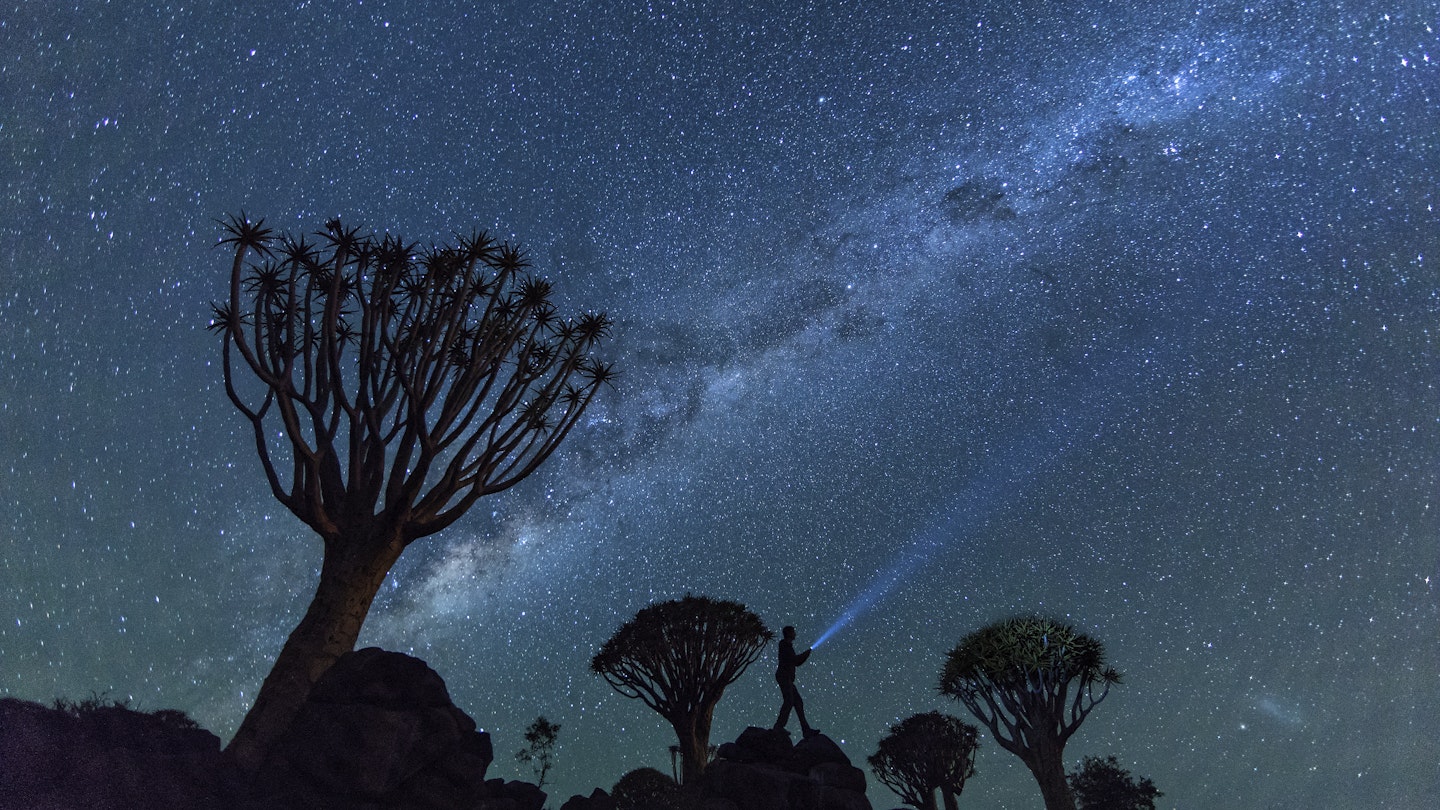
Take advantage of Namibia's dry skies for excellent stargazing © Paul & Paveena Mckenzie / Getty Images
With its famously clear skies and abundant sunshine, Namibia is a wonderful destination at any time of year. The weather is almost always good – the ever-present sunshine is even highlighted on the national flag – and most areas of the country are accessible year-round.
Yet, depending on your interests, it’s worth putting some thought into the timing of your trip. Hiking is best planned for the cooler winter months from May to October to avoid the summertime heat, while coastal exploration is easier in the summer, from December to March, when winds are gentler and there is less fog.
Whatever draws you, plan the perfect time for your visit with this guide to Namibia’s seasons and events.
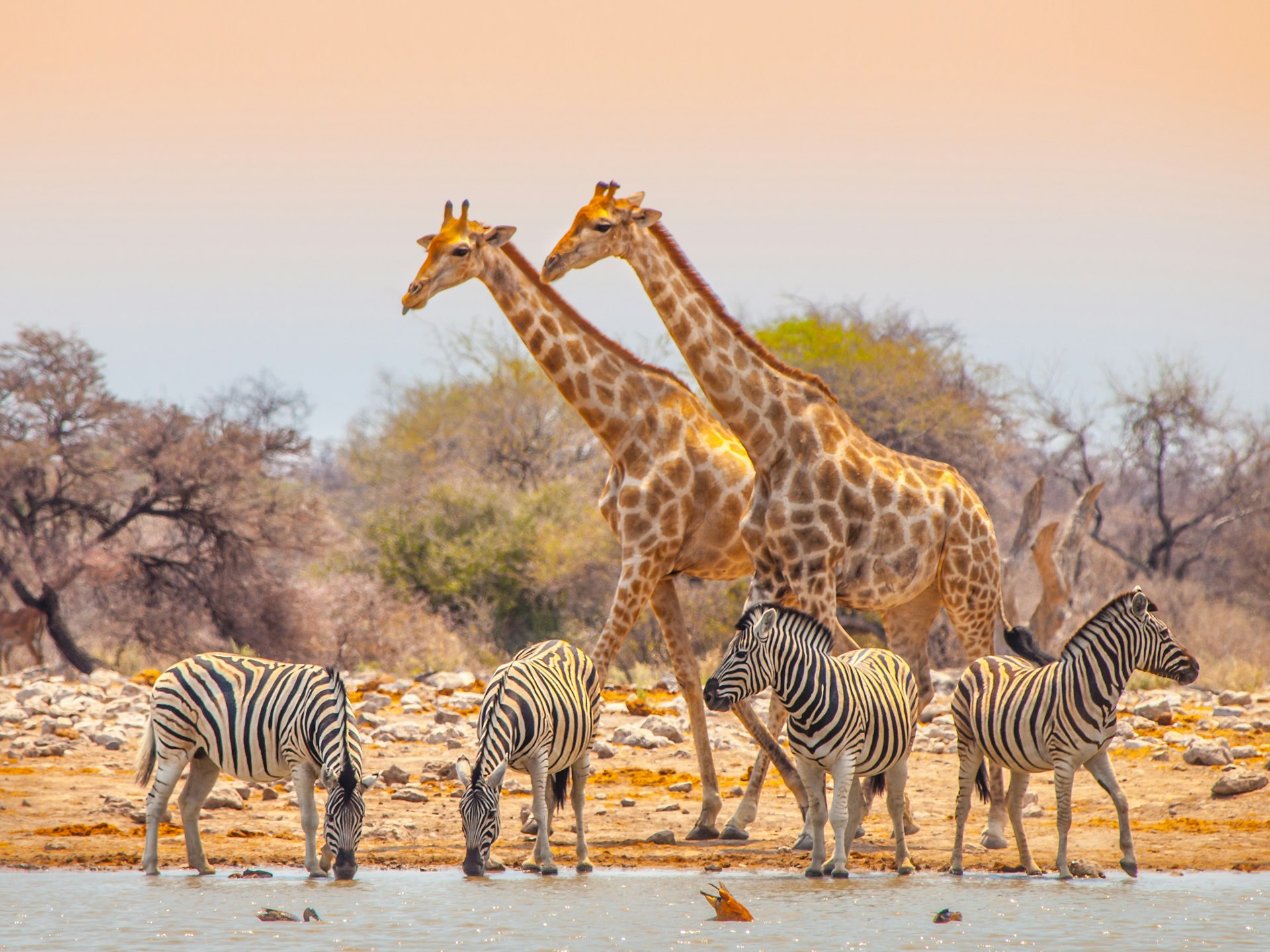

June to October is the best time for safaris and for visiting Sossusvlei
Cloudless daytime skies, clear, cold nights and almost no likelihood of rain are the hallmarks of Namibia’s wintertime, from June to October. Inland, temperatures average between 19ºC and 24ºC (66ºF to 75ºF) during the day, while from June to August, nighttime temperatures in the desert and at altitude generally sit below 10ºC (50ºF) and sometimes drop below freezing.
The cooler high season is also the dry season, so foliage is less dense and animals can be easily spotted as they congregate around scarce water sources. This is a fine time of year for wildlife watching at Etosha National Park , and safari camps fill up. On the coast, winds can be stiff and the shoreline is often blanketed by a thick morning fog, although this generally burns off before midday.
If you're thinking of scaling the dunes around Sossusvlei , June through August are ideal months, as temperatures are at their coolest and the sands not as searingly hot.
In delightful October, with winter definitively over, Namibia's jacaranda trees burst into bloom. They are especially lovely in Windhoek and the northern town of Tsumeb, where streets are shaded by lavender-hued canopies and carpeted with the fallen blossoms.
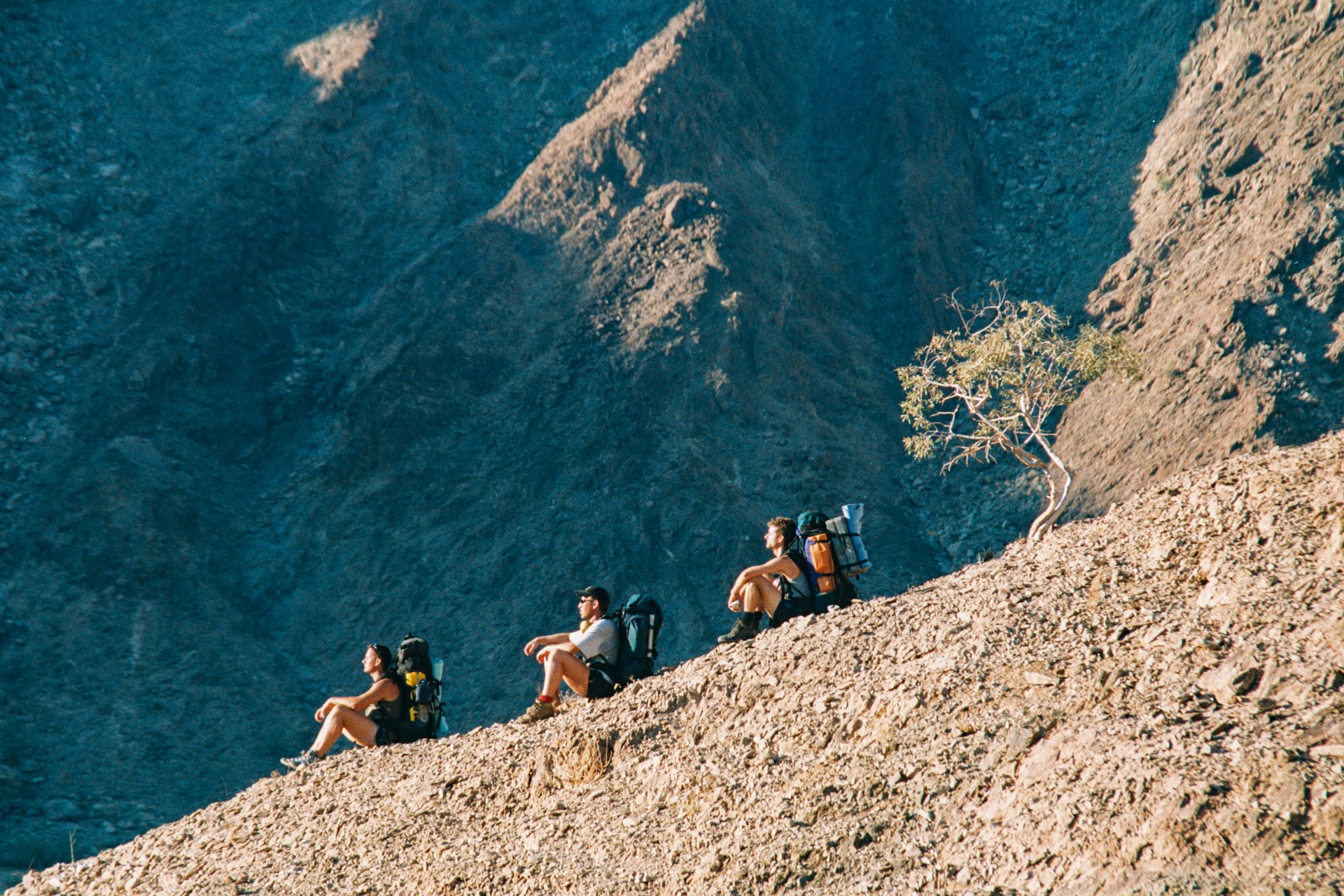
April, May and November are best for shoulder-season discounts and exploring away from the crowds
April and May are lovely times to be in Namibia. Much of the country is covered in shades of vivid green, the rains have washed away the late dry-season dust and the air is exceptionally clear. Daytime temperatures range from 24ºC to 28ºC (75ºF to 82ºF). Apart from the Easter holidays, safari camps are generally not full.
In November, daytime temperatures can exceed 30ºC (86ºF) as the thirsty land eagerly awaits the return of the rains. Wildlife watching is ideal, with plenty of animals visible, but without the crowds of July and August. Many lodges and camps in national parks and private reserves offer discounted rates. Birding also starts to peak at this time, as migrant species make their way into the region.
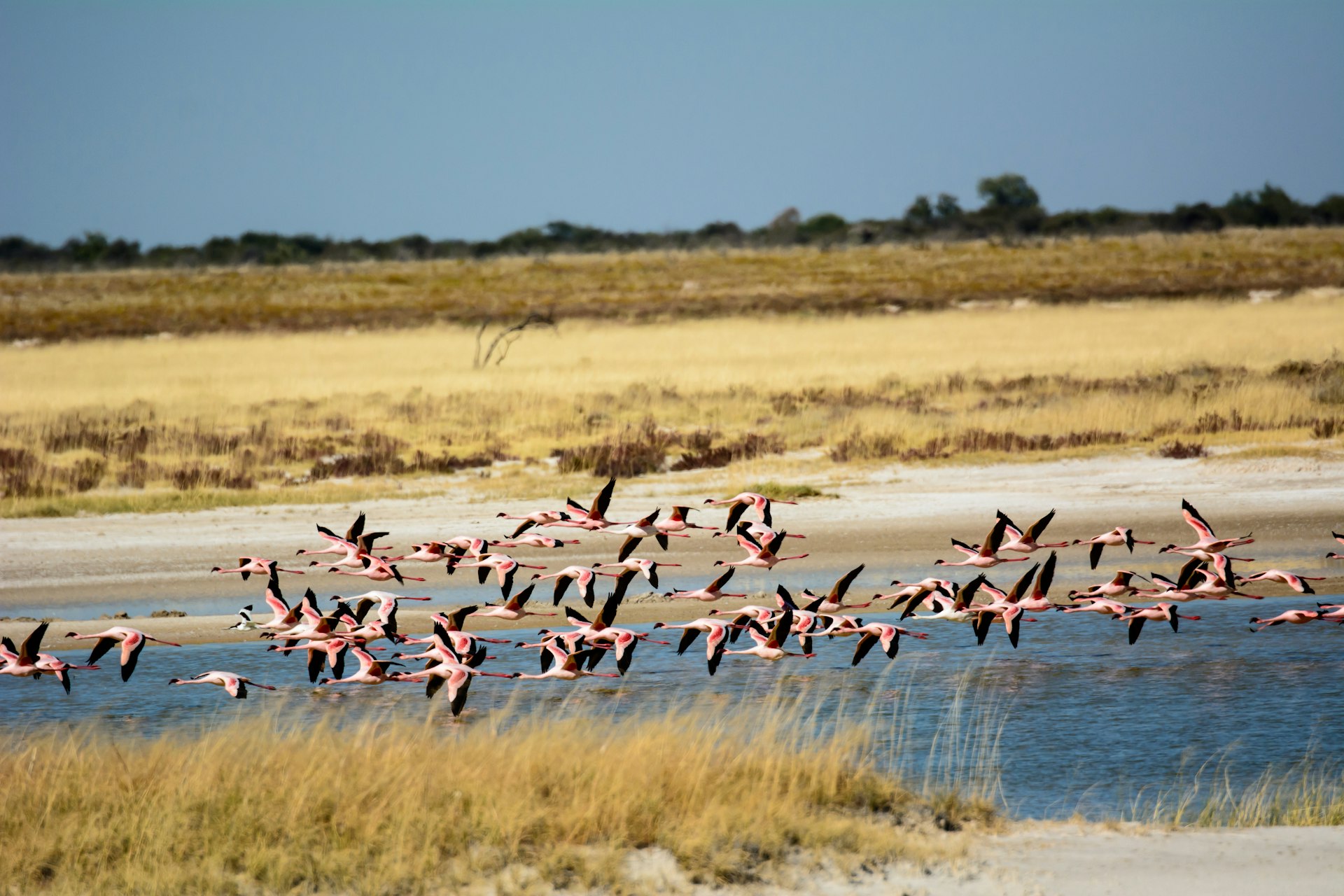
December to March is the best time for coastal travel and birding
Along the coast, the Namibian summer is marked by a holiday vibe, pleasant conditions and opportunities galore for a braai (barbeque). Sea breezes provide refreshing relief from the inland heat, and there is less fog and wind than in the winter months.
With the advent of the rains, birding in Etosha National Park and countrywide reaches its prime. Around February, flamingos gather by the thousands in Etosha pan to breed – a magnificent sight. While Etosha’s wildlife is widely dispersed and can be difficult to spot, the park has its own appeal at this time, with no crowds apart from the Christmas-New Year period.
Although the summer months are the wettest time of year in Namibia, downpours are mostly limited to late afternoons and evenings. Unpaved roads, especially in the far north and in the waterway-laced Zambezi region, can become difficult to traverse, but otherwise, rain does not usually interfere with travel.
Temperatures are high everywhere, especially in the far south. In the Fish River Canyon , the mercury can soar to above 40ºC (104ºF), and the canyon hiking trail is closed.
Namibian Independence Day on 21 March heralds the end of summer, as the skies clear and migrant birds prepare to depart.
Wherever you travel, keep in mind that accommodation - especially on the coast and in Etosha National Park - fills up during the December and January school holidays; advance bookings are recommended.
This article was first published September 2022 and updated October 2023
Explore related stories
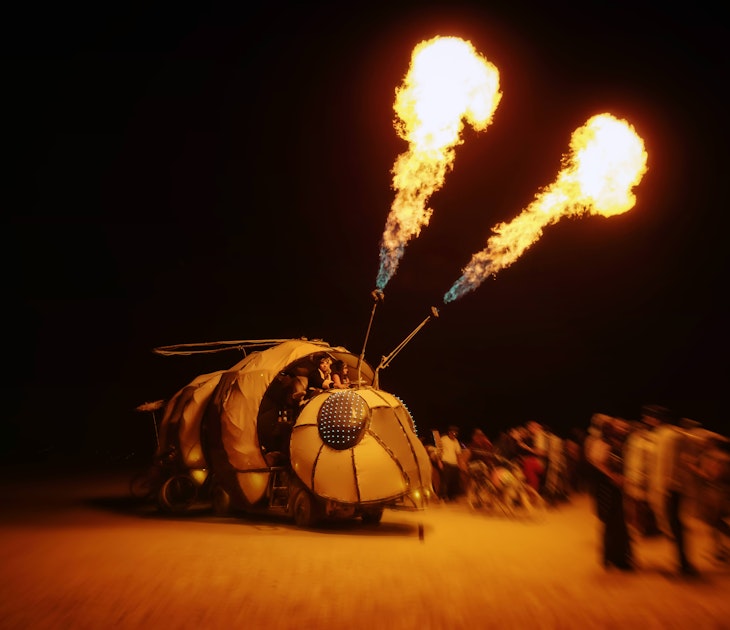
Jan 2, 2023 • 12 min read
Want to start planning for the year ahead? Featuring sports events, natural phenomena and more, these are 20 amazing trips to consider taking in 2023.

Mar 20, 2024 • 8 min read

Feb 20, 2024 • 17 min read
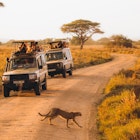
Dec 8, 2023 • 4 min read
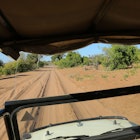
Oct 27, 2023 • 8 min read
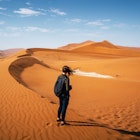
Oct 26, 2023 • 3 min read
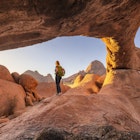
Oct 23, 2023 • 7 min read

Oct 22, 2023 • 7 min read
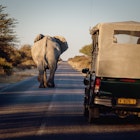
Oct 21, 2023 • 5 min read
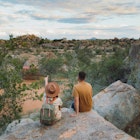
Oct 19, 2023 • 6 min read
- You are here:
- Countries & Parks
- Namibia Travel Guide
- Best Time To Visit

Namibia Travel Guide Namibia
- Parks & Reserves
- Weather & Climate
- Popular Routes
- Getting There
- Malaria & Vaccinations
Best Time To Visit – Namibia

Anthony is a renowned Africa expert and author of many Lonely Planet guidebooks, including the 'Botswana & Namibia' guide.
Anthony is a renowned Africa expert and author of the 'Botswana & Namibia' Lonely Planet guide.
Anthony is the author of the 'Botswana & Namibia' Lonely Planet guide.
The best time to visit Namibia is in the Dry season from June to October, although it can be visited throughout the year. Wildlife viewing in all parks, but especially in Etosha, is best in the Dry season. The climate is generally dry and pleasant. Between December and March, some days will be humid and rain may follow, often in localized, afternoon thunderstorms. In the Wet season, animals move away from the waterholes and scatter around the park.
May to October – Dry Season – Winter
- Wildlife congregates around rivers and waterholes, making animals easier to spot – it is the best time to visit Etosha
- There are no clouds, it's sunny, and there is virtually no rain
- Even though most tourists visit during the Dry season, the parks still don't feel crowded, except for Etosha
- It gets cold at night and in the mornings – it's advisable to pack warm winter clothing during June, July and August for the cold morning game drives
Wildlife Photos

November to April – Wet Season – Summer
- After the rains, the scenery is greener and the rates are lower, because it's low season
- This is the time of the year you can see newborn animals – migratory birds are present, and birding is at its best
- Rains are mostly short showers in the afternoon and rarely have a negative impact on your trip
- It gets very hot from October to February
- It's more difficult to spot animals – this is especially true for Etosha

Best Time To Go by Major Park
If seeing wildlife is your main objective, the best time to visit all parks, especially Etosha, is in the Dry season from May to October. Namibia is a scenic country and can be visited throughout the year. The colors will be most vibrant during and after the Wet season. October to February can be unpleasantly hot.
- Etosha National Park Etosha National Park Poor "> Jan J Poor "> Feb F Poor "> Mar M Fair "> Apr A Fair "> May M Good "> Jun J Excellent "> Jul J Excellent "> Aug A Excellent "> Sep S Good "> Oct O Fair "> Nov N Poor "> Dec D
- Namib-Naukluft NP Namib-Naukluft National Park Good "> Jan J Good "> Feb F Good "> Mar M Good "> Apr A Excellent "> May M Excellent "> Jun J Excellent "> Jul J Excellent "> Aug A Excellent "> Sep S Good "> Oct O Good "> Nov N Good "> Dec D
- Skeleton Coast NP Skeleton Coast National Park Excellent "> Jan J Excellent "> Feb F Excellent "> Mar M Good "> Apr A Good "> May M Good "> Jun J Good "> Jul J Good "> Aug A Good "> Sep S Excellent "> Oct O Excellent "> Nov N Excellent "> Dec D
Want To Visit Namibia?
133 Namibia Safaris
- Namibia Family Safaris
- Namibia Camping Safaris
- Namibia Private Safaris
- Tour Operators for Namibia
Safari Tours to Namibia

14-Day Namibia Flying Safari
$18,646 to $27,407 pp (USD)
Namibia: Private tour Luxury Lodge & Tented Camp
You Visit: Windhoek (Start) , N/a'an ku sê (Wildlife Sanctuary) , Kulala, Skeleton Coast NP, Kaokoland, Etosha NP, Windhoek (End)
Wayfairer Travel
4.9 /5 – 149 Reviews

3-Day Etosha Guided Camping Safari Experience
$643 pp (USD)
Namibia: Shared tour (max 6 people per vehicle) Budget Camping
You Visit: Windhoek (Start) , Etosha NP, Windhoek (End)
People Tours And Safari
5.0 /5 – 25 Reviews

14-Day Namibia Breathtaking Adventure Tour
$5,720 to $5,940 pp (USD)
Namibia: Private tour Mid-range Lodge & Tented Camp
You Visit: Windhoek (Start) , Kalahari Desert, Sossusvlei (Sand Dunes) , Namib-Naukluft NP (Namib Desert) , Swakopmund (City) , Twyfelfontein (Rock Art) , Damaraland, Kunene Region, Epupa Falls (Kaokoland) , Western Etosha, Etosha NP, Eastern Etosha, Erindi GR, Hosea Kutako Airport (End)
Kubwa Five Safaris
5.0 /5 – 122 Reviews
Best time to visit Namibia
Book your individual trip , stress-free with local travel experts
- roughguides.com
- Travel guide
- Itineraries
- Local Experts
- Travel Advice
- Accommodation
Plan your tailor-made trip with a local expert
Book securely with money-back guarantee
Travel stress-free with local assistance and 24/7 support
A semi-arid country possessing a climate generally characterized by low rainfall and low humidity , Namibia is a year-round destination, though the searing summer temperatures (October–February), which can exceed 40 degrees Celsius in some areas, deter many European visitors from holidaying at this time.
- When's the best time to visit Namibia
- What's the best month to visit Namibia?
Best time for a safari in Namibia
When is peak season in namibia, festivals and holidays in namibia, tailor-made travel itineraries for namibia, created by local experts.
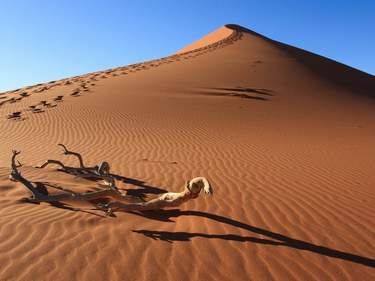
10 days / from 2600 USD
Ultimate Self Drive in Namibia
Explore Namibia on this epic, 10-day self drive trip. Highlights include the Namib, an ancient desert with towering dunes, dramatic mountains and colonial architecture at the waterfront. Additionally, you will visit the Himba people, discover Etosha National Park and more.

14 days / from 6555 USD
Epic Gondwana Adventure: Deserts, Ocean and Wilderness
Experience the best Namibia has to offer with a trip across the country, from the Kalahari to the Namib, the coast to Damaraland, ending off with an unforgettable time in the wildlife-mecca that is Etosha National Park.

8 days / from 16575 USD
Wilderness Safaris by Flight
Take convenient flights to explore the country's remote deserts, luxury lodges, safari camps, and iconic sights, from Sossusvlei's immense dunes to the rugged landscapes of Damaraland and the remote beauty of Kaokoveld.
When's the best time to visit Namibia
The peak tourist season in Namibia is in winter – June to September – which coincides with the dry season : there is virtually no rain and no clouds, so you’ll witness stunning night skies . It’s also easier to spot wildlife during these months as vegetation is sparse and animals are forced to congregate at established waterholes.
Days are sunny but average maximum daytime temperatures are more tolerable – 20–30 degrees, depending where you are – though they plummet at night: at the height of winter ( June–August ) they can drop to between 5 and 10 degrees, even dropping below zero in the desert and more mountainous areas.
The downside of visiting in the Namibian summer is that lodge prices and visitor numbers are often higher, although since the country is so vast, only Etosha , Swakopmund, and Sossusvlei get really crowded.
Start planning your trip to Namibia today! Simply get in touch with our local experts who will tailor a unique itinerary to suit all your wishes.

What's the best month to visit Namibia?
Namibia, a country known for its stunning landscapes and diverse wildlife, offers unique experiences throughout the year. However, choosing the best month to visit depends on what you want to see and do. Below, we take a look at seasonal changes, weather conditions, and different attractions to help you decide which time is right for you personally to travel to this breathtaking country in Southern Africa.
January in Namibia is characterized by a hot and humid climate, with temperatures typically ranging between 20°C and 35°C (68°F to 95°F). This time of year is characterized by high humidity and frequent afternoon thunderstorms, especially common in the northern regions. The landscape is lush and colorful, making this the best time to visit Namibia for birdwatching enthusiasts.
However, despite the attractive greenery, high temperatures and humidity can seem challenging, and rainfall can lead to mud and make some desert regions less accessible. Nevertheless, fewer tourists during this period can offer a more secluded vacation.
February continues the theme of the wet season, featuring heavy rainfall and maintaining the high temperatures seen in January, ranging from 20 to 35°C (68 to 95°F). Continued rainfall contributes to lush landscapes and an abundance of wildlife, especially birds, making this an ideal time for nature lovers.
However, the climate remains challenging: significant humidity and heat can make traveling uncomfortable. In addition, mud can limit access to some areas and activities.
As March arrives, rainfall begins to decrease, although temperatures remain relatively warm, ranging from 18 to 32°C (64 to 90°F). The decrease in rainfall makes traveling easier than in previous months: the scenery is still lush but less crowded, providing a quieter experience.
Although the weather is generally improving, heavy rains can still occur from time to time, which can affect the accessibility of some regions and outdoor activities.

Lion cubs in Etosha National Park, Namibia
April marks the beginning of the dry season, with cooler temperatures and less rainfall, ranging from 15°C to 30°C (59°F to 86°F). This month is particularly favorable for wildlife watching as animals begin to congregate near dwindling water sources, and the more temperate climate makes travel and exploration more comfortable.
However, you should be aware that evenings can become significantly cooler, requiring extra layers of clothing to keep you warm.
May in Namibia is characterized by dry weather, clear skies, and moderate temperatures, usually between 10 and 28°C (50 and 82°F). This period is among the best time to visit Namibia for wildlife watching and landscape photography due to good visibility and comfortable temperatures.
However, mornings and evenings can be quite cool, and as the tourist season begins, visitor numbers may increase in some areas.
June is characterized by cool temperatures, especially in the mornings and evenings, with daytime temperatures ranging from 7°C to 25°C (45°F to 77°F). The dry climate and clear skies create ideal conditions for outdoor activities and admire the rugged, beautiful desert scenery.
However, you should be prepared for very cold nights and realize that wildlife may be more scattered, as water is still relatively available outside of the central springs.

Waterberg Plateau, Namibia @ Shutterstock
In July , at the height of Namibia's winter, mornings and nights can be cold and daytime temperatures range between 5 and 22°C (41 and 72°F).
This is also the best time to visit Namibia as it offers some of the best game-watching opportunities, as animals are more likely to be found near waterholes and the number of tourists is lower than during the peak season. However, the very cold conditions in the early morning and late evening require warm clothing.
In August , temperatures begin to rise, marking the end of winter. Daytime temperatures typically range between 10 and 28°C (50 and 82°F). The rise in temperature means that wildlife begins to gather more frequently at water sources, providing excellent viewing opportunities.
However, it also coincides with the start of the high tourist season, leading to more crowds and potentially reducing the sense of solitude in the wilderness.
Namibia gets warmer in September , with temperatures typically ranging from 15 to 30°C (59 to 86°F), signifying the beginning of spring. This month is known for its peak conditions for wildlife watching and pleasant weather suitable for various outdoor activities.
However, it is also associated with a surge in the number of tourists, resulting in higher prices and potential crowding at popular tourist spots.

Trees and wooden boat reflected in water at sunset, Zambezi river, Namibia © EcoPrint/Shutterstock
In October , temperatures rise significantly from 20 to 35°C (68 to 95°F), marking the onset of the hot season. Wildlife can still be seen during this period, especially near bodies of water, as the heat causes animals to congregate in search of water.
However, the intense heat, especially in desert areas, can be challenging, so early morning and late evening are the best times for outdoor activities.
November brings hot weather and the start of the wet season, with temperatures ranging from 18 to 33°C (64 to 91°F). The change in climate revitalizes the scenery, with greener vistas and an increase in birdlife. However, the weather can be unpredictable and you may encounter both scorching heat and sudden downpours.
This month offers a unique perspective of Namibia as it transitions from dry to wet season, and is suitable for those looking for a combination of adventure and wildlife watching.
December in Namibia marks the full onset of the rainy season, bringing hot, humid conditions with temperatures ranging from 20 to 35°C (68 to 95°F). The rains transform the landscape, creating a lush, colorful environment and improving birdwatching conditions. However, increased humidity and the likelihood of heavy rainfall can affect travel and outdoor activity plans.
Despite these challenges, December offers less crowded vacations and the opportunity to see Namibia's rain-rejuvenated landscapes, appealing to those who prefer more secluded travel and enjoy the vibrancy of the wet season ecosystem.

Sunset in Etosha, Namibia © Lottie Gross
The best time to visit Namibia for a safari is during the dry season, from May to October, when wild animals congregate near water bodies, making them easier to spot. The weather during these months is mostly dry and cool, especially from June to August, providing comfortable conditions for game drives and outdoor activities.
Mornings and evenings can be cold, especially in desert areas, so warm clothing is recommended. The safari season peaks in September and October when temperatures begin to rise, but before the onset of the rainy season. This period offers excellent opportunities for game viewing, but it is also the time when the largest number of tourists are seen.
If you still want to avoid the crowds of tourists and also get good wildlife-watching opportunities, May and June are ideal, offering a balance between pleasant weather and animal visibility.
The peak tourist season in Namibia runs from July to October, coinciding with the dry winter months. During this period, the weather is mostly pleasant, with warm days and cool nights, making it ideal for wildlife watching and outdoor activities.
Tourist numbers peak, especially in popular destinations such as Etosha National Park and the Namib Desert, due to the excellent game-watching conditions and comfortable climate. Hotel accommodations and tours can be booked in advance, so if you are going to visit the country during these months, advance planning is recommended.

Oshanas, Namibia @ Shutterstock
Bank Windhoek Arts Festival
February–September. Windhoek . Annual festival of the visual and performing arts in venues across the capital, which climaxes in September. Includes the national Triennial Visual Arts competition, in which prize-winning works are exhibited.
Enjando Street Festival
March. Central Windhoek. Also known as Mbapira, this festival sees a two-day extravaganza of music, dance and colourful costumes, attracting groups from all over Namibia.
Sunday closest to Aug 23. Okahandja. Colourful Herero costumes, poetry and military parades remember those who died in the resistance against the German army.
Küste Karneval
August. Swakopmund. Annual German street carnival involving parades, food stalls and plenty of partying for adults and kids.
Lusata Festival
Last week of September. Chinchimani Village, 6km from Katima Mulilo. The annual traditional cultural celebration of the Mafwe people that takes place in the village of the tribal chief, Chinchimani Village, and attracts Mafwe from outside Namibia too.
Oruuano of Namibia Arts Festival
September & November. Soweto Market, Katutura. Organized by the Oruuano Namibian Artists’ Union, involving lots of dance and music.
Windhoek Show
First week of October. Windhoek. The country’s main agricultural and industrial trade fair, accompanied by funfair entertainment, live music and food stalls.
Oktoberfest
Last week of October. Windhoek. A German import, the Oktoberfest draws an international crowd, complete with beer-swilling, games, Lederhosen, Dimdl dresses and oompah bands.
The Rough Guides to Namibia and related travel guides
In-depth, easy-to-use travel guides filled with expert advice.
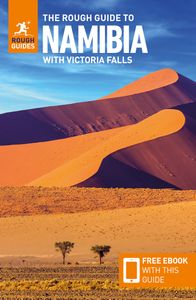
Travel advice for Namibia
From travel safety to visa requirements, discover the best tips for traveling to Namibia
- Eating and drinking in Namibia
- Getting around Namibia: Transportation Tips
- Going on safari
- Sports and Outdoor activities in Namibia
- How to get to Namibia
- Travel Health Namibia
- Travel Tips Namibia for planning and on the go
Find even more inspiration here

written by Rough Guides Editors
updated 25.04.2024
Ready to travel and discover Namibia?
Get support from our local experts for stress-free planning & worry-free travels.
- Where to stay
- Travel advice
Change location
- UK / International
- Call toll-free tomorrow from 10am EDT
- 617-223-4521 617-223-4320 or
- REQUEST A QUOTE
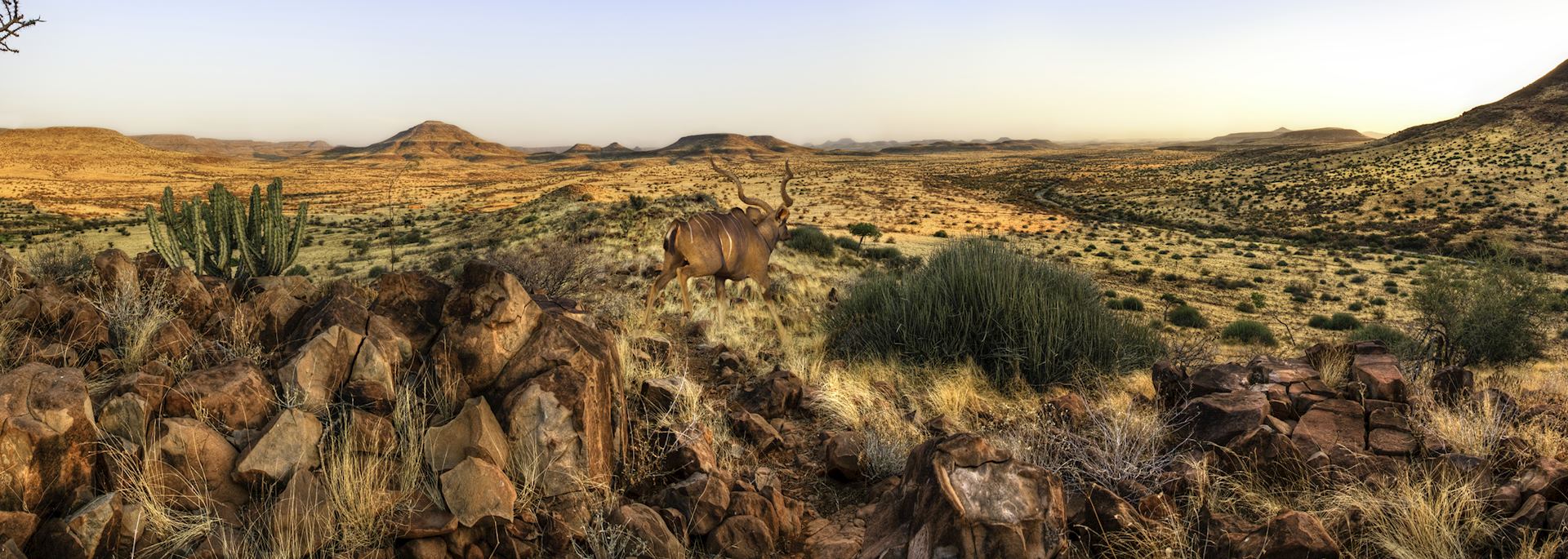
When is the best time to visit Namibia?
- Month-by-month
The best time to visit Namibia is from July to October, when the temperatures are just above 70°F and the chance of rain is low. This is also the best time for wildlife viewing, making it peak travel season — you will need to plan well in advance.
The Northern Hemisphere summer is warm and sunny, albeit with cold nights, while during the winter Namibia is hot with the chance of spectacular thunderstorms. However, it’s a predominantly dry country, where deep orange sand dunes contrast with cobalt skies.
- Make an inquiry
- Request a brochure
Month-by-month guide for traveling in Namibia
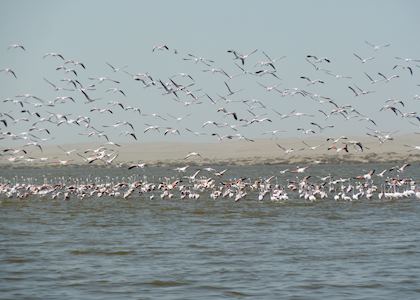
Visiting Namibia in January
This is mid-summer in Namibia. It tends to be hot and humid, with maximum temperatures hitting around 86°F to 95°F; reaching up to 104°F in the desert. There may be torrential downpours in the afternoon, but not every day. Mornings are usually clear, with the rain falling in the late afternoon.
Events & Festivals
- Birdwatching in the Caprivi Strip (November to February): The Caprivi Strip is at its best during the summer months, when there are fantastic birdwatching opportunities, with more than 450 species recorded in the area.
- Flamingos gather (November to February): The summer months are the best time to see a flamboyance of flamingos, where they gather on lagoons in their thousands in Swakopmund.
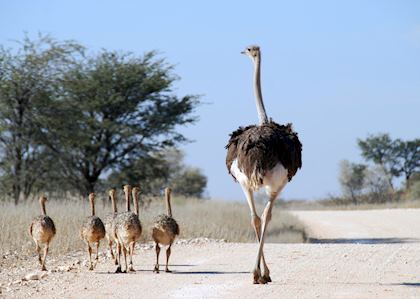
Visiting Namibia in February
Very similar to January, with hot, humid days and the chance of the occasional downpour in the afternoons.
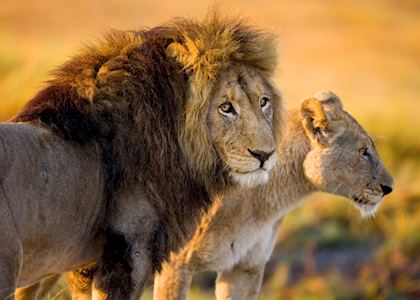
Visiting Namibia in March
Rainfall starts to decrease and temperatures lower after the rains. The nights start to get cooler again, with temperatures falling to around 59°F, although during the day this rises to around 86°F, making for pleasant conditions.
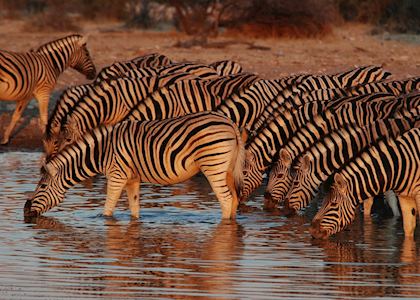
Visiting Namibia in April
The rain should have stopped by April and daytime temperatures should drop to around 77°F. Expect lows of around 55°F at night, although it can be cooler in the desert.
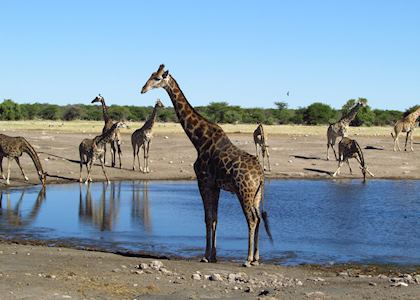
Visiting Namibia in May
May is the beginning of Namibia's winter. There is little to no rainfall during the winter and humidity is low. Wildlife will start to gather around the waterholes when rivers and other water sources dry up.

Visiting Namibia in June
The nights are getting cold and temperatures can drop to below 50°F, while in the desert areas it can get to freezing. Daytime temperatures are pleasant however, with blue skies and temperatures in the 70°Fs.
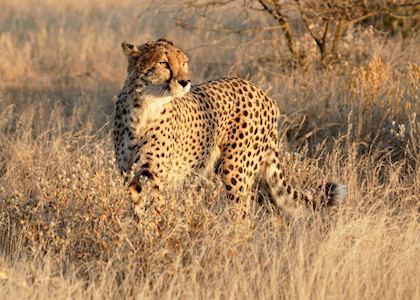
Visiting Namibia in July - August
July and August are the main winter months. Be sure to pack warm clothing because game drives in open vehicles can be chilly. The maximum temperature is around 70-77°F. At night it will be around 45°F, but it can drop to below freezing in the desert.
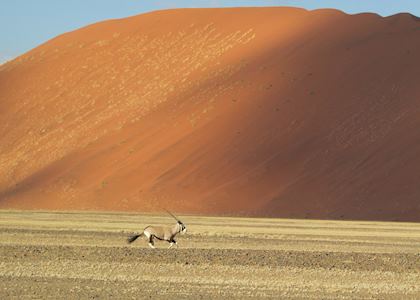
Visiting Namibia in September
September is a lovely month and considered the best time to travel to Namibia. It isn't yet too hot, but the humidity is still low, keeping it very pleasant. It is dry and the skies are clear.
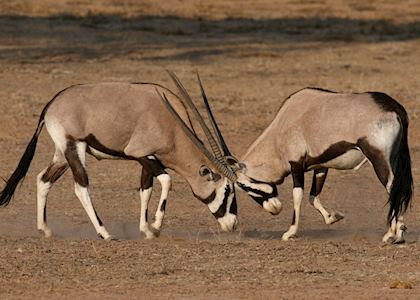
Visiting Namibia in October
During October the green vegetation is fading and the heat gradually builds up. This is a very good time for game viewing because the country is so dry. Temperatures during the day can reach 84°F and it gets even hotter in the desert.
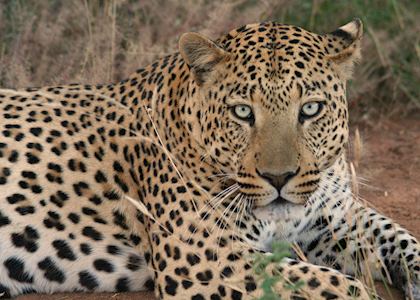
Visiting Namibia in November
The heat continues to rise by November and it will be very hot; although humidity is still low. On average, daytime temperatures are above 86°F. Clouds start to build in the afternoon, bringing a chance of rain.
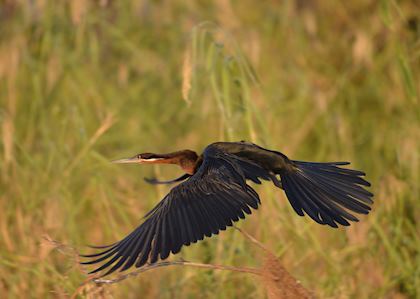
Visiting Namibia in December
The first rains usually arrive in December, and with it the temperature drops. The landscape changes after the first rains as everything comes to life, and the animals start to disperse as more water sources become available.
Namibia Climate Guide
More choice for your safari.
- Inspiration across all our African destinations
- Trip suggestions based on your interests
- Advice on where to safari, when
- Meet our team of safari experts

Travel advice
Practical tips for traveling to Namibia, from social protocols to guidance on money matters, with a link to the latest US State Department travel advice.

Request our brochure
Covering all seven continents, The World Your Way shows you how you can see the world with us. It features trip ideas from our specialists alongside hand-picked stays and experiences, and introduces our approach to creating meaningful travel experiences.
Trip ideas and travel guides for exploring Namibia
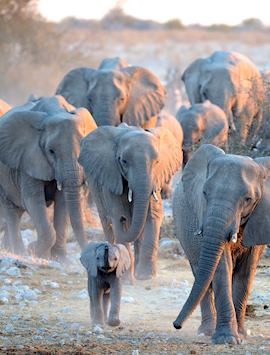
Northern Namibia self-drive safari to Victoria Falls
15 days from $7,630pp
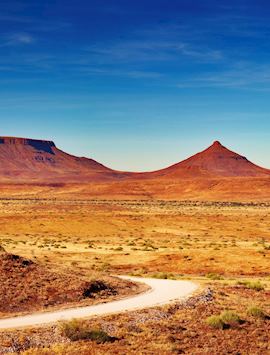
Namibia's highlights by private escorted tour (non self-drive)
13 days from $10,705pp

Namibia safaris
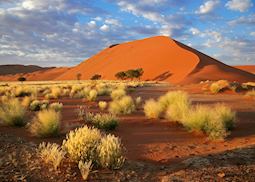
What to do in Namibia: our highlights guide
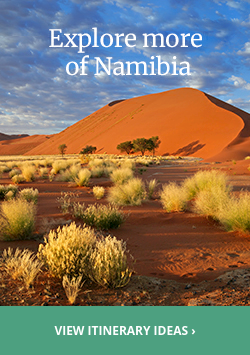
The Best Time to Visit Namibia for Weather, Safety, & Tourism
The best times to visit Namibia for ideal weather are
March 26th to May 27th
August 20th to october 14th.
based on average temperature and humidity from NOAA (the National Oceanic and Atmospheric Administration). Read below for more weather and travel details.
Namibia Travel Guide
Temperature.
- Perceived Temperature
- Rain and snow
- Humidity and wind
- The busiest and least popular months
- Overall travel experience by time of year
Other Namibia Travel Info
Weather in namibia.
Average temperatures in Namibia vary somewhat. Considering humidity, temperatures feel very enjoyable all year with a very low chance of rain or snow throughout the year. The area is more temperate than most — in the 76th percentile for pleasant weather — compared to tourist destinations worldwide. Weeks with ideal weather are listed above . If you’re looking for the very warmest time to visit Namibia, the hottest months are November, March, and then January. See average monthly temperatures below. The warmest time of year is generally early March where highs are regularly around 88.6°F (31.4°C) with temperatures rarely dropping below 67°F (19.4°C) at night.
Namibia Temperatures (Fahrenheit)
Namibia temperatures (celsius), “feels-like” temperatures.
The way we experience weather isn’t all about temperature. Higher temperatures affect us much more at higher humidity, and colder temperatures feel piercing with high winds. Our perceived temperatures factor in humidity and wind chill to better represent how hot or cold the day feels to a person.
Namibia Perceived Temperature (F)
Namibia perceived temperature (c), average namibia temperatures by month.
Daily highs (averaged for the month) usually give the best indication of the weather. A significantly lower mean and low generally just means it gets colder at night.
Show Fahrenheit
Show celsius, precipitation (rain or snow).
If dry weather is what you’re after, the months with the lowest chance of significant precipitation in Namibia are July, June, and then August. Note that we define “significant precipitation” as .1 inches or more in this section. The lowest chance of rain or snow occurs around late May to early June. For example, on the week of May 28th there are no days of precipitation on average. By contrast, it’s most likely to rain or snow in early February with an average of 1 days of significant precipitation the week of February 5th.
Chance of Precipitation
The graph below shows the % chance of rainy and snowy days in Namibia.
Snow on the Ground
The graph below shows the average snow on the ground in Namibia (in).
Average Rain and Snow by Month
Show inches, show centimeters, humidity and wind.
Namibia has some comfortably humid months, and dry months in the opposite season. The least humid month is August (24.8% relative humidity), and the most humid month is February (53.1%).
Wind in Namibia is usually calm . The windiest month is November, followed by September and January. November’s average wind speed of around 6.1 knots (7.1 MPH or 11.4 KPH) is considered “a light breeze.” Maximum sustained winds (the highest speed for the day lasting more than a few moments) are at their highest in mid October where average top sustained speeds reach 11.4 knots, which is considered a moderate breeze.
Relative Humidity (%)
The graph below shows the average % humidity by month in Namibia.
The graph below shows wind speed (max and average) in knots.
Average Wind Speeds
Show wind speeds.
All wind speeds are in knots. 1 knot = 1.15 MPH or 1.85 KPH.
Show Relative Humidity by Month
Is it safe to travel to namibia.
Our best data indicates this area is somewhat safe. As of Dec 04, 2023 there are travel warnings for Namibia; exercise a high degree of caution. Check this page for any recent changes or regions to avoid: Travel Advice and Advisories . This advisory was last updated on Nov 29, 2023.
The Busiest and Least Crowded Months
The busiest month for tourism in Namibia is September, followed by April and August. Prices for hotels and flights will be most expensive during these months, though you can save if you purchase well in advance. Tourists are unlikely to visit Namibia in October. Those willing to visit at these times will likely find it the least expensive month.
Estimated Tourism by Month
Most popular months to visit, overall namibia travel experience by season, fall (march through may).
Humidity and temperatures combine to make this season feel warm. Highs range from 86.5°F (30.3°C) and 76.9°F (24.9°C) with colder temperatures in the later months. Rain is extremely rare with 0 to 1 days of significant precipitation per month. Fall is the busiest for tourism, which makes it a good time for those looking for things to do.
Winter (June through August)
The middle-year months have comfortably cool weather with high temperatures that are comfortable. These months see the least precipitation with about 0 days of precipitation per month. June – August is fairly slow season for tourism in Namibia, so lodging and other accommodations may cost slightly less.
Spring (September through November)
Spring daily highs range from 88.6°F (31.4°C) and 83.4°F (28.6°C), which will feel very nice given the humidity and wind. It rains or snows a barely noticeable amount: 0 to 1 days per month. Tourism is the slowest during these months due to the weather, so hotels may be affordably priced.
Summer (December through February)
Weather is perfect this time of year in Namibia to be enjoyable for warm weather travelers. The average high during this season is between 87.9°F (31.1°C) and 85°F (29.4°C). On average, it rains or snows a smalll amount: consistently 2 times per month. These times of year are the second busiest with tourists.
Best Times to Travel › Namibia
Similar Destinations
- Okahandja, Namibia
- Okosongomingo, Namibia
- Waterberg, Namibia
- Windhoek, Namibia
- Otjiwarongo, Namibia
- Omaruru, Namibia
- Karibib, Namibia
- Windhoek Rural, Namibia
- Outjo, Namibia
- Gobabis, Namibia
Popular Destinations
- Koh Phangan, Thailand
- Buzios, Brazil
- Hangzhou, China

Travel Advice
Get to know the ins and outs of travelling Namibia
NAMIBIA TRAVEL ADVICE - ALL YOU NEED TO KNOW BEFORE YOU GO
As local tour operator, we are part of your journey from planning to organising and running your Namibia trip. We have many years’ experience in ensuring that you have a smooth trip and don’t need to worry about a thing. But there are a few things you should keep in mind before traveling to Namibia. Here, we share our detailed expert travel advice for your Namibia trip.

Best time to visit
The most popular travel time in Namibia is the dry season between June and October. These months are also the best time to visit Etosha National Park. If wildlife viewing is not at the top of your list, travelling in the low season can have advantages. We share advice on the best time to travel depending on different regions and seasons.

Getting to Namibia and getting around
Windhoek is the starting point for most trips around Namibia. But which visa do you need to get here and how do you get to your next destination? Find out whether a self-drive trip, guided tour, or fly-in package is the best option for you.

Money, Travel Budget & Tips
Find out which factors determine the price of your trip, which currency to use in Namibia, and how much you should budget for tipping. It’s always better to now before you go!

Health & Safety
From road safety to malaria risk and things to consider when on safari. While Namibia is considered a safe and low-risk malaria travel destination, we share expert travel advice on how to stay safe on its lonely gravel roads and beyond.

Packing List
Just don’t pack too much! We could end our packing list here, but if you want to know a few more details on what to bring to Namibia and in which type of bag to put it all, study our packing list and travel packing advice.
NAMIBIA AT A GLANCE
824,292 km² (318,261 sq mi)
ca. 2.23 Million
Important city for tourist activities
Official languages.
English is the official language of Namibia; but other frequently spoken languages include Oshiwambo, Khoekhoegowab, Afrikaans, RuKwangali and Otjiherero.
Namibia Dollar (NAD), South African Rand (ZAR)
Country code
The majority of the population identifies as Christian, while around 10% identify with Islam, Buddhism, or traditional beliefs.
Dry season: May – October (winter, cooler temperatures) Green season: November – April (summer, hot temperatures)
Temperature
Namibia generally has a warm and dry climate, and it doesn’t rain much. During the hot summer months, especially January and February, temperatures can climb up to 33°C and even 40°C (91°F to 104°F). Temperatures along the coast, are cooler and you can experience cold foggy mornings. Night-time in the desert can get rather cold as well.
Important airports
The main international airport and point of arrival and departure is Hosea Kutako International Airport (WDH, HKIA). Domestic airports are serviced by private charter planes. There are hardly any domestic scheduled flights.
Visa regulations
A comparably large number of nationalities do not need a visa to enter Namibia for tourist purposes. Please consult the Namibian embassy or consulate in your home country for visa advice ahead of your travels.

Experience Namibia with us
Speak to one of our local advisors, let's start planning your trip.
We will get back to you within 2 working days.

Best Time to Visit Namibia

Climate Overview

Geographical location
Climate in namibia.
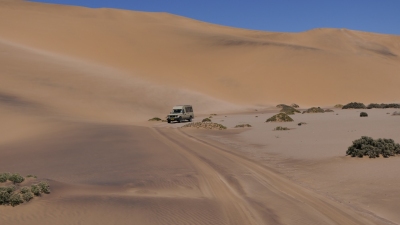

Beach Vacation in February

Best Time to Visit Namibia: Overview
When to travel to namibia, best time to visit the regions, climate charts namibia.
In the following, you will find climate charts for the regions.
Furthermore, there are some charts you can use for quick comparison of climate between the regions.
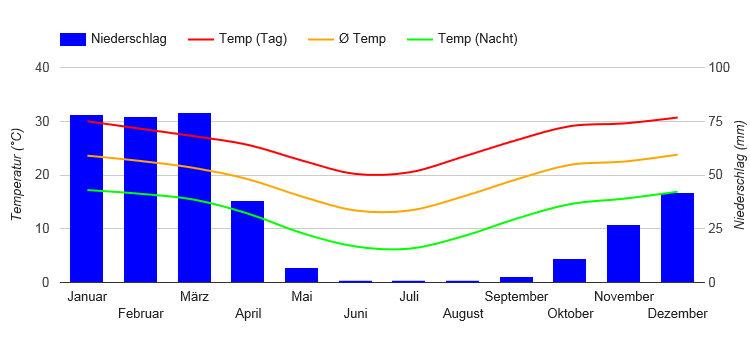
Etosha National Park
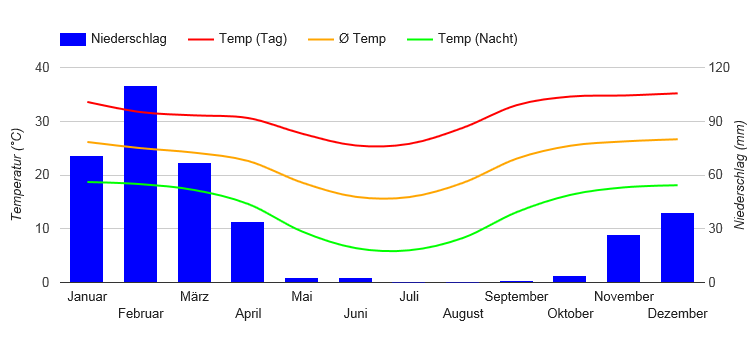
Day Temperatures
Night temperatures, average temperatures, precipitation, hours of sunshine per day.
Source of Data: German Weather Service (Offenbach) and Wikipedia
Climate Tables Namibia
Temperatures, precipitation, sunshine in windhoek (namibia), temperatures, precipitation, sunshine in walvis bay (namibia), temperatures, precipitation, sunshine in etosha national park (namibia), sights and highlights, popular activities, more attractions, current weather and forecast.
Activities and Attractions
Distances to namibia, where’s namibia, continent: africa, namibia: experiences of our visitors.

mostly warm, but not humid – occasional rain showers – at night in the desert rain conjures up great colors!
Weather Rating: 4 stars – Good

Very pleasant dry warm climate. No humidity. Good travel time for a round trip.
Weather Rating: 5 stars – Excellent

Motorcycle tour without rainwear! It was a dreamlike experience and also for not so experienced drivers feasible!
every day a bright blue sky. And a lot of nice people.

At the end of December we were on the road in the north of Namibia, which was called the worst travel time imaginable. In fact, it was extremely hot during the day, but still manageable. When we arrived in Etosha after 8 days, the first heat storms and rainfalls slowly began. However, always in the afternoon, from 3 or 4 pm. Sometimes it rained through the night, the next morning it was clear again. Overall, there were only a few restrictions for us. Overall I would describe the travel weather as good.
Share your Experience and Win
Pride of Namibia
Destinations in the vicinity ….
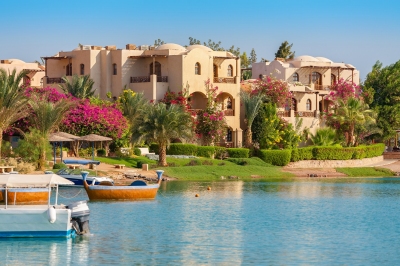
- Imprint / Privacy
- Image Sources
- +256 (0) 779 820 753
- +250 (0) 790 089 902
- [email protected] | [email protected]

Best Time to Visit Namibia: A Month-by-Month Guide
Best Time to Visit Namibia: A Month-by-Month Guide. When winter rolls around in North America and Europe, it’s summer in Namibia—just one example of how the seasons in Southern Africa are completely backwards from the northern hemisphere. If you want to go on a safari in Namibia , the best time to go is in the winter (summer in the northern hemisphere) because the animals are more visible and don’t wander too far from the few water sources left. The vegetation is also thinner and drier during this time, so it’s easier to spot them.
When Is The Best Time To Go To Namibia
Peak or high season.
Winter months of June, July, and August are the most popular since they correspond with the region’s school holidays (and, fortunately, with the northern hemisphere’s long summer vacation season). Peak season in Namibia spans from around May (fall) to October (spring). Nighttime lows, particularly in desert regions, are much lower than the warm and dry days. Tourists swarm to Etosha , Sossusvlei , and Swakopmund , three of Namibia’s most popular attractions, during this time.
Lodges, campgrounds, and hotels in Namibia are on the smaller side, so there won’t be a lot of people and cars jammed together. This results in a delightful peak season, but it also means that if you want to travel during this period, you’ll need to book your accommodations well in advance. Travellers who leave it till the last minute may discover that they are completely unable to be accommodated.
Green Or Low Season
From around November to April, the desert landscape of Namibia comes to life with green pastures and millions of vibrantly coloured flowers throughout the summer months of very hot days, warm nights, and infrequent rain. Only around 65 days of the year do you typically get rain.
One of the quietest periods to visit Namibia is during low season, when you can find better rates and a greater selection of accommodations, with the exception of around mid-December to mid-January (Christmas, New Year’s, regional school vacations), and around Easter. Summer is a fantastic travel season for people who enjoy hot weather (although not all hotels have air conditioning or pools). After a long day of exerting yourself, it’s essential to take a break and relax in the shade, just like the animals do.
During the low or “green” season, animals are less common due to the summer rains. Animals have greater freedom to move due to the abundance of water, but they are more difficult to spot due to the thicker foliage. On the other hand, there are substantial benefits, such as the immense joy and fulfilment that comes from actively seeking out sightings and the abundance of infants and birds in the area. From antelopes to zebras, every migratory species is making its way south to avoid the severe winters in Europe. Many grazers are also giving birth at this time to take advantage of the plentiful food. Because predators are unable to keep up with the sheer volume of prey, the odds of survival for the newborns are much improved when mothers give birth in large groups.
If you want to escape the heat and humidity of Namibia in January and February, you should stay away from the Caprivi Strip. The gravel road here could become impassable after a big storm if it gets too muddy.
While travelling in the winter is the most weather-friendly option, it will cost you more. On the other hand, summer is hotter but cheaper. No matter when you decide to go, it’s best to get in touch with your Africa Safari Expert early so you can get your preferred accommodations, transportation, and flights .
When Is The Best Time To Visit Namibia
It is generally believed that the months of May through October, when the weather is dry, are ideal for game viewing in Namibia, particularly in Etosha National Park . As the dry season progresses, the sky is clear, the likelihood of malaria is minimal, and animals are congregating near water sources in greater numbers. In contrast to the sweltering heat of September and October, June and July can bring chilliest nights. From November to April, the country has summer rainfall, which sometimes cause desert floods and turn the landscape green.
Month By Month Guide For Travelling To Namibia:
Travelling to namibia from january to april.
The majority of the nation is experiencing high temperatures and heavy afternoon showers in this mid-summer month of January. After the summer rains, Etosha National Park becomes verdant and verdant, however it can be difficult to see animals due to the thick vegetation. Now is a great time to go bird watching, and you can’t miss the flamingos’ pink plumes. During the rainy season, it is not recommended to visit the Zambezi Region (formerly the Caprivi Strip) because it receives the highest rainfall in Namibia and the roads there are prone to flooding. An increased likelihood of malaria is also present.
The hottest, rainiest, and most humid month is February. There is a lot to do if you can stand the weather. Even though it can be difficult to sight animals in Etosha National Park during February due to the calving season, there is a chance that you may glimpse newborn babies during this period.
March sees less precipitation overall, but the weather remains hot and muggy throughout the day and gradually cools down at night. While March isn’t the ideal season to see animals in Namibia, if you’re a serious photographer, April is when you should go. The sky are clear, and the landscape is waiting to be captured.
Visiting Namibia During May And June
Many people believe that May, the beginning of winter, is the best time to visit Namibia as it is then that the country’s prime safari season begins. The weather is ideal for game drives, with minimal humidity and almost no precipitation. As rivers and other major water sources dry up and become scarce, animals begin to congregate around watering holes.
In June, the nights get progressively chillier and the temperature drops considerably; in desert regions, it drops below freezing. Clear, blue skies characterise the daytime weather, which is quite comfortable. When it doesn’t rain in Namibia , the landscape gets sparse and dry, which makes it easier to see animals on a luxury safari. Even though the game parks are still rather empty at the beginning of the month, they can get extremely busy by the month’s conclusion.
Travelling To Namibia From July To October
The game parks in Namibia, particularly Etosha National Park , are at their most pleasant in July, the driest month of the year. It is not unusual to witness large groups of animals, including gazelles, wildebeests, elephants, zebras, and giraffes, all congregating around a single watering hole during this time.
Even though it’s the dead of winter in Namibia, August is a popular tourism month, so hotel rooms tend to fill up quickly. Daytime temperatures are nice and temperate despite very cold nights, making this a great month for outdoor desert activities and animal viewing. The Ai-Ais Richtersveld Transfrontier Park is truly a sight to behold in August, when the wild spring flowers burst into bloom, covering the terrain in a lovely carpet of blossoms.
The month of September is perfect for a safari in Namibia . The weather is lovely during the day and gets progressively warmer at night. Game viewing is at its best in the month of May since the weather remains dry across the countryside.
October is the final month of winter in Namibia. Even if there’s a danger of rain and temperatures are rising, the skies are often clear, making it an ideal time to watch the stars or a sporting event. Observe southern right, minke, and humpback whales as they pass through the Walvis Bay area in October during their yearly Atlantic migration if you’re planning a coastal whale watching trip in Namibia.
Visiting Namibia During November And December
In November, the country has its first rainy season and a general cooling of the weather. During this month, the weather can be very variable, but as the rain begins to fall, you might witness some spectacular thunderstorms. Thousands upon thousands of flamingos, each with a brilliant pink plume, congregate around lagoons at Swakopmund from November till around February.
Etosha National Park is at its best in December for wildlife watching, with excellent chances of seeing kudu, rhino, elephant, and lion. Since migratory birds start to arrive with the wet season, summer is the best time to visit Namibia if you want to go bird watching. Many people travel to Namibia for an end-of-year safari vacation during this busy time of year due to school holidays and the Christmas season.
Ready To Start Planning Your Trip To Namibia
Go on a conversation with an experienced soul. To create the perfect Namibia vacation, speak with one of our Africa Safari Experts.

This website uses cookies to ensure you get the best experience on our website. Learn more
- Australian Dollars
- British Pounds
- Canadian Dollars
- New Zealand Dollars
- South African Rands
- Swiss Francs
- U.S. Dollars
Talk to an expert +44 203 405 6666 Lines now closed
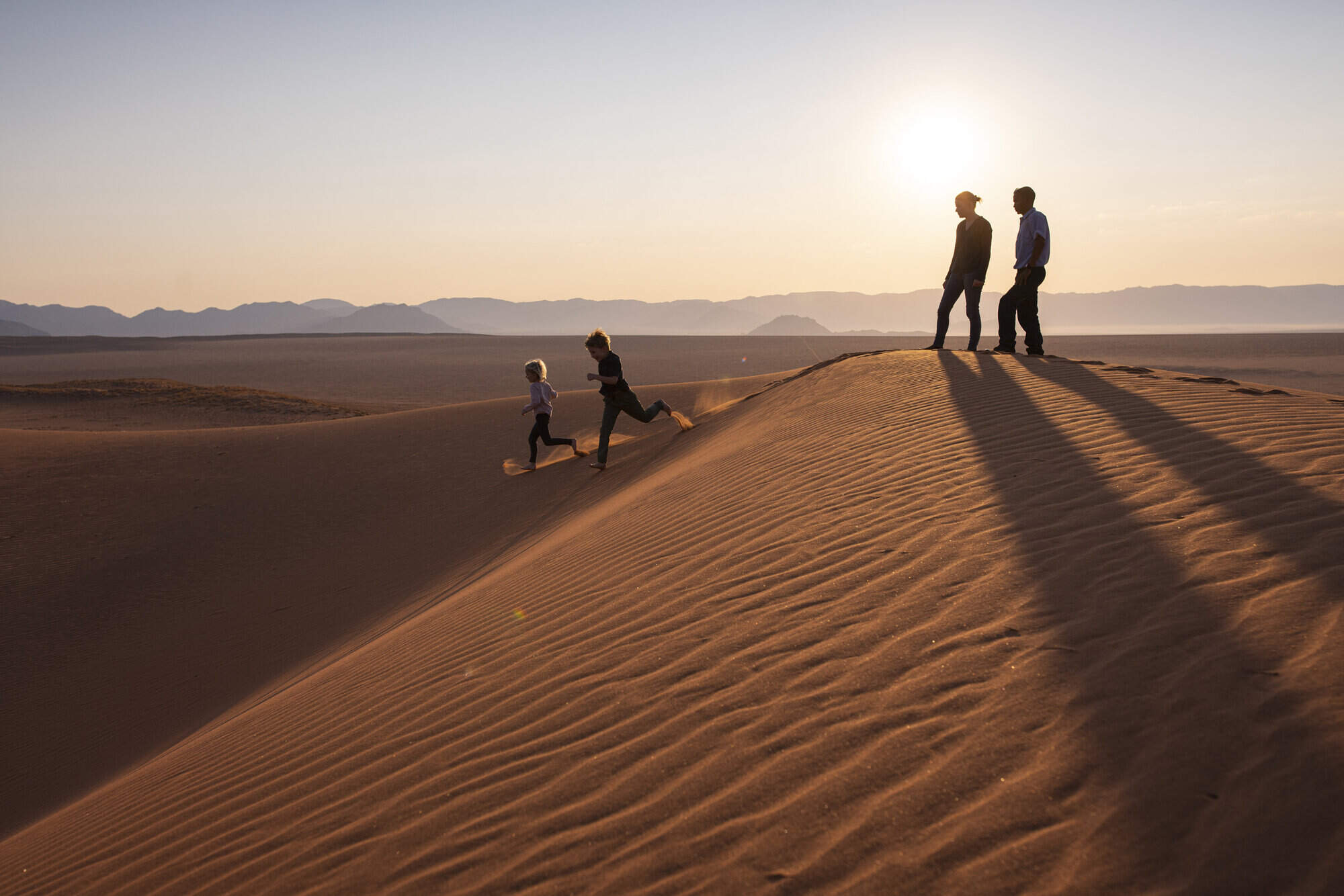
Weather & climate
Namibia: Weather & climate
The best time to visit namibia, weather in other african countries.
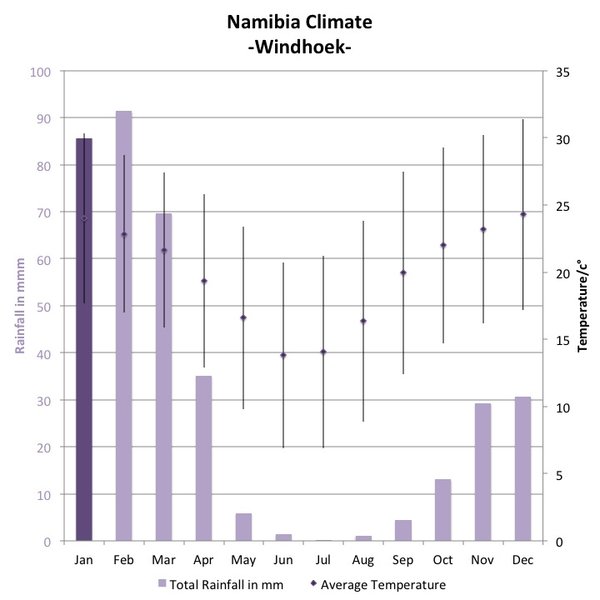
January : a rainy month with high humidity levels.
February : one of Namibia's wettest months of the year; great for bird-watching.
March : the third and last month of the rainy season is wet and humid.
April : a very fresh, green month; some rain but also lots of clear weather.
May : a favourite month: the landscape is usually beautiful and green, the air very clear.
June : a dry month with very little chance of rain. Warm days but cold nights.
July : nights can be cold, but the days are warm and clear.
August : a lovely and dry month, but temperatures can still plummet at night.
September : dry, warm days and cold nights gradually heat up as the month progresses.
October : one of the the hottest and driest months of the year.
November : very variable: maybe hot and dry, but with showers looming towards the end.
December : an unpredictable month during the transition from dry to rainy season.

Need inspiration?
Let our trip chooser narrow down the options for you
Login to Expert Africa
Sign in with password
Sign in with email link
New to Expert Africa? Create an account
Forgotten your details?
It's free & quick to set up
- Save your wish-list
- Send us an enquiry
- Pay online for your trip
- Subscribe to our newsletter
- Give us feedback on your trip
- Full site benefits of the site
Need some help? Talk to our team
Winter is here! Check out the winter wonderlands at these 5 amazing winter destinations in Montana
- Travel Destinations
- Africa & Middle East
The Best Time To Travel To Namibia
Published: October 11, 2023
Modified: December 28, 2023
by Joy Gentile
- Plan Your Trip
- Travel Tips
Introduction
Namibia is a fascinating country located in southwestern Africa, known for its stunning landscapes, diverse wildlife, and rich cultural heritage. Whether you are an adventure seeker, nature lover, or history enthusiast, Namibia offers countless experiences that will leave you in awe. When planning your trip to this incredible destination, it’s important to consider the best time to visit.
The climate and weather in Namibia vary throughout the year, and understanding the different seasons can greatly enhance your travel experience. From peak season to shoulder season and off-peak season, each period offers its own unique advantages and considerations.
It’s worth noting that Namibia experiences a desert climate, characterized by hot days and cool nights. The country is also home to a large portion of the Namib Desert, one of the oldest deserts in the world. The diverse topography of Namibia contributes to a range of microclimates, creating distinct weather patterns in different regions.
So, when is the best time to travel to Namibia? The answer depends on your preferences and the experiences you are seeking. Whether you want to embark on a thrilling safari adventure, explore the mesmerizing sand dunes, or immerse yourself in the local culture and festivals, there is a season that suits your travel needs.
Climate and Weather in Namibia
Namibia experiences a dry desert climate, characterized by hot days and relatively cooler nights. The country is known for its extreme temperature fluctuations and low annual rainfall. The diverse geography of Namibia influences its weather patterns, creating distinct microclimates across different regions.
The coastal areas, such as Swakopmund and Walvis Bay, are influenced by the cold Benguela Current, resulting in cool summers and mild winters. These regions experience foggy conditions in the morning, which creates a unique atmospheric phenomenon.
Inland, Namibia is dominated by the Namib Desert, where the temperatures can reach scorching highs during the day and drop significantly at night. The central plateau, including the capital city of Windhoek, has a more temperate climate with hot summers and cool winters.
The rainy season in Namibia occurs during the summer months from November to April. However, rainfall is generally limited and sporadic, and it varies significantly across the country. The northern regions receive more rainfall than the southern parts, with the Caprivi Strip being the wettest area of the country.
It’s important to note that Namibia experiences a significant temperature difference between day and night, commonly referred to as a diurnal temperature range. This can range from 15 to 25 degrees Celsius, making layering clothing essential to adapt to the changing temperatures throughout the day.
When planning your trip to Namibia, it’s essential to consider the climate and weather conditions in the specific regions you wish to visit. This will help you pack the appropriate clothing and plan activities accordingly. Whether you’re exploring the desert landscapes, venturing into national parks, or enjoying coastal adventures, being prepared for the weather will ensure a comfortable and enjoyable trip.
Peak Season
The peak season in Namibia falls between June and October, which coincides with the country’s dry winter months. This period is considered the best time to visit for wildlife enthusiasts and photographers, as the vegetation is sparse, making it easier to spot animals congregating around waterholes.
During the peak season, the temperatures are comfortable during the day, ranging from 20 to 30 degrees Celsius (68 to 86 degrees Fahrenheit). While the days are warm, the nights can be quite chilly, especially in desert regions, so it’s important to pack warm clothing.
One of the highlights of visiting Namibia during the peak season is the opportunity to witness the spectacular wildlife found in the country’s national parks. Etosha National Park is particularly popular during this time, as animals gather around the waterholes, offering exceptional game viewing experiences.
Due to its popularity, it’s advisable to make accommodation and safari reservations well in advance during the peak season. Campsites and lodges can fill up quickly, and availability may be limited. Booking early ensures you secure your preferred accommodation options and can plan your itinerary accordingly.
Additionally, it’s worth noting that the peak season coincides with school holidays in many countries, resulting in increased tourist traffic. If you prefer a quieter experience, it’s recommended to avoid the busiest periods, such as July and August.
Overall, the peak season in Namibia offers excellent wildlife viewing opportunities, pleasant temperatures, and the chance to see iconic landscapes like the towering sand dunes of the Namib Desert. However, be prepared for higher prices, more crowded attractions, and the need to book in advance to secure your desired experiences.
Shoulder Season
The shoulder seasons in Namibia, occurring in April to May and September to October, offer a pleasant compromise between the peak season and off-peak season. During these periods, the weather is more moderate, and tourist numbers are relatively lower compared to the peak season.
In April and May, Namibia experiences the transition from summer to winter. The temperatures are mild, with daytime temperatures ranging from 20 to 25 degrees Celsius (68 to 77 degrees Fahrenheit). The landscapes are still lush from the rainy season, creating a stunning backdrop for photography and outdoor exploration.
September and October mark the transition from winter to summer, with temperatures starting to warm up again. The average daytime temperatures range from 25 to 30 degrees Celsius (77 to 86 degrees Fahrenheit), making it a great time for outdoor activities and wildlife viewing.
One of the advantages of visiting Namibia during the shoulder season is the opportunity to enjoy more affordable rates for accommodation and activities compared to the peak season. Many lodges and tour operators offer discounted rates during this time to attract visitors.
Wildlife viewing during the shoulder season can also be rewarding, as some areas still have sufficient water sources to attract animals, and the vegetation is generally greener compared to the drier winter months.
It’s important to note that while the shoulder season offers more comfortable temperatures and quieter tourist areas, there is still a possibility of sporadic rainfall. It’s advisable to pack appropriate rain gear and be prepared for some unpredictable weather conditions.
Overall, the shoulder season in Namibia is a great choice for those who want to avoid the crowds of the peak season while still enjoying favorable weather and wildlife viewing opportunities. It’s a time when you can appreciate the natural beauty of Namibia with fewer tourists and potentially more affordable prices.
Off-Peak Season
The off-peak season in Namibia occurs during the summer months from November to March. This period is characterized by high temperatures and occasional rainfall, making it the least popular time for tourism. However, there are still advantages to visiting Namibia during the off-peak season.
During the off-peak season, Namibia experiences its highest temperatures, with some regions seeing temperatures over 40 degrees Celsius (104 degrees Fahrenheit). The days are hot and can be quite challenging for outdoor activities. However, this time of year allows you to experience the country in a unique way and offers opportunities for different activities.
While the vegetation is lush and green during this period, making for beautiful landscapes and great photo opportunities, it can also limit wildlife sightings as animals disperse throughout the abundant foliage. However, some parks and reserves, such as the Caprivi Strip, still have good wildlife populations due to the presence of permanent water sources.
One advantage of visiting Namibia during the off-peak season is the potential for lower prices on accommodations, tours, and flights. Many establishments offer discounted rates during this time to attract visitors and fill their capacity.
Additionally, the off-peak season allows you to experience popular attractions, such as the Sossusvlei sand dunes and the Fish River Canyon, with fewer visitors. This means you can enjoy these iconic sites in a more intimate and peaceful setting.
It’s important to note that while rainfall is sporadic during the off-peak season, it can still occur, especially in the northern regions. This can affect road conditions and accessibility to certain areas, so it’s important to check weather updates and plan your itinerary accordingly.
If you can handle the heat and the occasional rain showers, the off-peak season in Namibia offers a unique and budget-friendly way to explore the country. It’s a time when you can embrace the lush landscapes, capture stunning photographs, and enjoy a more secluded and tranquil travel experience.
Considerations for Wildlife Viewing
When planning a trip to Namibia, one of the highlights for many visitors is the chance to witness the incredible wildlife that calls this country home. Whether you’re interested in spotting the Big Five or observing unique desert-adapted species, there are a few considerations to keep in mind for an optimal wildlife viewing experience.
Firstly, the time of year you visit will greatly impact the visibility of wildlife. The dry season, which falls between June and October, is generally considered the best time for wildlife viewing. During this period, the vegetation is sparse, and animals congregate around waterholes, making them easier to spot. National parks like Etosha, Bwabwata, and Skeleton Coast offer excellent opportunities to see a variety of animals during this time.
Secondly, it’s important to remember that wildlife sightings are never guaranteed. While Namibia is home to a diverse range of species, including lions, elephants, giraffes, and rhinos, their movements can be unpredictable. Factors such as weather conditions, access to water, and food availability can all affect animal behavior and their visibility.
Booking a guided safari with experienced trackers and guides can greatly increase your chances of spotting wildlife. These professionals have in-depth knowledge of the animals’ habits and movements, and they know where best to find them. They can also provide valuable insights and information about the wildlife you encounter, enhancing your overall safari experience.
When going on a wildlife safari, it’s essential to practice responsible wildlife viewing. This means maintaining a safe and respectful distance from the animals, avoiding any sort of disturbance or interference with their natural behavior. Remember, you are a guest in their territory, and it’s crucial to prioritize their well-being and conservation.
Lastly, be prepared with the right equipment for wildlife viewing. Binoculars are essential for getting a closer look at animals in their natural habitats, especially for species that may be further away or more elusive. A good camera with a telephoto lens can help capture incredible wildlife moments as a lasting memory of your trip.
By considering these factors and making responsible choices, you can maximize your chances of having memorable wildlife encounters in Namibia. Whether spotting a pride of lions, witnessing a herd of elephants crossing the plains, or marveling at the unique adaptations of desert-adapted wildlife, Namibia offers a truly incredible wildlife experience for nature enthusiasts.
Festivals and Events
Namibia is a vibrant and culturally diverse country that celebrates a variety of festivals and events throughout the year. These festivities offer a unique glimpse into the rich traditions, customs, and heritage of the Namibian people. Attending these festivals can add a different dimension to your travel experience and provide memorable insights into the local culture.
One of the most significant cultural events in Namibia is the annual Ongwediva Trade Fair, held in August. This fair showcases the local arts, crafts, and products of the Ovambo people, who are the largest ethnic group in the country. Visitors can immerse themselves in the vibrant atmosphere, enjoy traditional music and dance performances, and purchase unique handmade crafts.
The Windhoek Karneval, held in late March or early April, is another vibrant event that celebrates Namibian and German culture. This carnival features colorful parades, street parties, live music, and traditional German cuisine. It’s a lively and festive atmosphere that brings locals and tourists together for a memorable experience.
If you’re interested in music and dance, the annual Damara Cultural Festival in Swakopmund is a must-see event. This festival celebrates the traditions and customs of the Damara people, one of Namibia’s indigenous groups. Attendees can enjoy traditional performances, explore cultural exhibitions, and even participate in workshops to learn traditional dances and songs.
The N’Klang Festival in the Caprivi Strip showcases the rich heritage of the various ethnic groups in the region. This cultural festival features traditional music, dance, and storytelling, allowing visitors to learn about the fascinating history and traditions of the local tribes.
It’s important to note that festival dates may vary each year, so it’s advisable to check the specific dates and locations before planning your visit. Additionally, it’s recommended to book accommodations in advance, as these events often attract a large number of visitors.
Attending these festivals and events in Namibia allows you to embrace the country’s rich cultural heritage, interact with locals, and experience traditional music, dance, and customs. It’s a fantastic way to connect with the people of Namibia and create lasting memories of your time in this extraordinary country.
Choosing the best time to travel to Namibia is essential for a fulfilling and memorable experience. Each season offers its own unique advantages and considerations, allowing you to tailor your visit to suit your preferences and interests.
The peak season, between June and October, is ideal for wildlife enthusiasts, as the sparse vegetation makes it easier to spot animals congregating around water sources. The shoulder season, in April to May and September to October, provides a pleasant compromise with moderate temperatures and fewer crowds.
For those looking for budget-friendly options and unique experiences, the off-peak season from November to March offers lush landscapes and the opportunity to explore popular attractions with fewer visitors. However, be prepared for high temperatures and sporadic rainfall in certain areas.
Regardless of the season you choose, Namibia’s natural beauty and diverse wildlife will captivate your senses. Considerations such as responsible wildlife viewing, attending cultural festivals and events, and being prepared with the appropriate clothing and equipment can greatly enhance your trip.
Whether you’re embarking on a safari adventure, marveling at the towering sand dunes of the Namib Desert, or immersing yourself in the vibrant local culture, Namibia offers a truly remarkable travel experience. Plan ahead, embrace the unique opportunities each season brings, and get ready to create lifelong memories in this awe-inspiring country.

- Privacy Overview
- Strictly Necessary Cookies
This website uses cookies so that we can provide you with the best user experience possible. Cookie information is stored in your browser and performs functions such as recognising you when you return to our website and helping our team to understand which sections of the website you find most interesting and useful.
Strictly Necessary Cookie should be enabled at all times so that we can save your preferences for cookie settings.
If you disable this cookie, we will not be able to save your preferences. This means that every time you visit this website you will need to enable or disable cookies again.

In-Depth Namibia Travel Guide: What’s it Like to Travel in Namibia?
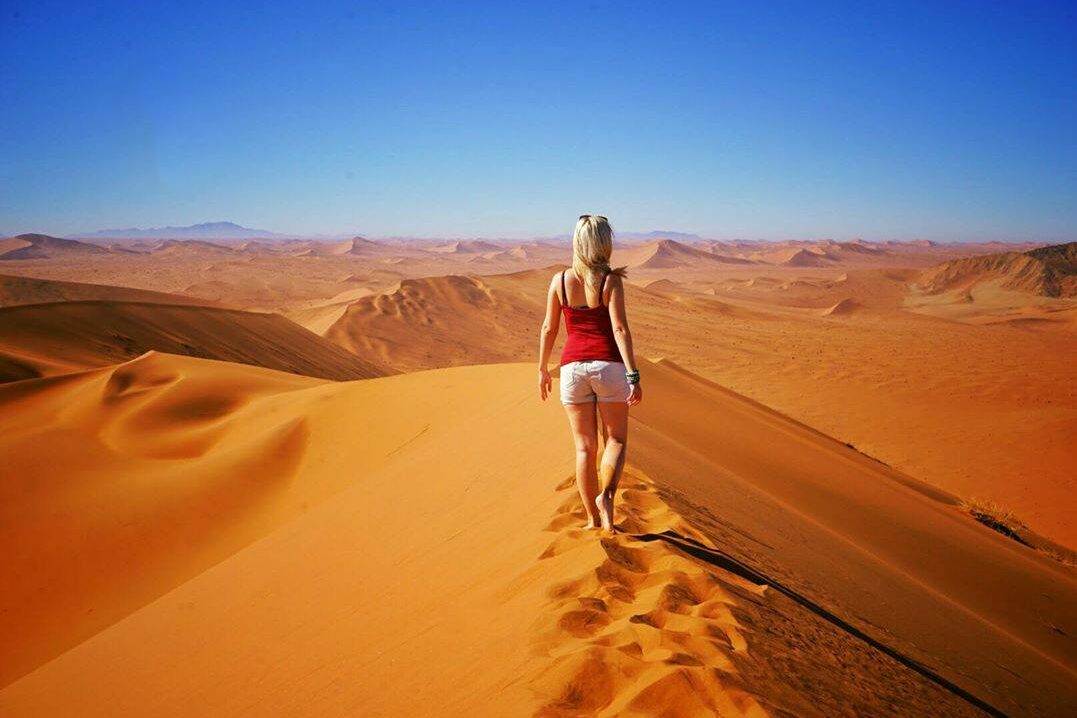
My road trip around Namibia is the best travel experience I’ve ever had.
Hands down.
I can’t even find the words to describe how fantastic my time in the country was. Namibia has everything. It’s easy to explore independently, it’s safe, it’s beautiful, the locals are lovely, the landscapes are diverse, the wildlife is exciting, and there are so. few. tourists.
I’ve got a dozen posts planned about my time in this amazing country, so brace yourself for an onslaught of information! By the end of the month, you’ll have everything you need to book a trip to this kickass country. And hopefully you’ll decide to do exactly that.
This is what it’s like to travel in Namibia.

Where is Namibia?
Let’s start off with a little bit of context. Where even is Namibia?
Namibia is a Southern African country on the west coast of the continent. It’s located above South Africa , below Angola, and to the west of Botswana.
Interestingly, Namibia is where you’ll find the world’s only quadripoint, which is defined as the place where the corners of four different countries meet. Yes, in the far north-eastern reaches of this country, Namibia nestles up against Botswana, Zambia, and Zimbabwe. There are over 150 tripoints in the world, but only one quadripoint, making this a very special place on the planet.
Unfortunately, it’s in a part of the country that few tourists choose to visit, at the eastern end of the Caprivi Strip, which is isolated from many of the main tourist activities. Somewhere that’s much easier to visit, however, is the Tropic of Capricorn! Most visitors end up driving past the iconic Tropic of Capricorn sign while driving around Namibia, and fortunately, it’s marked on Google Maps, so you won’t have to worry about missing it.
Namibia is the Perfect Introduction to Africa Travel
If you’re dreaming of travelling in Africa but have no idea where to go first, head to Namibia. It’s one of the safest and least intimidating countries I’ve travelled through.
One of my aims with my recent Africa travels has been to prove you can easily travel around much of the continent independently. So many people opt to jump on overland truck tours in this part of the world, but what I’ve found so far is that it’s really not necessary. And in Namibia you definitely don’t need to join a tour in order to visit.
With the exception of the bad roads, I found it no more difficult or dangerous to travel in than the U.S., Europe, or Australia. And when you’re traveling independently, you’re in control of your schedule and where you stay and what you do.
On top of that, the official language of Namibia is English, which makes independent travel even easier. You can ask questions, you can get directions, you don’t have to mime all the time… it’s all so easy .
Namibia also felt like the safest country in Africa I’ve been to so far. Outside of Windhoek, you really don’t need to worry about much at all. The locals are friendly and welcoming, theft is rare, and your only real concern will be how many flat tyres you’ll end up with on the seemingly-endless gravel roads.
Not only is Namibia safe and easy to travel through, but it also has just as much to offer as other countries in Africa. Head to Etosha National Park and you’ll get to drive alongside elephants, giraffes, lions, black rhinos, and more. You can hit up the Namibian desert for sand dune climbing at sunrise. There are beaches and coastlines full of shipwrecks to explore. The darkest skies in the world are in Namibia, so the Milky Way is always shining brightly above your head at night. Oh, and there’s a ghost town in the middle of the desert. Badass.
In other words: Namibia is the best!
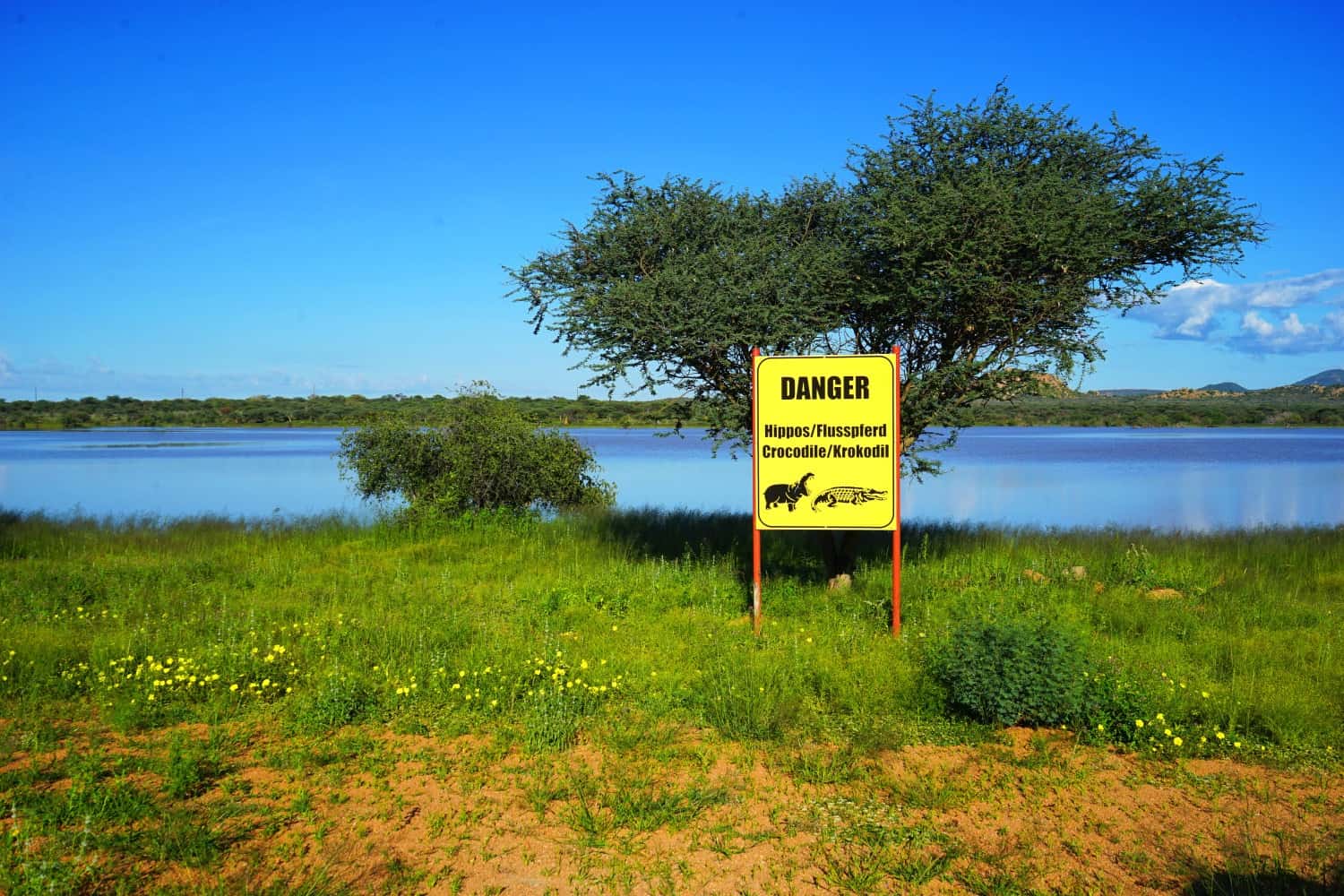
Not Many People Will Know Where You’re Going
I couldn’t believe it: after six years of travel, Namibia was the first country nobody seemed able to locate on a map. In my digital nomad community here in Portugal — so, y’know, people who have travelled full-time for many years — a surprisingly number of people had never even heard of Namibia.
I get it: it’s a country that isn’t often spoken about outside of travel blogging circles, but it was still surprising to be met with blank faces when I spoke about where I was visiting next.
The bonus of this? Hardly anybody decides to visit the country, so there are hardly any tourists around!
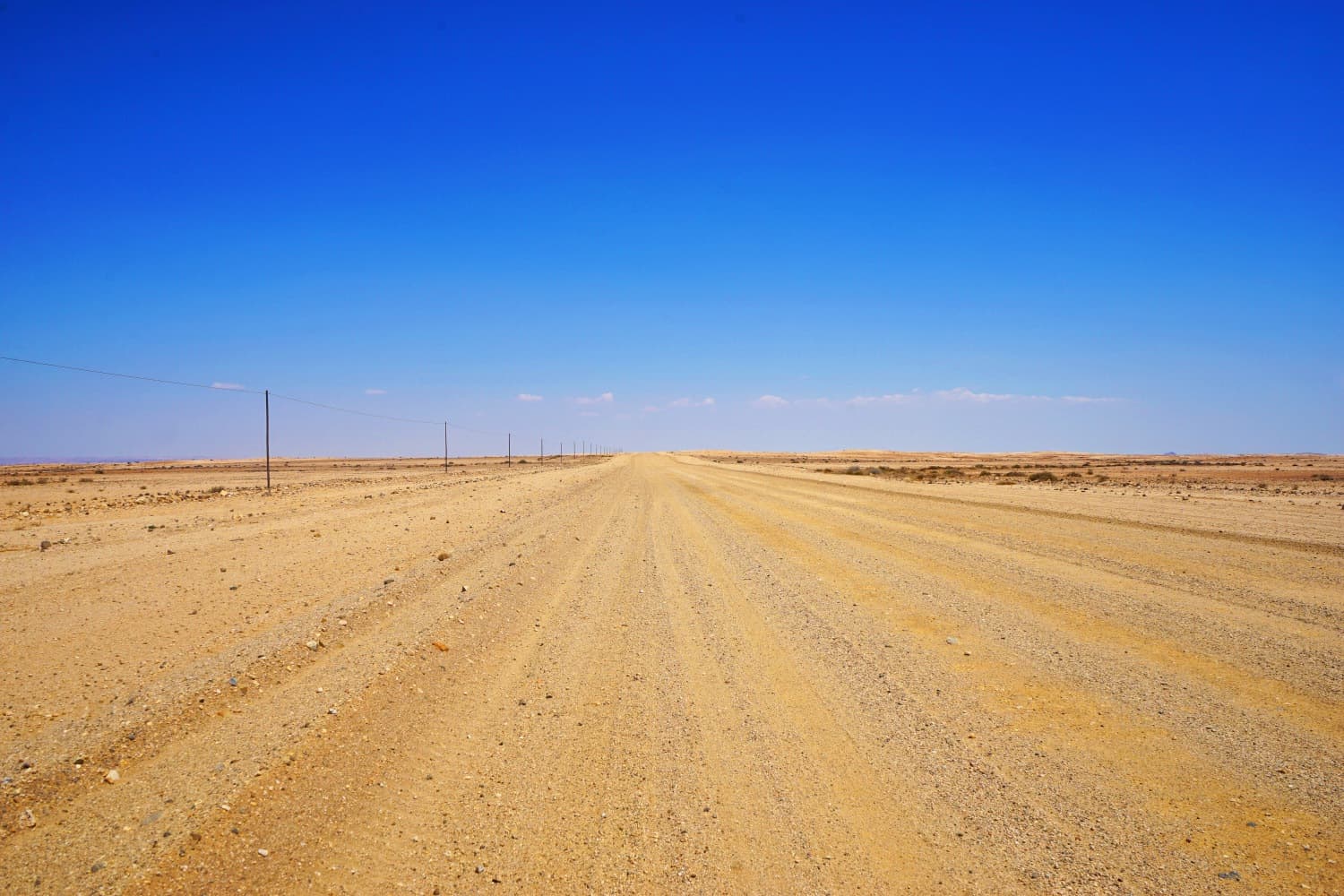
It’s Ridiculously Sparsely Populated
Namibia is the second-least-densely populated country in the world, with an average of just five people for every square mile. And it’s easy to see why: desert takes up the bulk of the country and so outside of its short rainy season, it’s a very arid place.
This was one of my favourite aspects of travelling around Namibia, though: you could drive for four hours straight and not see a single human, car, or building over that time. As an introvert with a love of wide, open spaces, I couldn’t get enough of the isolation.
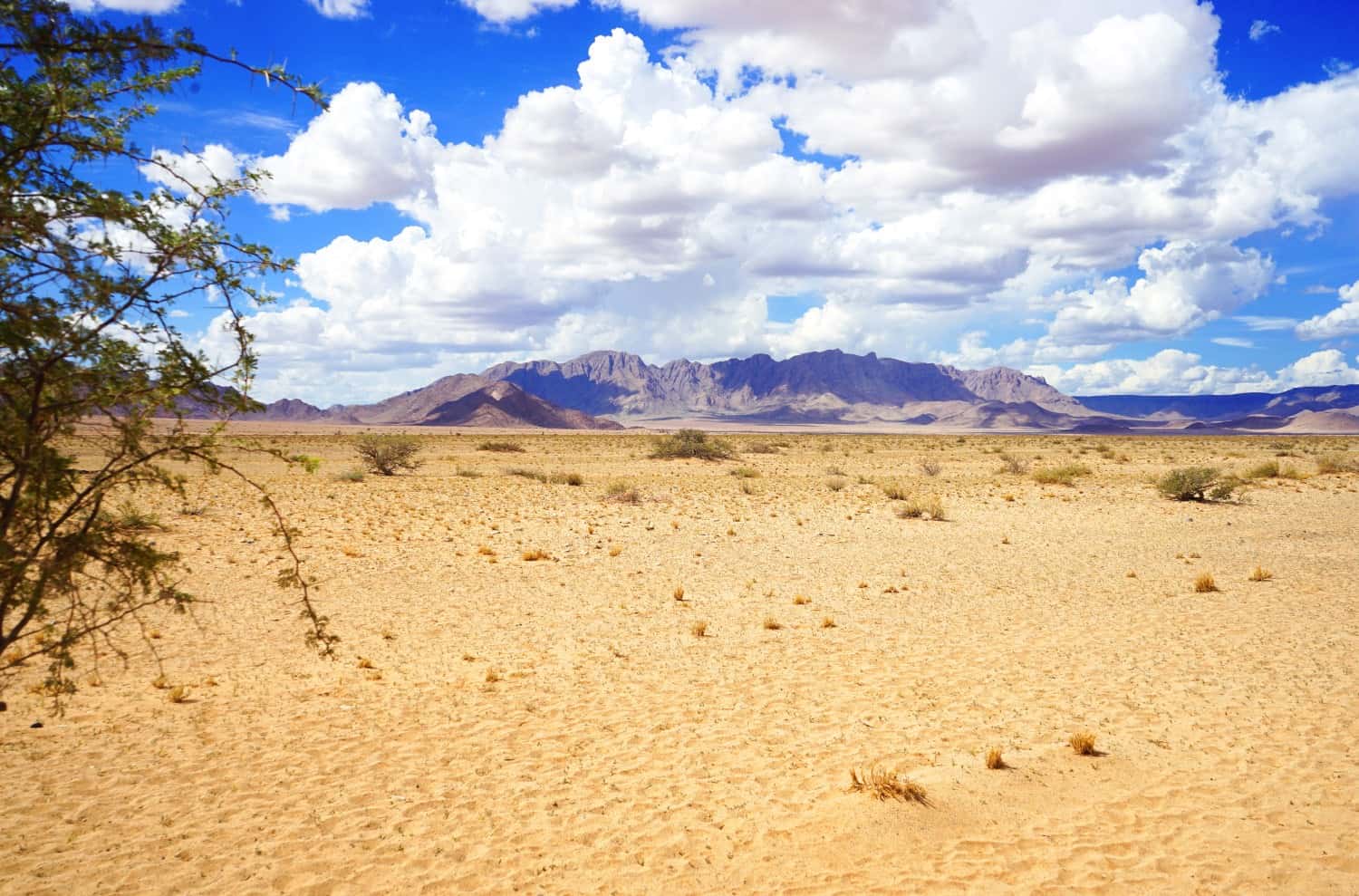
Planning Where to Stay Is… Interesting
Because the country is so sparsely populated, the majority of places you’ll stay at will be lodges that feel as though they’re in the middle of nowhere. Because they kind of are.
There aren’t many major towns and cities in the country — and honestly, the best parts of Namibia are outside of them — so that makes finding accommodation tricky. The best places to stay at are often hours from the nearest signs of civilisation and miles down a tiny gravel path.
I found booking.com best for finding places to stay. First, decide on which major destinations you want to hit in Namibia. For us, this was: Windhoek – Etosha National Park – Swakopmund – Sesriem – Luderitz – Windhoek. Most of these destinations are so far from each other that you’ll have to break up the drive into two days.
Next, on Booking, search for all hotels in Namibia, and once you’re on the search page, click on view on map. Once you’ve got a map view of every hotel listing in Namibia, zoom in on the route you’re planning to take and see which lodges pop up close to the midpoint between two distances. We did this for almost everywhere we stayed in Namibia and found some incredible lodges as a result. In fact, some of the highlights from my time in the country were getting to stay outside of the main tourist trail.
And if you can’t find anything suitable or affordable on the drive, just googling “where to stay between Swakopmund and Sesriem”, for example, will bring up a ton of forum threads with recommendations from other people. Not everywhere is listed online, so there were a few places we had to book through email.
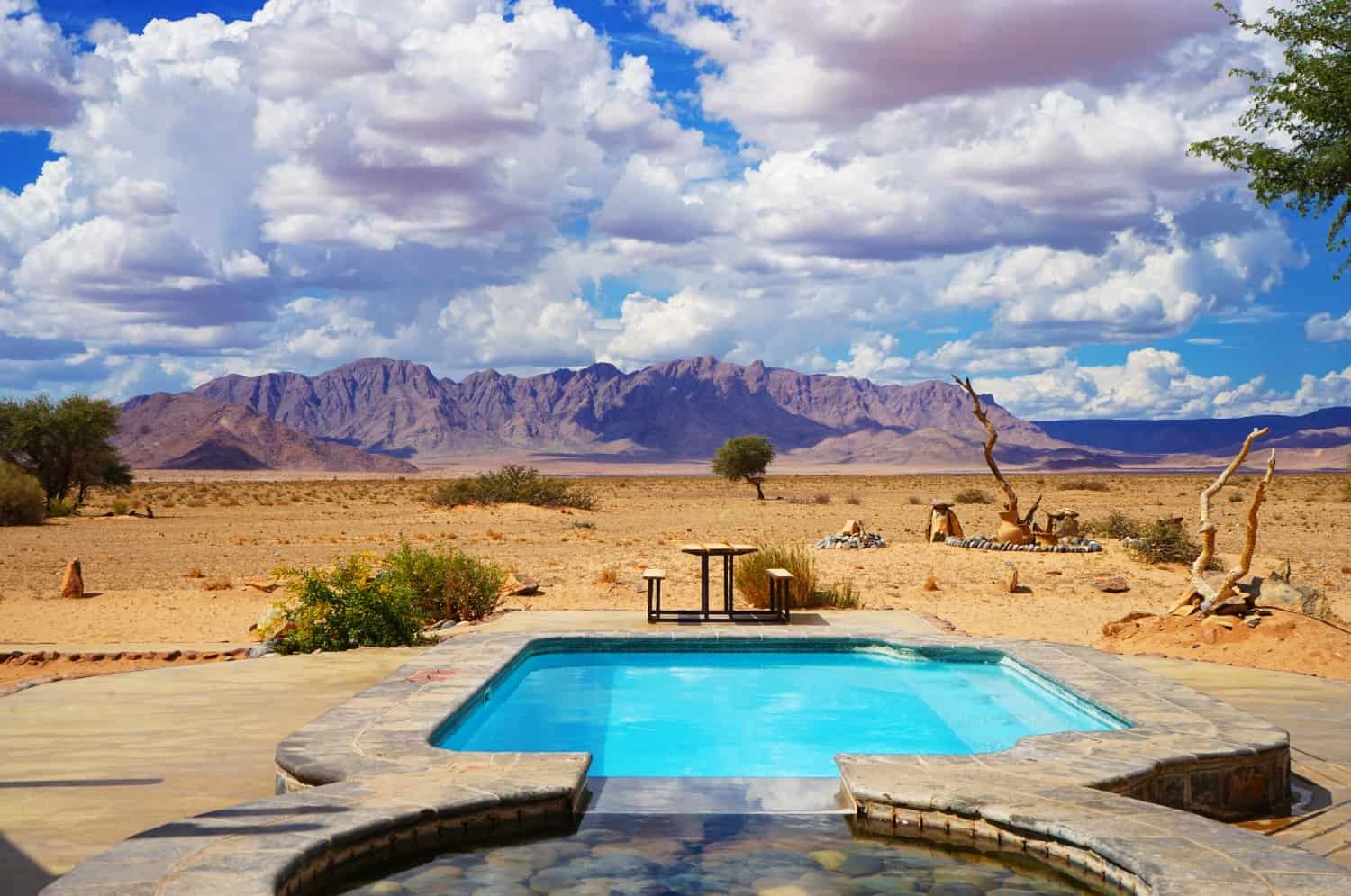
Frustratingly, It’s Tough to Visit on a Budget
In Namibia you have two options: expensive or camping.
I’m all about that budget travel life, but in Namibia I had to give up my aim of spending $50 a night on accommodation and quadruple it for much of our trip. Yep, almost every lodge we stayed at in Namibia was well over $100 a night, and we were nearly always booking the cheapest option we could find. And we were visiting in low season, where accommodation prices are around half what they’d be in high season!
Unfortunately, if you want to save as much money as possible on your trip, your only real option in Namibia is to camp. Most lodges will offer a camping option for around $30 a night, so if you’ve got your own gear, this is an easy way to save money on accommodation.
The only exceptions to the crazy prices are the cities: Windhoek has cheaper options ($50 a night), and so did Swakopmund ($40 a night) and Luderitz ($50 a night).
Everything else wasn’t too bad when it came to price. Our rental car — a Toyota Corolla — had us up for $30-a-day, which is pretty standard for most countries around the world. Activities and entrance fees (around $6) were also affordable. Food could get a little pricey at the camps and lodges, which made sense because they were so isolated, but nothing was over-the-top extreme. We’d usually pay around $10-15 for dinner each night.
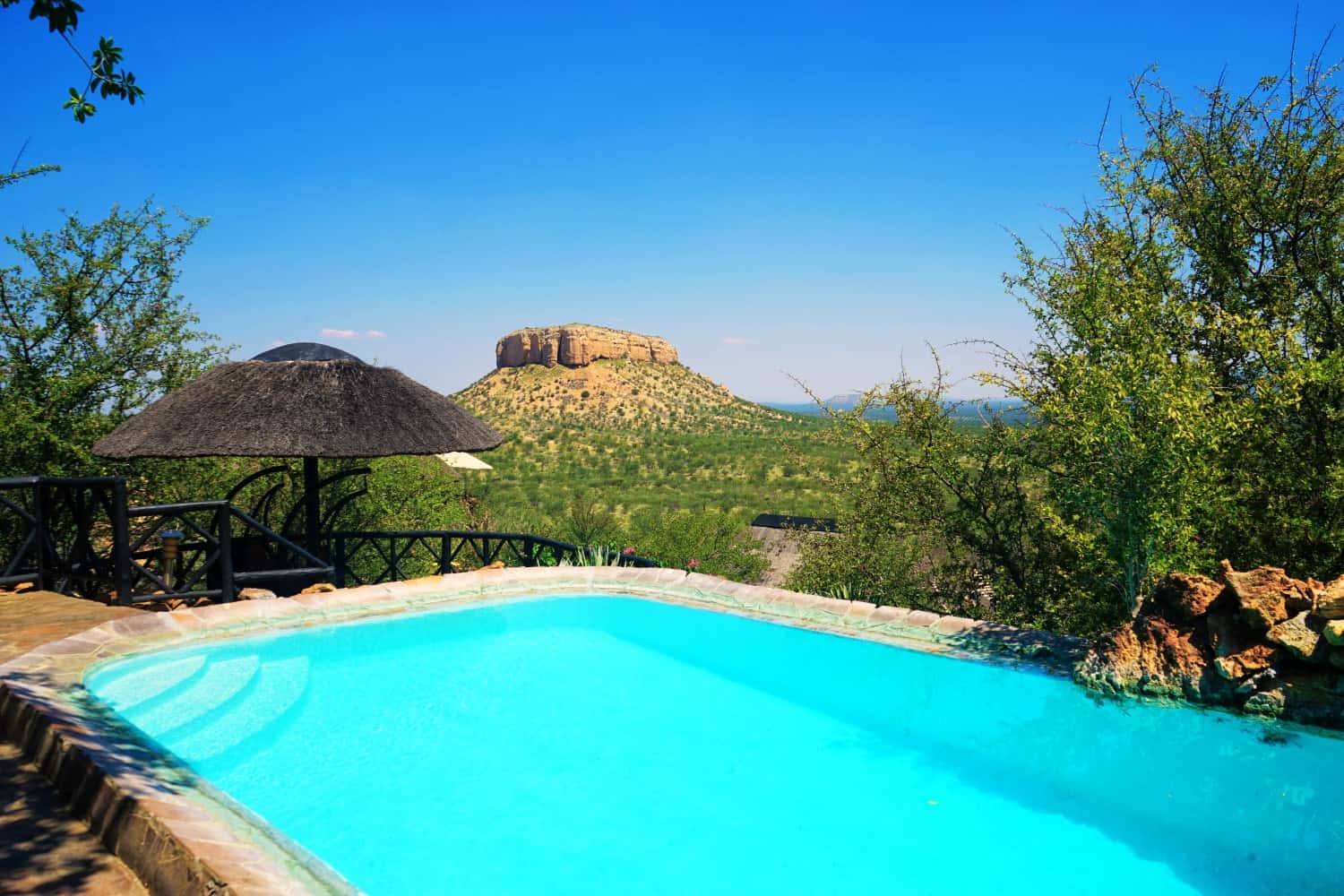
But the Lodges are Amazing
Some of the best hotels I’ve ever stayed in are in Namibia. And while you’ll pay a lot for them, they’re worth every penny.
At Ovita Wildlife Restcamp , we fell asleep listening to hippos in the lake outside our room. At Vingerklip Lodge (pictured above), we ate dinner on a towering cliff top, looking over Namibia’s version of Monument Valley. At Sesriem Desert Camp (pictured above Vingerklip Lodge), we slept in luxury tents in the desert with wild oryx roaming outside.
I loved every single place we stayed in in Namibia, and even though they were ridiculously expensive, it felt as though we were still receiving fantastic value for money.
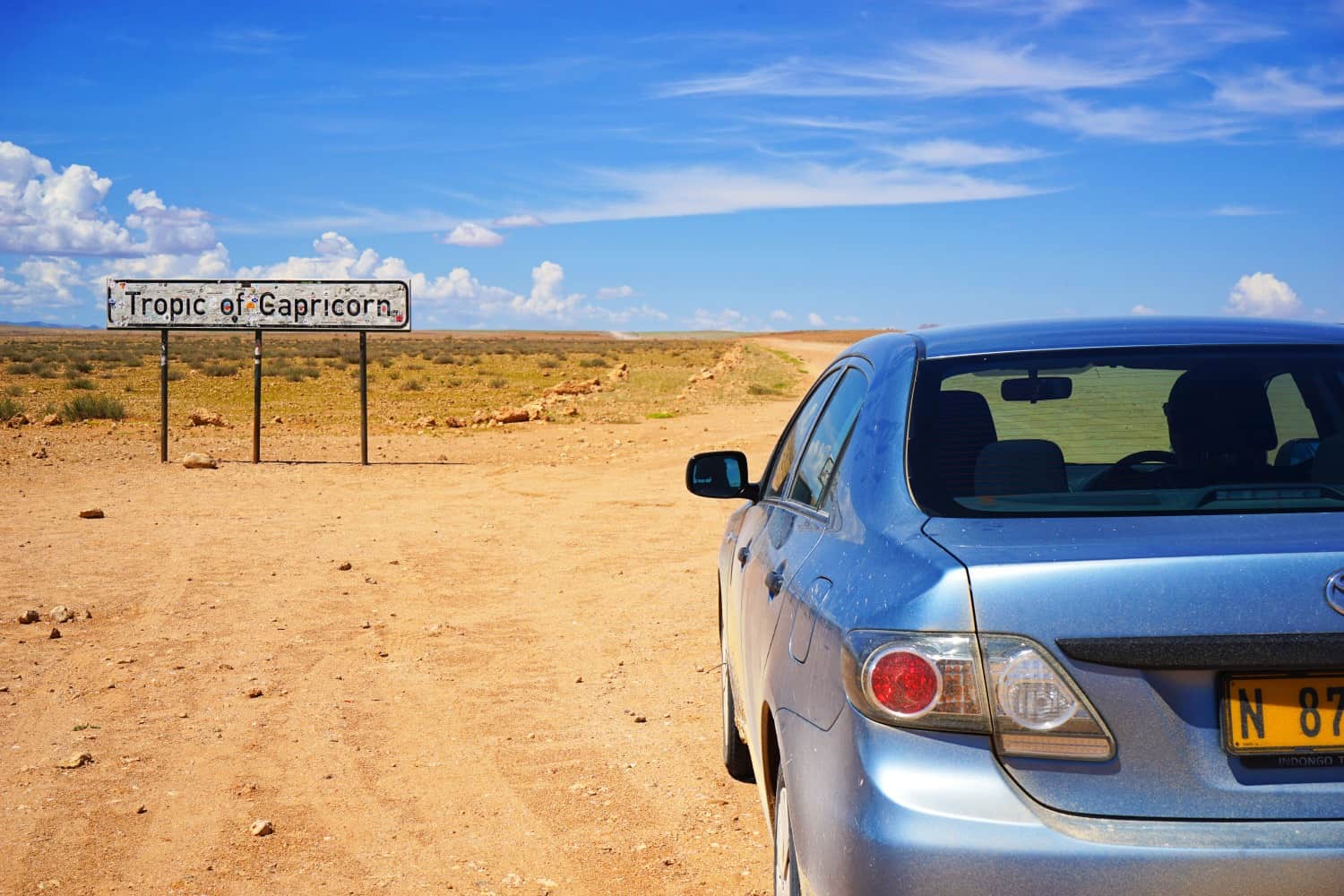
You Will Need Your Own Transport
Public transport doesn’t really exist in Namibia, so if you’re not going to take a tour, you’ll most likely need to hire a car. As for what type of car, it depends a lot on the time of year you’ll be visiting and how confident you are on gravel roads.
My Kiwi boyfriend grew up racing falling-apart cars on gravel roads in New Zealand, so he had the driving skills of a Namibian and we were happy opting for a tiny Toyota Corolla to make the trip for us. Guesthouse owners were always shocked to see us rocking up in it, but honestly, we had next to no problems with it. If you’ve got the cash, opting for a two wheel drive with higher ground clearance would be a smart idea, as part of the bottom of our car fell off on our second day of driving, thanks to all the rocks that had been flicked up into the undercarriage.
People advise to go with a 4×4, and especially if you’ll be visiting in the rainy season, but we decided against it for several reasons. First, it’s over double the price for a 4×4 (around $100 a day), second, being so high up makes the car easier to roll, and third, um, did I mention it’s expensive?
If you can’t drive? You won’t be able to visit Namibia without taking a tour or hiring a driver. You could take a bus between major destinations, but I believe you’d miss out on a lot of the wonderful lodges that make travelling in Namibia so wonderful. There are also reports of travellers rocking up in a hostel, getting together with a group of travellers, and car-sharing their way around the country, so this could be an option if you’re willing to take the risk of potentially finding nobody to travel with.
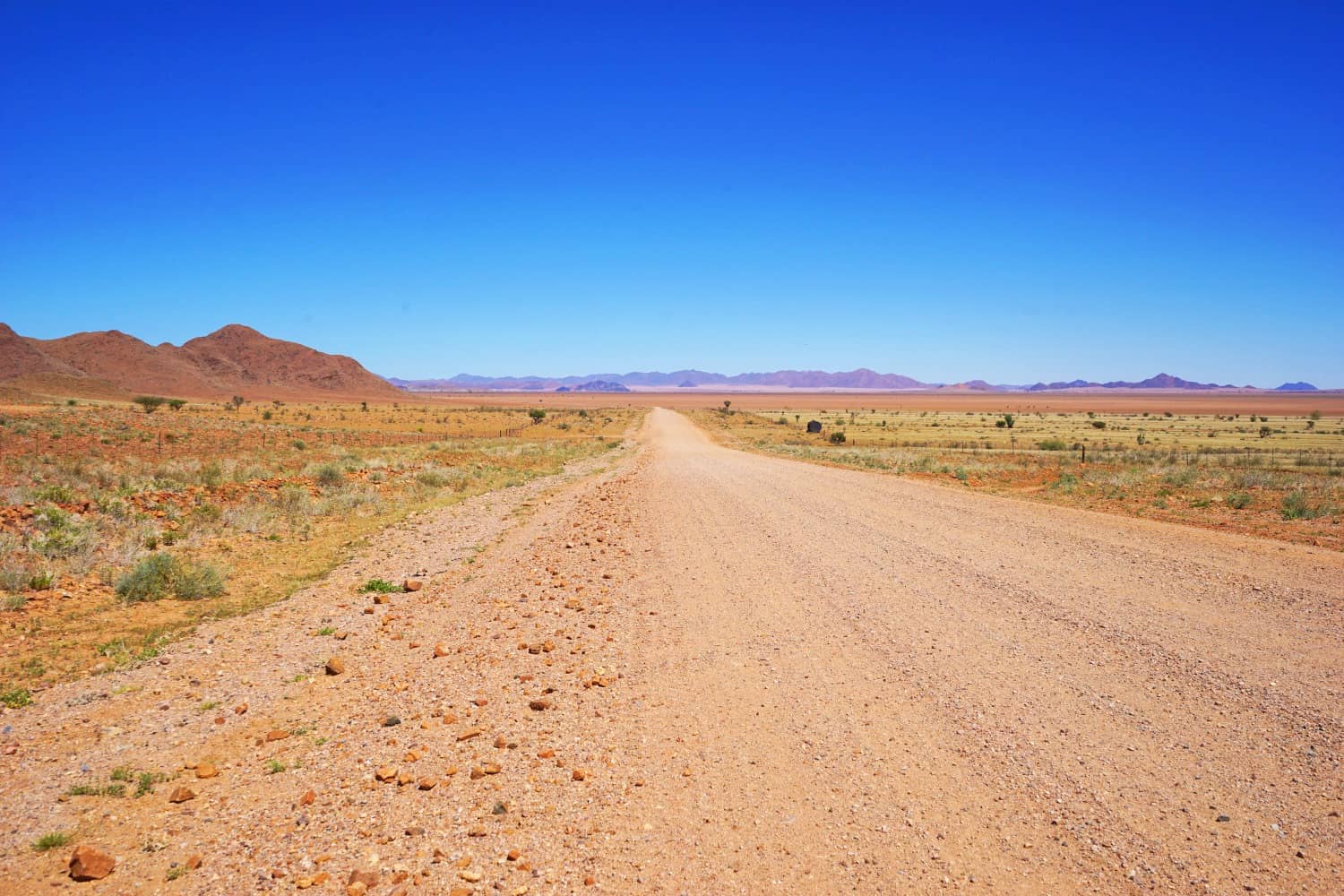
The Roads are So Bad
We drove 4000 kilometers in Namibia and probably only several hundred of them were sealed.
Yes, in Namibia, get used to urging your car over gravel, sand, rocks, and more. Because of this, travel days are long and bumpy — we rarely drove for less than six hours each day, and even listening to podcasts was a struggle over the crunching noises of driving over gravel while rocks pinged into our car
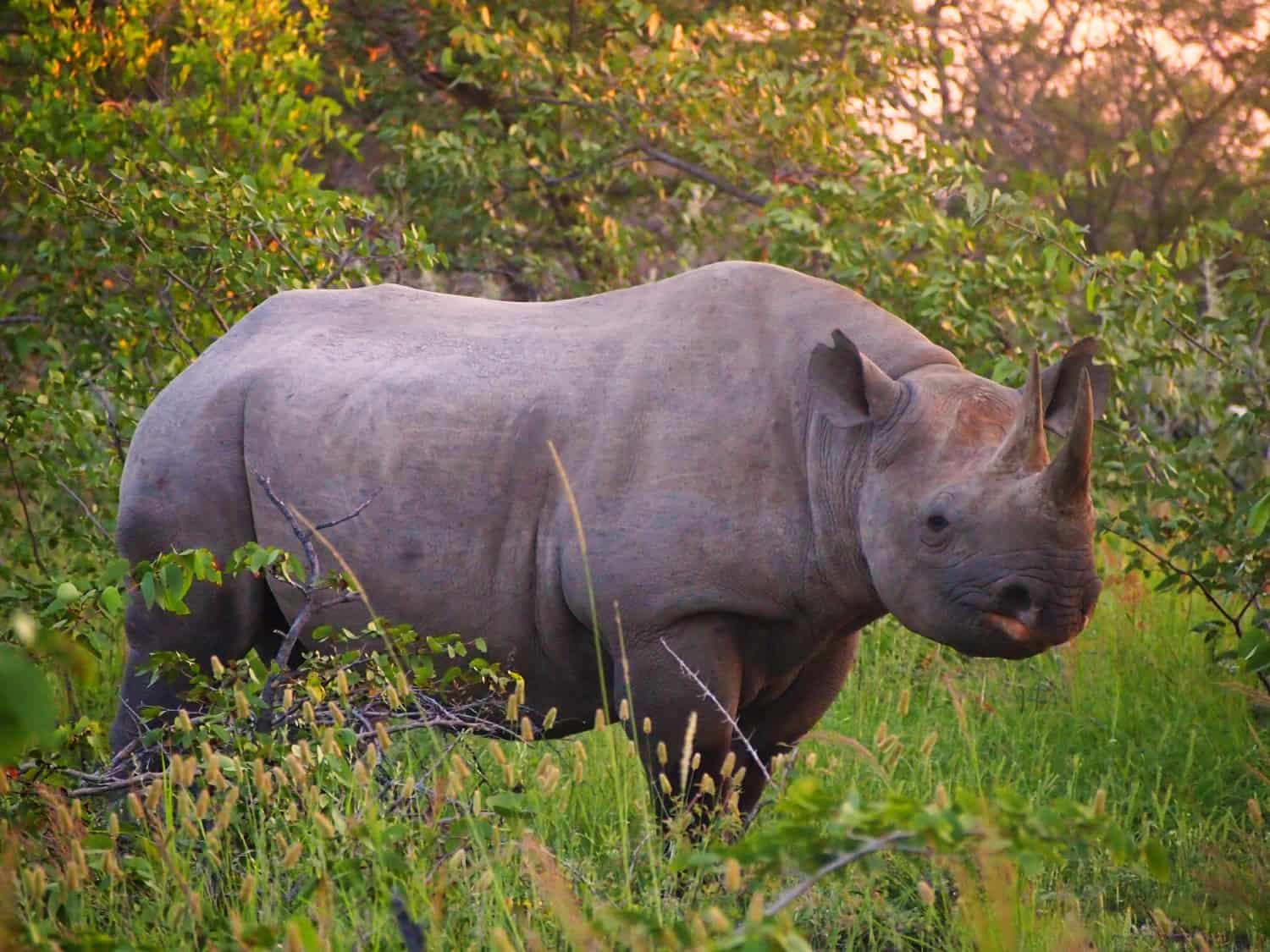
Get Yourself a SIM Card, But Expect to Rarely Use It
Getting connected is tough in Namibia, so if you work online like I do, resolve to spend most of your time on vacation.
Wi-Fi was sometimes around, was always slow, and often expensive. It’s worth getting a SIM card, though, as although we rarely got more than an EDGE signal, leaving our phones on while we were driving around usually meant we’d pick up a signal here and there to download emails.
We picked up a SIM card at Windhoek Airport upon arrival and it was super simple to do. The SIM card costs 50 US cents and 1 GB of data is a whopping $2.50. Too Many Adapters has a comprehensive guide for buying a SIM card in Namibia if you need any extra information. When it’s that cheap, there’s no reason not to get one.
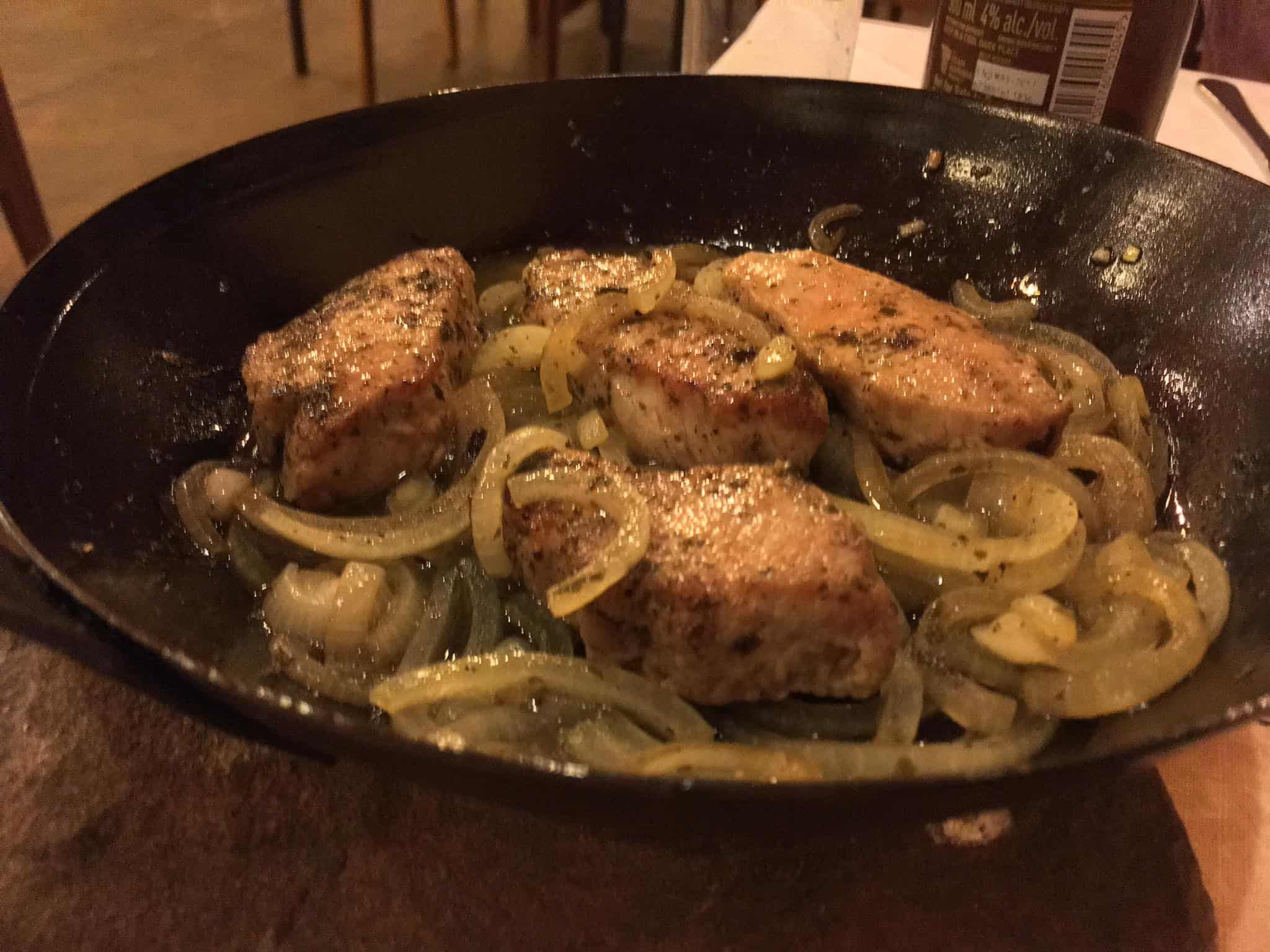
You’ll Get to Try Some Interesting Game Meat
One of my favourite aspects of eating in Namibia was getting to try so many of the delicious game meats on offer. The biggest surprise was warthog, which was delicious, but I also loved kudu, impala, oryx, zebra, and more. Most of the lodges will have some kind of unusual game meat on offer each evening, so it’ll be easy to access and you’ll soon grow used to it.
If you’re vegetarian, you’ll most likely struggle to eat super well in Namibia. Everything was very meat based at the lodges although bizarrely, Greek salads were available in basically every single restaurant, so you won’t have to go hungry. Just prepare yourself for a hell of a lot of feta cheese!
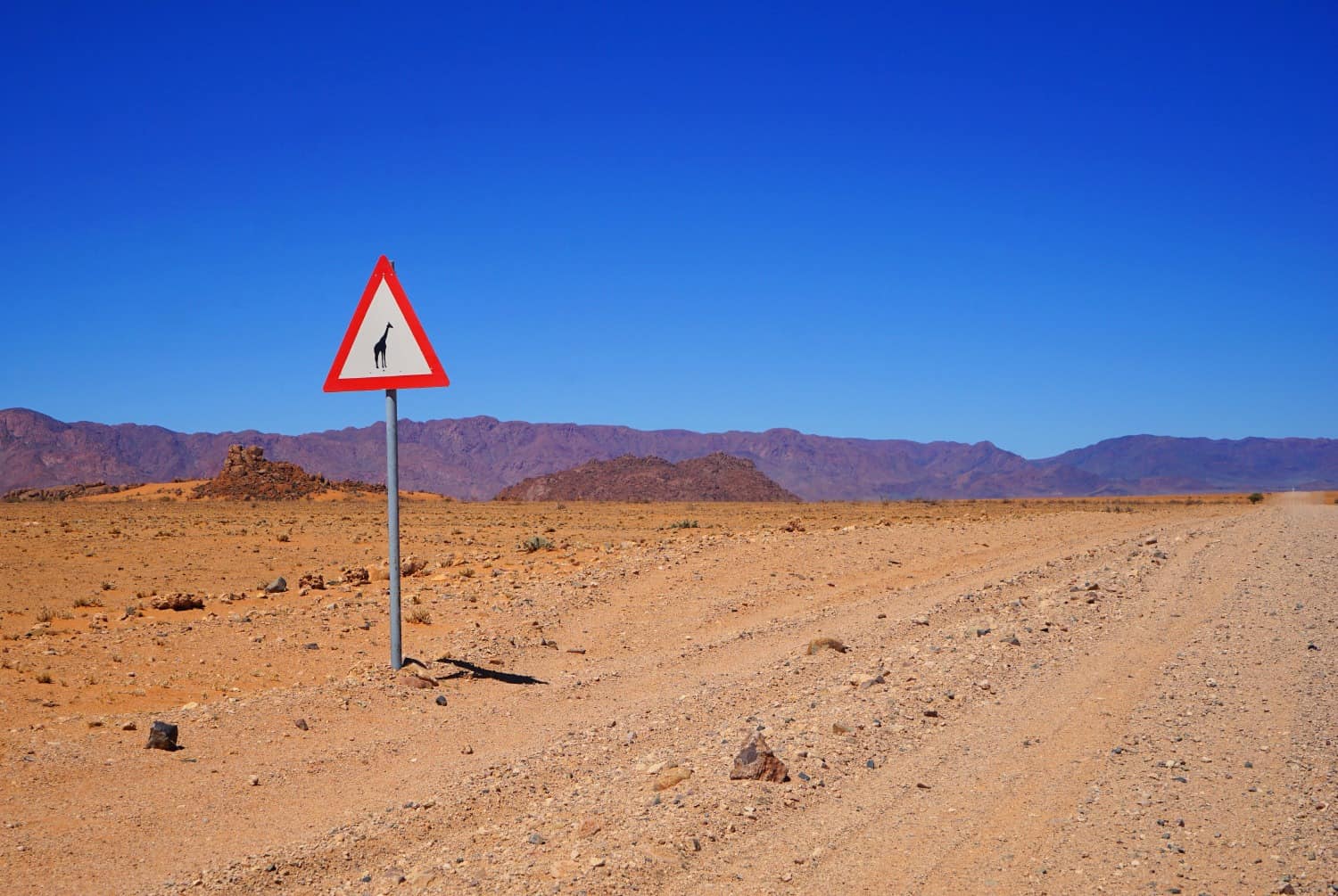
Namibia Has the Best Road Signs Ever
One of the highlights from our time in Namibia was the kickass road signs we came across while driving. The giraffe one above was one of my favourites. In addition to that, we saw signs for zebras, elephants, warthogs, and more. And even better: we actually saw some of those animals wandering around in the wild! There’s nothing quite like seeing a desert-adapted giraffe wandering through the sand.
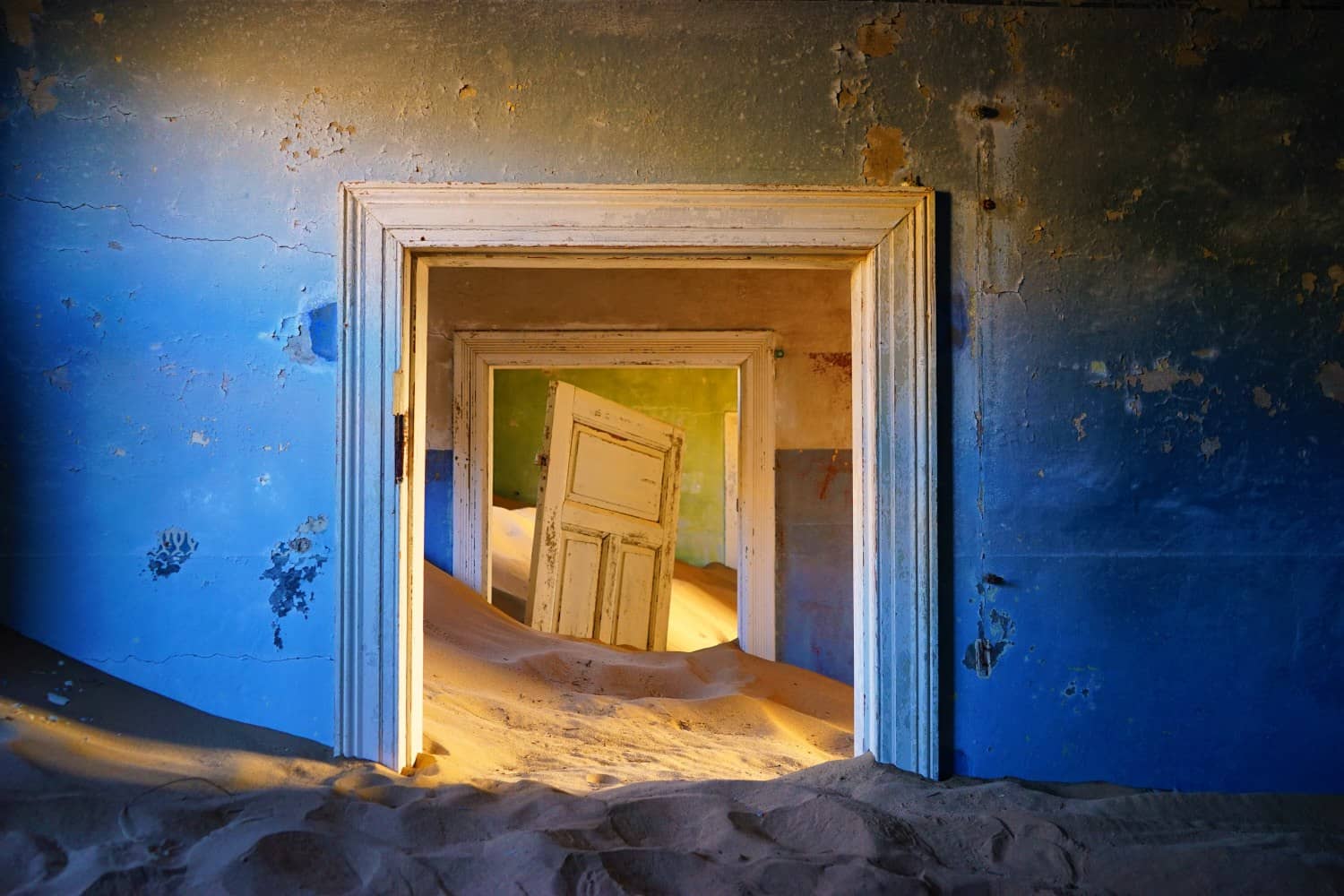
The Bradt Namibia Guide is Invaluable
If you’re planning a trip to Namibia, you need this guidebook .
Not only was it essential for planning our trip, but we used it on an hourly basis while we were in country. When it comes to Africa, Bradt guidebooks are king, so don’t even consider picking up a Lonely Planet for this part of the world; almost all of them have terrible reviews as well as outdated and too-condensed information.
Because you’ll be unlikely to have data coverage while you’re driving, and sometime even in lodges, the guidebook made our trip so much less stressful. When we wanted to figure out which animal we’d just spotted by the side of the road, the wildlife section had a photo to help us out; when we decided to stop for a lunch break in a tiny village, we could look up if there was anywhere to eat, and if so, which place was best; when we were planning our driving for the day, we could look up route recommendations and find out which attractions we might want to stop at along the way.
I don’t often recommend using guidebooks (I think I’ve only done it twice before!) because I believe you can get a lot of the information online for free, but in Namibia, this guidebook definitely helps. We struggled to find detailed information about the country both before we arrived and while we were there, so our Bradt book was 100% invaluable.
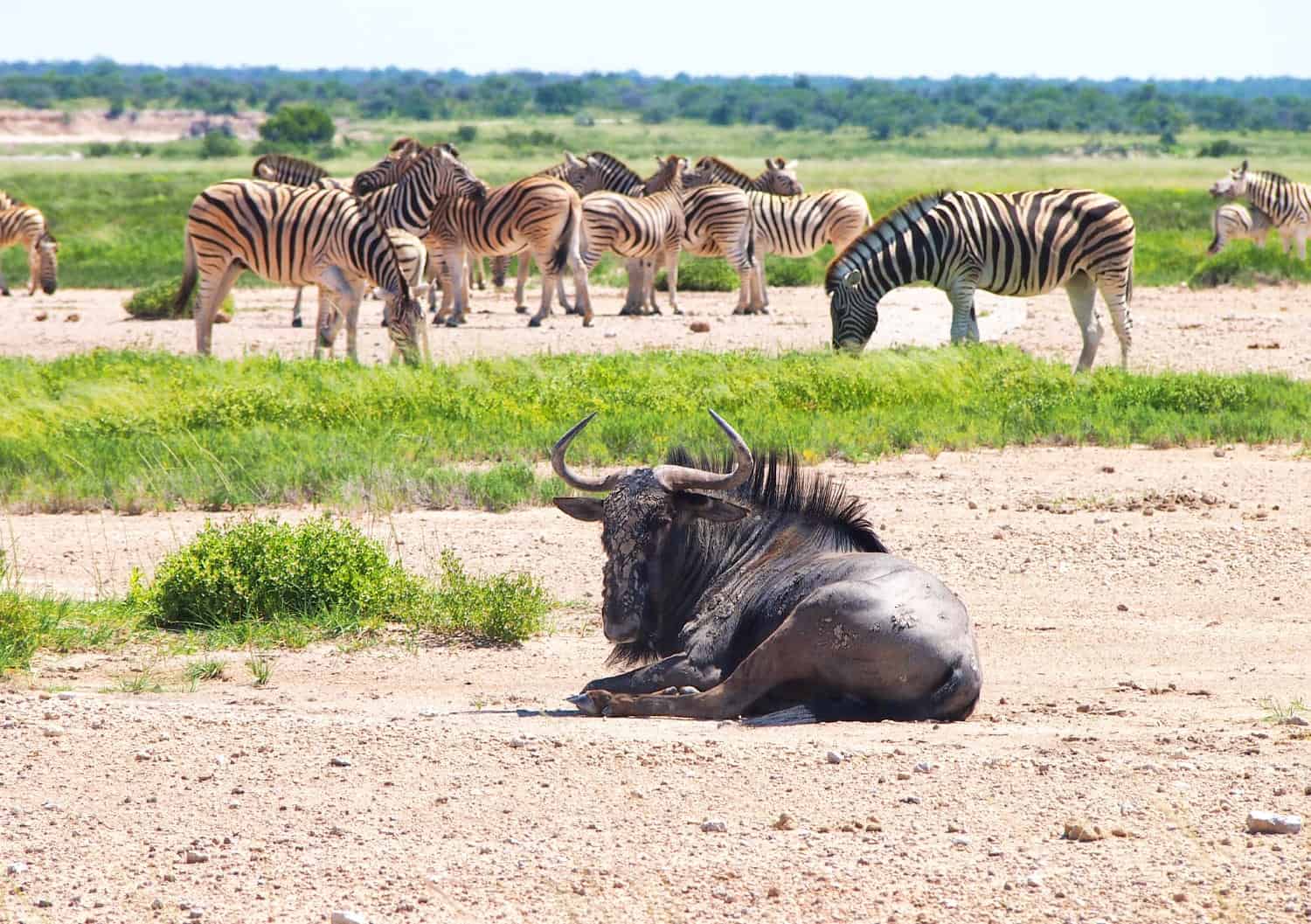
Two Weeks is the Perfect Amount of Time to Spend in the Country
I spent just under two weeks in Namibia, and feel as though I saw almost all of the highlights. If I’d had three weeks, I would have spent time at Fish River Canyon in the south, a few extra days in Damaraland, and some time exploring the Caprivi Strip in the northeast . Still, I feel as though two weeks is a good amount of time to dedicate to the country, which is refreshing as most places I visit have me feeling as though I need to explore for a minimum of three months just to start scratching at the surface.
I wanted to share my two-week itinerary here, because I feel as though I got it pretty close to perfect.
Day 1: Landed in Windhoek, picked up our rental car, and drove straight to peaceful Ovita Wildlife Restcamp . You can read about my first day in Namibia in my article, The Perfect First Day in Namibia . Day 2: Time for wildlife! We drove north to Etosha National Park and stayed within the park at Halali . We spent the afternoon sitting at the camp’s waterhole to see if any animals emerged. You can read about my experience in Etosha National Park in the dry season: Desperately Seeking Elephants at Etosha National Park . Day 3: For our first full day at Etosha, we drove around the eastern region of the park for almost 12 hours. We saw dozens of giraffes, zebras, and a rare black rhino, then spent the night back at Halali. It was magical. Day 4: On day four, we opted to drive around the central parts of Etosha for the entirety of daylight hours, then switched up our accommodation to spend the night at Okaukuejo . Day 5: For our final morning in Etosha, we decided to explore the western region of the park, then at lunchtime, drove to beautiful Vingerklip Lodge to spend the night. You can read about how incredible Vingerklip was in my article, Finding Paradise in Vingerklip: Africa’s Monument Valley . Day 6: Day 6 brought a long drive to Swakopmund, where we spent much of the day on terrible roads. Still, getting to drive part of the Skeleton Coast was amazing, and we even got to see a shipwreck stranded off the coast. We spent the night in an Airbnb apartment. Day 7: For day 7, we took a day trip out to nearby to Walvis Bay to see its seal colony, which is one of the largest in the world. You can read about this wonderful experience in the article, Seals, Swakopmund, and the Skeleton Coast . Again, we spent the night in our Airbnb apartment. Day 8: We spent this day relaxing and exploring Swakopmund. You could use this day to get your adventure on if you wanted, as Swakopmund is the adventure capital of the world. You could try your hand at quad biking on the nearby sand dunes , for example. Once more, we spent the night in an Airbnb apartment. Day 9: The following day, we drove to Sesriem and spent our afternoon climbing Dune 45. I highly recommend doing this, as we practically had the entire park all to ourselves. We slept at Sesriem Desert Camp , which was magnificent. Day 10: We got up at sunrise to enter the park, climb Big Daddy sand dune, and explore Deadvlei. This day was spectacular and you can read about the experience in the article, Climbing Big Daddy: An African Travel Highlight . That afternoon, we drove south to Betta Camp to spend the night. Day 11: The following morning, we drove down to Luderitz. We spent the afternoon exploring this adorable town and spotting pelicans as we drove around the areas just outside of Luderitz. It was a fairly relaxed day after all of the movement, and we spent the night at Kairos B&B . Day 12: We saved the best for last, because for day 12, we drove to Kolmanskop at sunrise and and had the entire place to ourselves. Kolmanskop is an old mining town that has since been abandoned and is now being taken over by the desert. It was incredible and we spent a full three hours taking photos. I wrote about it in-depth in the article, Exploring Kolmanskop: Namibia’s Ghost Town in the Desert . In the afternoon, we drove to Maltahohe Hotel to break up the long journey back to Windhoek. Day 13: Final day! Sad face. We spent this day driving from Maltahohe to Windhoek and left Namibia in awe of how much the country has to offer.
This was one of the best trips of my life and I highly recommend putting together a similar itinerary if you’re planning a trip to Namibia.
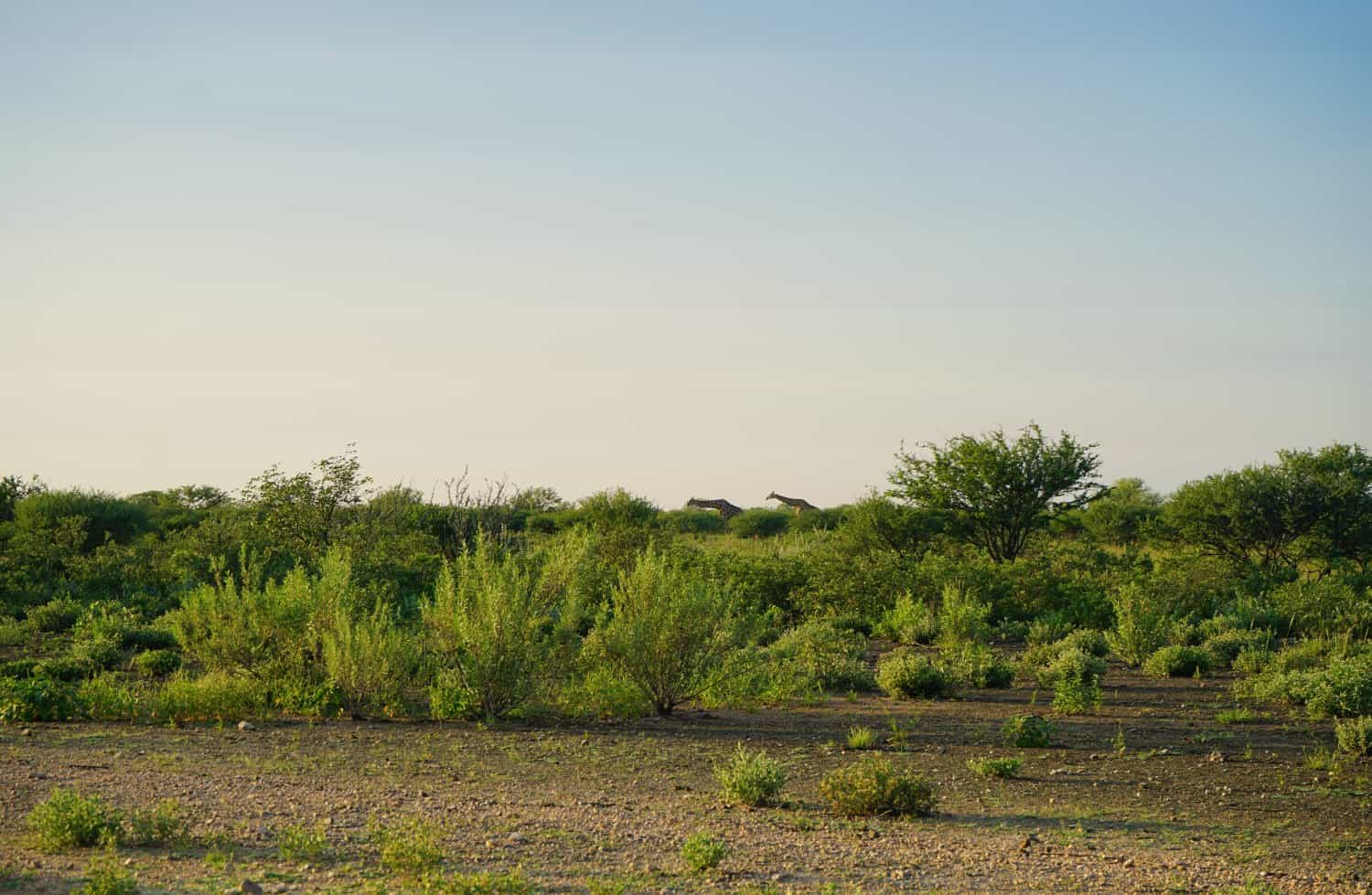
Yeah, You Should Definitely Get a Zoom Lens
The biggest regret of my trip? Not splashing out on a zoom lens for my camera and then getting uniformly awful photos in Etosha.
I ventured into Namibia with my Sony 28-70mm lens and while it was absolutely fantastic for landscape photos, it was nowhere near good enough for the wildlife. Had my boyfriend not packed his 80-300mm lens, I would have had close to zero photos of any animals. Because we were in Namibia in the rainy season (more on that below), the animals at Etosha were hiding in dense grass and hard to spot, so it was rare for us to get up close to them.
If you’re going to Namibia and will be hitting up Etosha while you’re there, make sure you’ve got a decent zoom lens for the trip.
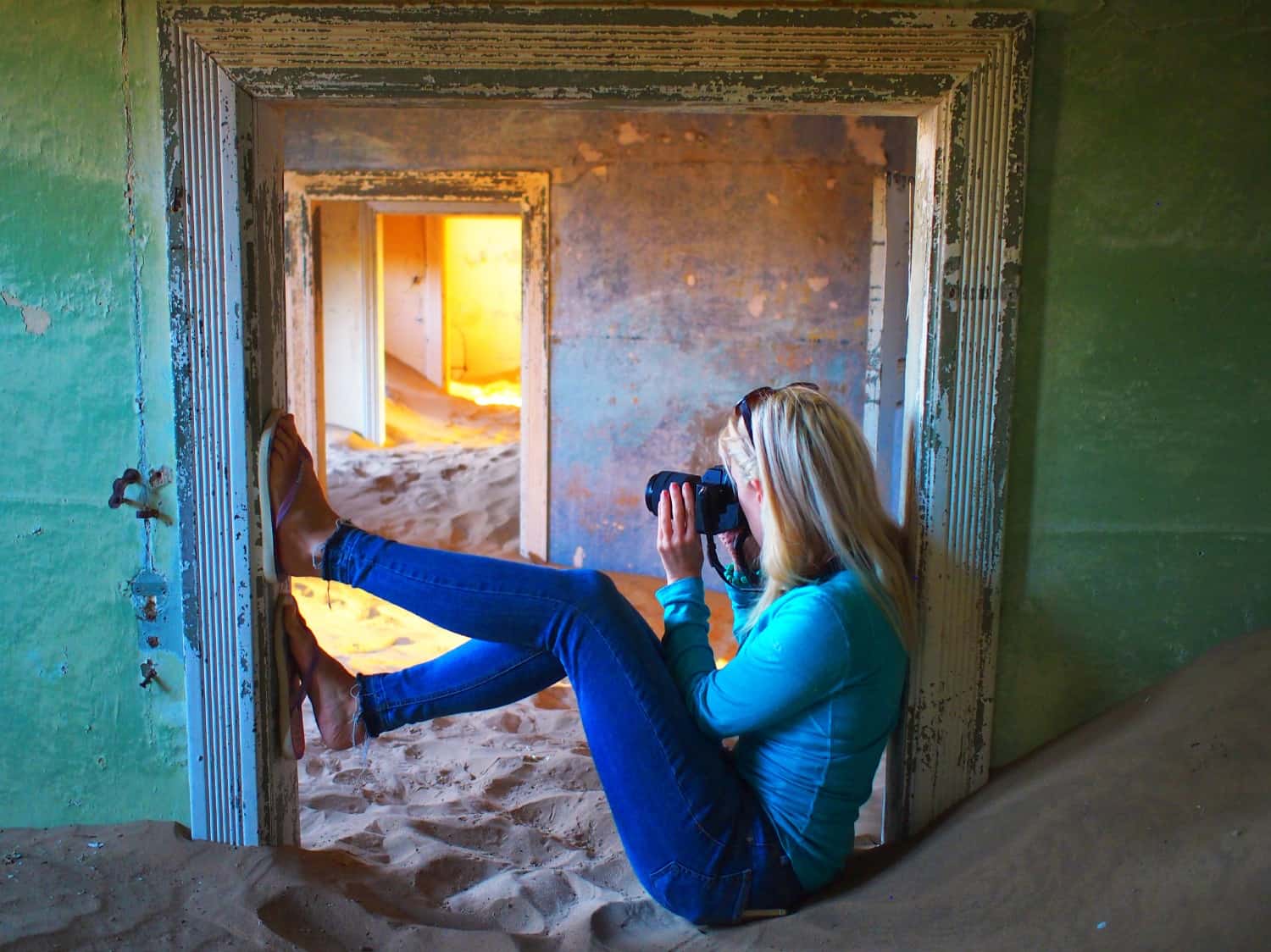
Get Yourself Some Excellent Travel Insurance
You know I’ll always yell at you if you’re dumb enough to skip out on travel insurance , but in Namibia, it’s an essential.
Why? Because Namibia has the highest car-accident death rate in the world, with 45 people killed on the road for every 100,000 citizens. On top of that, malaria hangs out in the northern parts of the country, and there are several other awful-sounding tropical diseases you definitely don’t want to contract.
Travel insurance will cover you if your flight is cancelled and you need to book a new one, if your luggage gets lost and you need to replace your belongings, if you suddenly get struck down by appendicitis and have to be hospitalised, or discover a family member has died and you need to get home immediately. If you fall seriously ill, your insurance will cover the costs to fly you home to receive medical treatment.
I use SafetyWing as my travel insurance provider, and recommend them for trips to Namibia. Firstly, they’re one of the few companies out there who will actually cover you if you contract COVID-19. On top of that, they provide worldwide coverage, don’t require you to have a return ticket, and even allow you to buy coverage after you’ve left home. If you’re on a long-term trip, you can pay monthly instead of up-front, and can cancel at any time. Finally, they’re way cheaper than the competition, and have a clear, easy-to-understand pricing structure, which is always appreciated.
With SafetyWing, you’ll pay $1.50 a day for travel insurance.
On top of standard travel insurance, you’ll also want to make sure you get some of the best car insurance money can buy. Most tourists get a flat tyre in Namibia at some point at a minimum (we got one roughly an hour from the airport on our final day) and replacing them/repairing the rental car can be pricey. We rented our car through rentalcars.com , bought their insurance, and they refunded us for all of our car disaster expenses in Namibia.
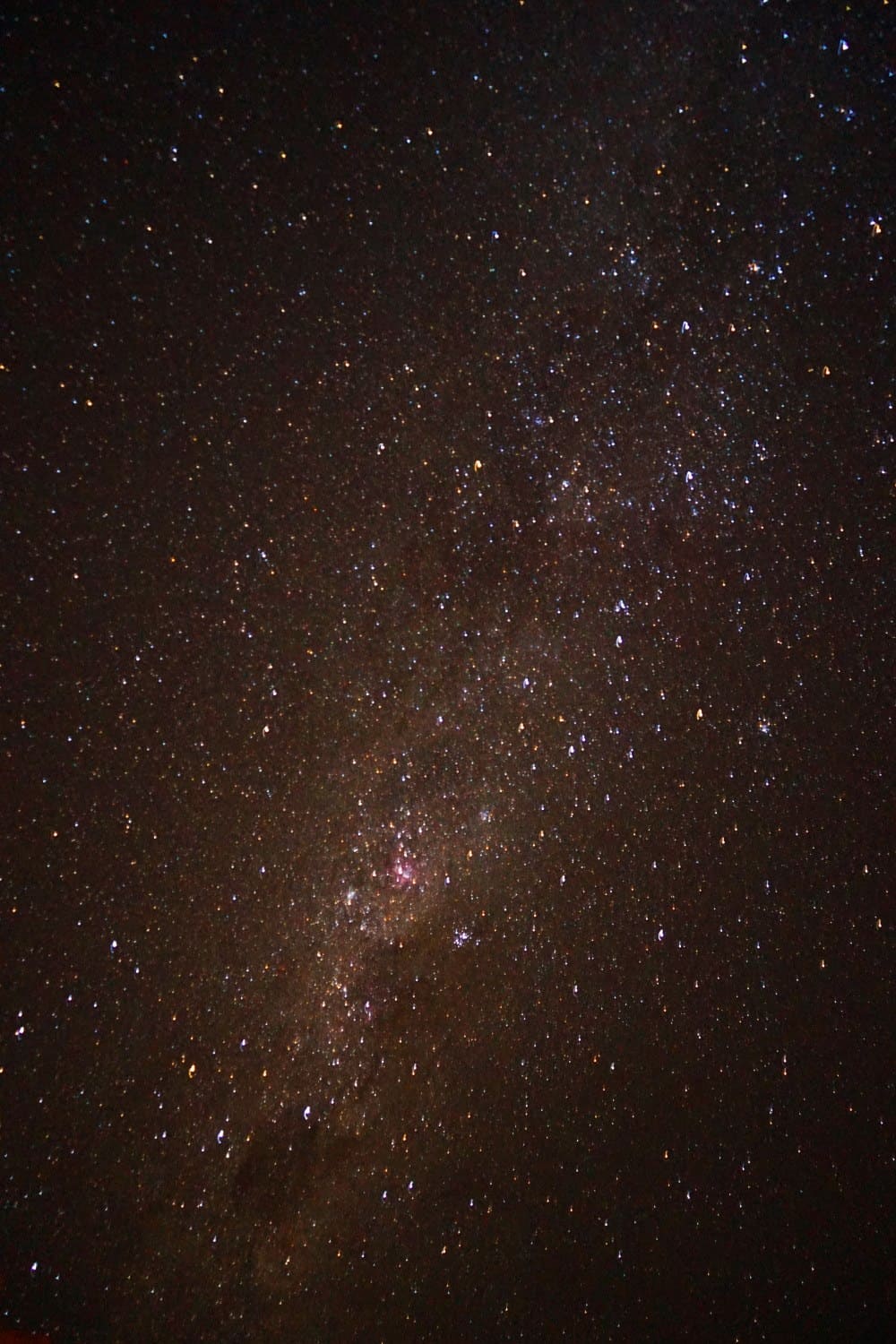
You’ll Never Have Seen This Many Stars Before
Namibia is home to some of the darkest skies in the world , and I couldn’t believe how magical the night sky was. With the exception of the cities we stayed in, we fell asleep every night with the Milky Way twinkling above our heads. And with the lack of light pollution in the country, you didn’t even need to wait for your eyes to adjust.
If you’re all about stars, this is one destination not to miss.
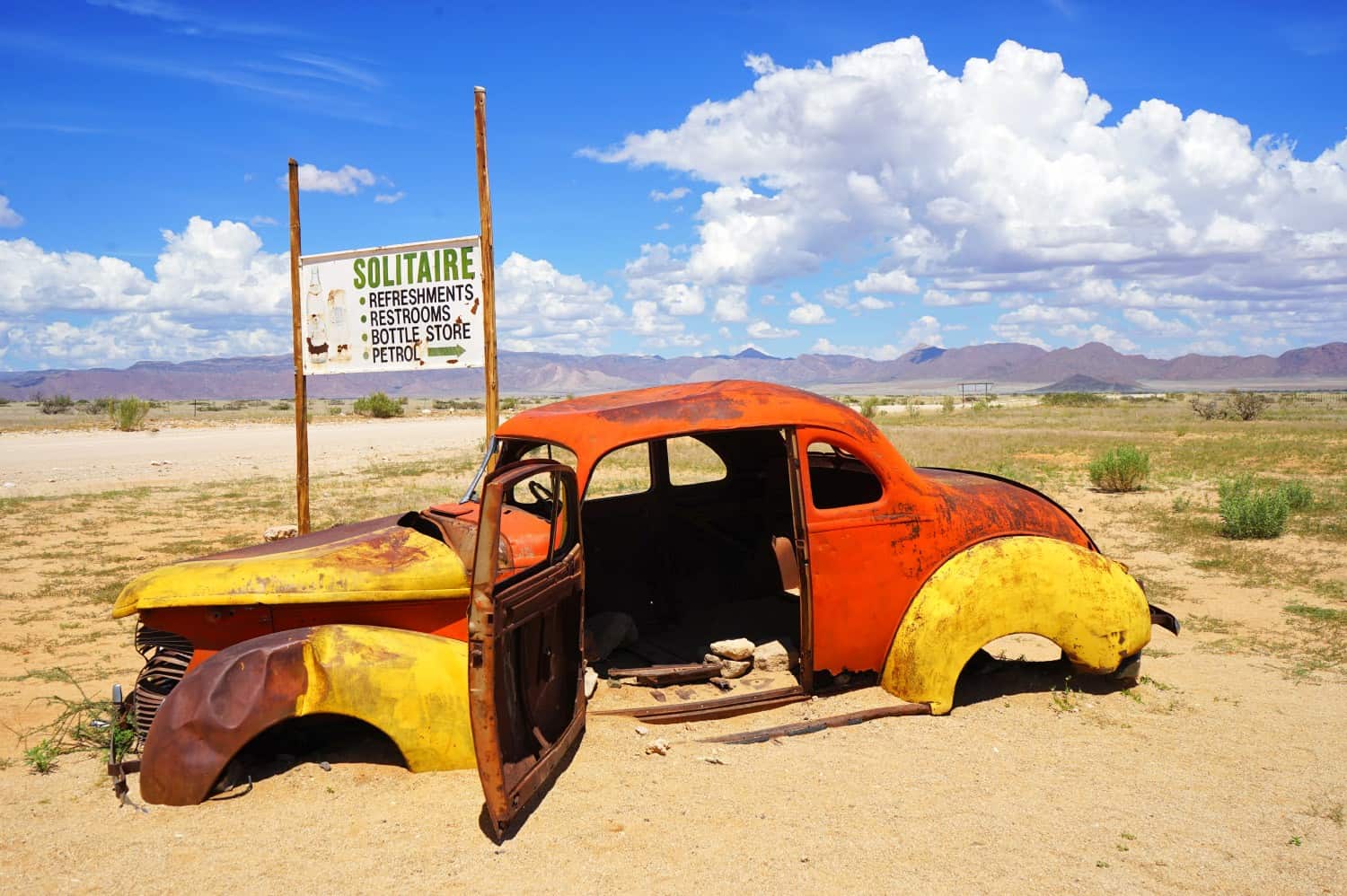
I Loved Visiting During the Low Season
Well, low-ish season. We hit up Namibia in March, which is typically the final month of the rainy season.
We experienced just one hour of rain and the rest of our trip was full of gloriously blue skies. There were fewer tourists, prices for accommodation were almost half what they’d be in high season, and the weather wasn’t bad at all. I highly recommend considering a shoulder-season visit because of this.
Surely there has to be a downside? Yep. We struggled to see anything at Etosha. There are thirty-odd waterholes inside the park and during the dry season, they usually look like this:
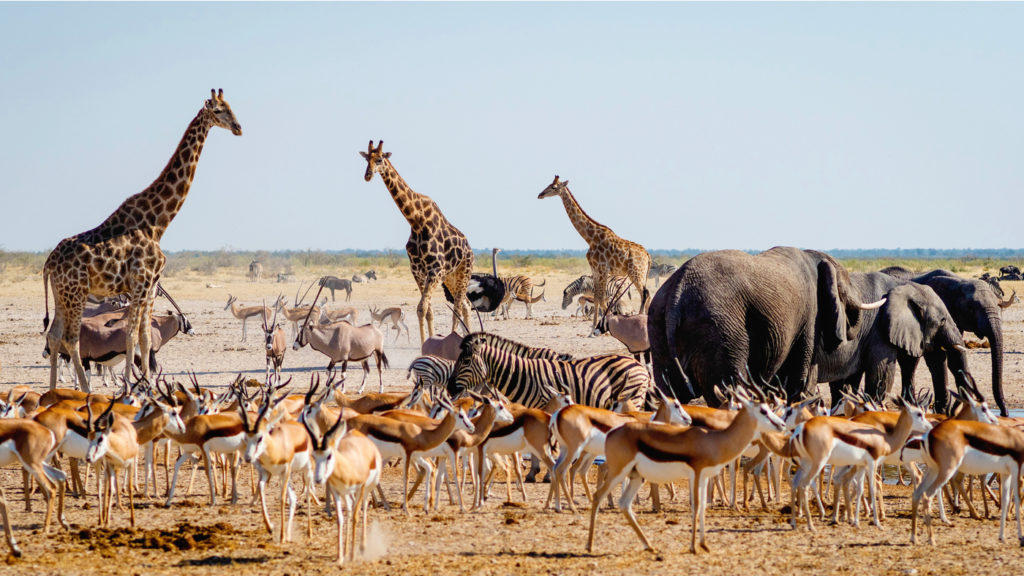
Well, over three whole days of 12-hour drives, Dave and I saw literally nothing at any of the waterholes. Our waterholes looked like this:
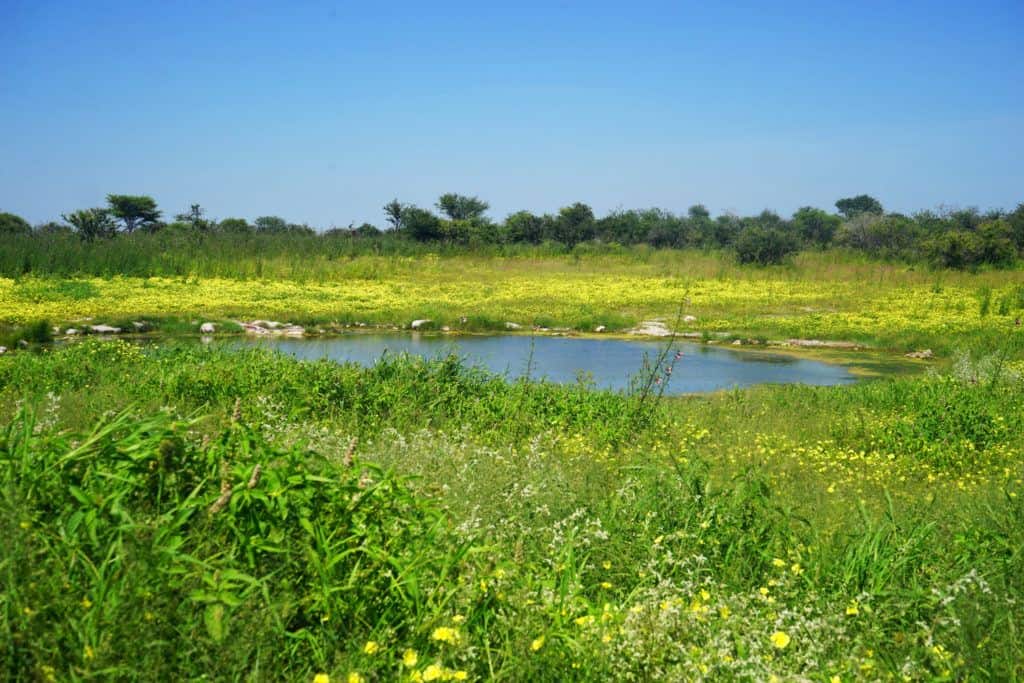
We didn’t even see a bird.
The problem is: during the rainy season, there’s no reason for the animals to go to the waterholes because there’s water everywhere. And being on the tail end of that meant that instead we had to drive around in search of animals in the bushes. We didn’t come up empty handed, though: while we didn’t see a single elephant, we managed to see three black rhinos (super rare) and countless giraffes (my favourite animal).
It was funny, though, to have seen so many spectacular photos of Etosha before arriving, then to end up spending 90% of our time driving from deserted waterhole to deserted waterhole.
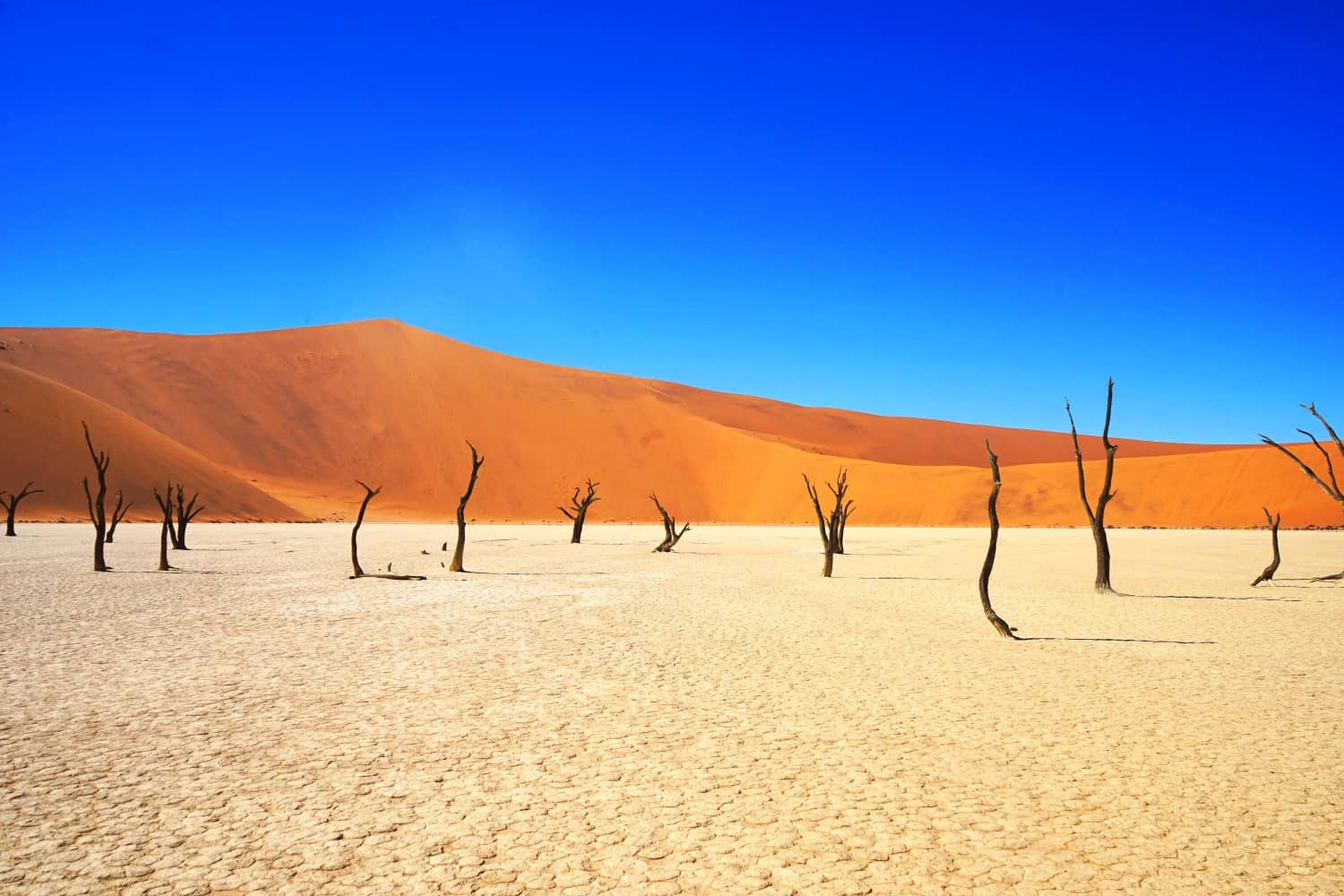
Have I Convinced You to Visit Yet?
I’m not exaggerating when I say travelling in Namibia is one of the best experiences of my life, and I can’t wait to start sharing every incredible minute of my time there. Next up: a detailed itinerary guide followed by dozens of stories to convince you to add Namibia to your bucket list! :-)
Have you been to Namibia before? Would you like to visit?
Related Articles on Namibia 💰 The Cost of Travel in Namibia: My Detailed Budget Breakdown 🦛 The Perfect First Day in Namibia 🐘 Desperately Seeking Elephants in Etosha National Park 🏜 Finding Paradise in Vingerklip: Africa’s Monument Valley 🦭 Seals, Swakopmund, and the Skeleton Coast 🥾 Climbing Big Daddy: An African Travel Highlight 🏚 Exploring Kolmanskop: Namibia’s Ghost Town in the Desert
Lauren Juliff
Lauren Juliff is a published author and travel expert who founded Never Ending Footsteps in 2011. She has spent over 12 years travelling the world, sharing in-depth advice from more than 100 countries across six continents. Lauren's travel advice has been featured in publications like the BBC, Wall Street Journal, USA Today, and Cosmopolitan, and her work is read by 200,000 readers each month. Her travel memoir can be found in bookstores across the planet.
Related Posts

The Cost of Travel in Mauritius: My Detailed Budget Breakdown

How to Spend One Week in Mauritius: An Itinerary for First-Time Visitors

What’s it Like to Travel in Liechtenstein?
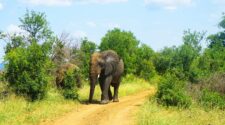
Why You Need to Take a Game Drive in Swaziland/eSwatini
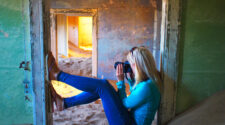
Exploring Kolmanskop: Namibia’s Ghost Town in the Desert
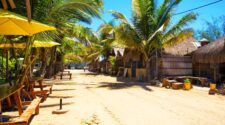
Introducing Tofo: My African Beach Paradise
100 comments.
I have never heard a bad thing about Namibia, and though we haven’t hit Sub-Saharan Africa, it would definitely be atop our list – maybe alongside Botswana? And on top of all you’ve listed, I’ve also heard that they have some decent German beer there since it was a German colony for a while. Any truth to that rumor?
There was *amazing* beer in Namibia! I’ve heard Botswana is pretty expensive and really tough to visit independently, but it’s very high on my list nonetheless. I know you guys would definitely love Namibia though!
Windhoek Lager (best beer in Africa)
Have you convinced me? Actually you have, I would have never thought of visiting there but it looks super amazing and peaceful! It sort of reminds me of Arizona. It sounds like heaven compared to NYC where I am currently at!
-Rachel @ Backcountry Petite
Score! I actually commented several times to Dave that I felt as though we were driving through the U.S. Southwest a lot of the time.
Great post, Lauren! I love all your pictures – especially the one of the night sky and the doors with the sand. It looks SO different than the places I’ve visited in Africa (Uganda and Zanzibar) that I’m very intrigued.
I think you’d love Namibia, Ashley! It’s very different to the other African countries I’ve been to, as well — so arid and empty!
Wow your pictures are absolutely stunning! Namibia has been calling my name lately but as you said it’s so darn expensive. Hopefully one of these days I’ll save up enough to see it. Did you find the food expensive even at local restaurants?
The problem was there often wasn’t any local restaurants. You’ll stay at lodges where the nearest town is several hours away, so you usually have to eat where you’re staying. In Swakopmund and Luderitz, food was slightly cheaper at around $8-10 per meal.
Wow Namibia looks wonderful! Thanks for writing this complete guide. Good to know it is safe. x
It really is the perfect introduction to travel in Africa :-)
Yep! I’m convinced! All I knew of Namibia was the rockin’ sand dunes. But with all this extra awesomeness (aside from the lodging prices) sound right up my alley! What city do you fly into?
I’ve heard of Namibia before, I’m surprised so many others haven’t. It looks wonderful! You have 100% convinced me!
I was there in march and I loved it. I highly recommend it to every one. It’s very safe!
Best regards!
Glad to hear you enjoyed it as well, Rui! :-)
You have definitely convinced me to go to Namibia. I had never thought of it before, but I think I will have to look into a bit now. Look forward to reading more posts about your trip.
I’m so happy to hear that! It’s definitely worth the visit :-)
I enjoyed the read! Amazing photos. Thanks for the tips <3
Glad you enjoyed it, Nadia!
I’ve been to Namibia on honey moon in 1995. Afraid to go back and see it changed. Apart from the occasion, it has been the most fabulous trip I have made. Did you miss the Skeleton coast?
We saw a small part of it while we were driving down to Swakopmund. Managed to see one shipwreck on the beach, but didn’t have enough time to get anywhere else. I would be interested to know if it has changed — it didn’t feel like the type of place that was changing quickly, but that’s totally just me guessing!
Namibia was my first ever solo trip abroad (around 8 years ago) and it was incredible. Yes the driving days are long but it is definitely worth it. The landscapes and hiking are fantastic, like nowhere else I’ve been, and the wildlife is so diverse. Other than South Africa I don’t know what country you can see penguins at one end and all the traditional safari animals at the other end. Looking forward to reading more posts to relive my trip/see how it’s changed.
Totally agree with you, Laura! I was surprised by how diverse the landscapes and wildlife were, and how empty the country the feels.
Looks and sounds like a great trip. Thanks!
It was amazing :-)
Wow, it really looks amazing. Must have been an incredible experience visiting the country.
As I said, the best trip I’ve ever taken. I loved every second I spent in the country :-)
I have to say Namibia looks amazing – it’s never particularly been on my radar, but it definitely is now! Looking forward to more posts on your time there. :)
I’m so happy to hear that, Clazz! It’s one of the coolest countries I’ve ever been to.
And great for children too. The number of ‘cute’ animals identified for airlifting to a proposed zoo in our back garden was extensive! Animals are everywhere: on the beach, by the side of the road, wandering around your lodge or tent. The whole family loved every bit of the holiday.
Ooh, I can imagine! I was filled with childlike excitement over every animal I spotted in Namibia.
I haven’t been before but you have me just about convinced! I’ve heard that the oysters from Namibia are something else as well.
Yes! Oh my god, I had the best oysters of my LIFE in Namibia!
Yep, I’m convinced! Everything looked amazing! Where did you flew from and how much did it cost you?
I flew from Portugal for $250 return with TAAG.
To be honest, this is the first time I’ve heard of Namibia. Probably because I’m from the other side of the globe.. or maybe I need to travel more! Nevertheless, thank you for this post! Very inspiring!
Well, you’re definitely not alone! But hopefully it convinced you to try to make it there one day :-)
Awesome photography. Thank you for sharing these amazing pictures and your experience in Namibia. I can’t wait to visit.
This place looks so stunning. I am one of those who had never heard of Namibia…..glad you shared this post. Thanks!
Glad you enjoyed it, Alex!
Namibia is terrific. I have been there only once but I still remember its beauty…yes it does gives you a lot of pocket pinch but then it’s worth it.
100% worth it!
I’m really excited to delve into the rest of your blog posts about Namibia. I have to confess I knew nothing about it before you visited but it looks like such an incredible country. Loved this introduction into what it’s like the travel there.
Happy to hear you enjoyed the post! Namibia is so underrated!
Namibia has been on my bucket list since I first set foot in Africa, After seeing your images and reading your blog I need to get there! Perhaps it will be the destination booked when I visit Africa again rather than the Safaris I did in 2010 or the Gorilla trekking in Rwanda! Great post!
I highly recommend it! :-)
Good to know, where would you suggest other than sousevlei and kolmanscop?
Walvis Bay, Vingerklip, and Etosha!
Honestly I don’t think it’s that expensive in the grand scheme of things. Sure, it’s not backpacking on a tight budget, but the prices aren’t that bad compared to the rest of the world. And if you compare what you get for the money with what you’d pay in somewhere like Australia, it seems like you definitely got your moneys worth.
That’s true. I guess the only problem is that there isn’t a super easy way to visit on a budget without missing out on a ton of awesome stuff. Most countries around the world will have hostels in most destinations. In Namibia, there isn’t really that option if you want to get outside of the cities and towns. But I agree: if you usually spend this amount of money in other countries as you travel, you’d feel as though you got a lot for your money in Namibia.
If Namibia is ‘Africa for beginners’, as is often said, what a wonderful place to start. Stunning photos, especially the view from the Sesriem Desert Camp. It’s perfect.
Absolutely! It was so easy to visit, and probably my favourite country I’ve now been to in Africa.
Fantastic post about a country I don’t know a lot about. Do they have a dress code in Namibia at all? Do women have to cover up while travelling in the country?
Not really. I would cover up my shoulders sometimes, but usually wandered around in a t-shirt and shorts. Almost all of the tourists I saw in the country were wearing shorts and t-shirts.
Wow it does sound amazing, how many days was this trip? My hubby turns 60 in October, after much nagging he has chosen Namibia.
Great decision! We spent 12 days in the country. Ovita for 1 night – Etosha for three nights – Vingerklip for a night – Swakopmund for 3 nights – Betta Camp for 1 night – Sesriem for 1 night – Luderitz for 1 night – Maltahohe for 1 night – drive to Windhoek and out!
Dear Lauren I am a Namibian, who often enjoys reading visitor’s blogs about my beloved country. It is always interesting to see Namibia through the eyes of other’s…..your photos and posts have been great fun to read. Thanks for the free advertisement……..might I add, Namibia is quite clean, it helps to have a small population density. Nonetheless, we do take pride in keeping it clean, hope you noticed that! Enjoy your travels, hope you make your way back here for an extended journey and with many other wide-eyed visitors in tow! P.S. the dust gets to me too!!! Regards Indileni
Yes, I definitely noticed that! I’m so glad to hear you’ve been enjoying my posts — it’s been a fun country to write about :-)
Hi! Looks like it was a great trip to Namibia. In search of things about this country I found your article. I am interested to go this year there. Can you tell me if you took pills for malaria or vaccine for yellow fever. Thank you
I took malaria pills for my time in Etosha. No yellow fever vaccine — they don’t have it in Namibia.
Hi Lauren, I’m currently finding out as much as I can about Namibia from books and the net, which is where I stumbled on your blog, which I’ve got to say, is excellent. I’d really like to hire a car and go camping, probably with a roof top tent, and only in campsites. My main concern is waking up in the middle of the night, wandering out to go to the toilet and having a close encounter with wild animals. Any advice? Thanks, Tony
It’s not my area of expertise, as I didn’t camp when I was in Namibia, but I’d imagine that you’d be okay in campsites. The animals are very spread out across the country, so it was extremely rare to see them while we were staying anywhere.
Your pictures are so amazing that I want to cry. This is on my list of possibilities for next summer. Thanks for the information!
Ah, thank you! It was easy to take great photos of such a beautiful country :-)
Thanks for a great blog series on Namibia! Great information and very helpful. I’m planning on doing a big road trip in the fall of 2018 and am really looking forward to it!
Sweet! You’ll have an amazing time, Rand :-)
I would like to drive myself through Namibia as I like the independence. However, I know nothing about mechanics and shamefully I’ve never been able to change a flat tire (I’ve tried but I’ve never had the strength to get the bolts off.). So is a tour package the only way to go for me?
You could look into hiring a guide to drive you. That’ll be cheaper than a tour and then you won’t have to worry about tackling the bad roads yourself.
Greetings for Oranjemund,Namibia Lauren,
Thanks so much for highlighting our beautiful country, I see you made Luderitz. Next visit head down to the deep South , Oranjemund was a forbidden town since 1936 due to the vast diamond deposits and only opened to the public towards the end of 2017. We walk amongst the Gemsboks in our streets down here. On the way to the beach last night, I had to stop and shout out the window at all the wild springboks hogging the road. They did not even scatter, but rather stood there giving me the evil eye…. Anyhow, Next time if you make it down here, give us a shout! Thanks again.
Ooooh, I would love to go! Sounds amazing :-)
Awesome read! Namibia is really one of the those countries people don’t seem to know about unless they’ve travelled to Southern Africa, or actually come from the area, like myself. ;) Well, South Africa, but I spent a good few years in that amazing country. Atleast South Africa gives you an idea of where it is directly in the name!
The endless nothingness on the roads is amazing, especially when you drive for hours without seeing a soul.
The amount of wildlife is another incredible thing about Namibia, unfortunate time to travel there in March, whilst you got to experience Nam at its greenest (or there abouts), the animals had plenty of watering holes to choose from, which is a pain when you want to see them ;)
For travelling during the low season, guided tours really are worth it, as the guides all communicate with one another and give each other live information about animal sightings etc. They can be rather pricey though :/
For anyone making a short trip, Erindi Private Game Reserve is a good stop, especially during the low season, the park is one of the largest privately owned reserves, but it is also tiny compared to Etosha, with a lot of the animals you could see in Etosha, the guides are very informed and make a real effort to get you to the animals you want to see (and the tours aren’t too expensive), it’s probably the most worthwhile 1 or 2 nights stay for anyone looking into some wildlife during the low season.
Otherwise, October/November is probably the best time to visit Etosha.
So I think the real question is, when are you visiting again? ;)
Amazing! Thank you so much for sharing! I’d love to get back within the next couple of years — especially because I need to have a better Etosha experience!
Awesome pictures that reminds me of my journey to Namibia although it’s been almost 6 years meanwhile… would go there again any time.
I’ve also published some of my black & white pictures in a Blurb photo book.
Maybe that would be an option for you as well? :)
For all the would-be tourists out there: I am a Namibian and love my country with all my heart! The reasons for my addiction to Namibia`s wild open spaces, spectacular scenery and incredible wildlife are numerous, but the ones standing out for me is the silence (you hear yourself breathe), the fact that you can stop anywhere alongside the road for a cuppa or to pitch your tent without fear of any danger (be it human or nature) and above all….the solitude! Take your 4×4 for an excursion into Damaraland and the Kaokoveld and have your soul completely rejuvenated! The friendly and helpful locals are just the icing on the cake – Namibia for ever. Hope to host you guys soon in our beatyfull paradise – so peacefull, quiet and serene.
Thank you for this post, Lauren! My grandparents lived in Namibia and I was lucky enough to visit them when I was 16. We stayed for 2 months and did a little bit of traveling. Now, 20 years later, I’ve been dreaming of a trip to Namibia with my 14 & 15 yr old daughters and decided to do a little research to see if it was still as empty and beautiful as I remember… From your post it looks like it’s still the perfect place to visit and I’m looking forward to planning a visit next summer. Thanks again.
I just came back from South Africa and that has made me want to visit Namibia. Your blog has now convinced me, although it seems like the dry season is best for animals. What’s the best way to get to Namibia? Is it best to fly to Cape Town and then catch a flight to Windhoek?
Either that or via Angola with TAAG Angola Air — they have some seriously cheap flight deals from Lisbon.
So glad to have come across this overview…
I nabbed a cheap ticket to Cape Town for May of 2019 and am planning on a 3-week Namibia road trip as the focus of my visit.
Looking forward to digging into the accompanying posts soon!
You’re going to have the best trip ever, Chris! Namibia is one of my favourite countries in the world :-)
I recall learning about the Welwitschia plant of Namibia while in school. Recently, an opportunity to travel to Namibia came up and I actually might be able to visit this intriguing country. This post got me even more excited. And the photos are crazy beautiful. thank you!
Oh, wow! I hope you do get to visit, Misael! It’s such a beautiful country :-)
I’m a bit worried that we haven’t booked enough in between stops for our upcoming trip! I have only allowed one day to get from Walvis Bay to Sesriem and one day between all our other destinations. Hopefully our experience of travelling in the Australian outback will help us in Namibia – we have driven over 1,000 sand dunes in our Simpson Desert and tackled corrugated roads like the Gibb River in the Kimberley. We have hired a 4×4 and will be camping – my only fear is meeting a lion in the shower when we do a side trip to Rooiputs in Botswana. I might just use baby wipes for those 2 days!
I have just come across this blog – and just WOW! Namibia looks amazing and the thorough description and itinerary is superb. I’ve recently watched Romesh Ranganathan’s Misadventures where he went to Ethiopia which is another astounding yet non touristic place that people would not think of visiting. I have travelled around the majority of Morocco in a 4×4 over a month and that wasn’t enough time. I’ve travelled all around Australia and NZ over a year – in the outback, NT and WA which have some similarities in terms of plenty of driving and not seeing anyone else for miles and plenty of unsealed road. Both in Aus and Morocco we didn’t seem to have problems with flat tyres but we were deflating / inflating when appropriate. Crazy how you did the trip in a Toyota Corolla.
Sorry for waffling on, I get excited with planning new trips – especially when you say you only need 2 weeks! Anyway just a few questions if you still remember from your time there – How much did you roughly spend during the two weeks, excluding flights, travel insurance, vaccinations. Although these details would be handy to know. – What was the heat like, was it still cool (ish) after rainy season? And were there places to buy / stock up on bottled water or did you kind of need to ration to make it to the next lodge or gas station. – What was the price of gas roughly? – Apart from flat tyres, did you have any major problems or was there anything you were worried out before you went or whilst you were travelling through the country – malaria, insects, the heat etc?
Maybe I need to check out your travel anxiety course again and stop asking questions and just dive right in. It’s been almost a year since I got back from Aus, so I’m gagging to travel properly again but still anxious about Africa. Thank you!
Your website/blog is a true gift. I stumbled on it while planning my trip to hike Hadrians wall and went exploring to see if you had been to Namibia. BINGO. You have an itinerary and everything I need to know for both trips. I can’t tell you how excited and fortunate I feel to have found this site. Thank you!!!
Hi Lauren…We are starting our “Journey Down That Path” yearlong family trip around the world July 1st. Our first month we are renting a 4×4 and touring Namibia.. It’s been on my bucket list since I gave up an opportunity to do Peace Corps work there in the early 90s. We can’t wait to experience all these sites. Thanks for your inspiration!
Hi Lauren. We are travelling to Namibia for the first time in October. I’m just wondering about travel injections. We will be getting Typhoid, Hepatitis A and advised to take Malarone anti malaria tablets as we are visiting Etosha National Park and staying outside of it at El Dorado Guest Farm. Is it necessary to get the rabies vaccine? There are a lot of dogs at this farm. Maybe I’m just being over cautious. Any advice would be greatly appreciated for first timers. Itinerary is arrive in Windhoek, drive to El Dorado Guest Farm in the morning, spend two nights there and then head southwards. Many thanks
I wouldn’t bother with the rabies vaccine. It’s highly unlikely you’ll even be bitten by a dog, and I can’t imagine the owners would be keeping rabid dogs on their property, either! You can tell when a dog has rabies, so the owners wouldn’t just let them hang around their other animals and endanger them and themselves :-)
I don’t see how you would get bitten because I doubt anyone would allow wild dogs roam free on commercial property. You would be fine, don’t just overthink it.
Great tips! In retrospect, would you have splurged on a bigger car better suited for the roads, are was the struggle with the bad roads in your little car worth it? And did you get any flats or have other car troubles?
There are definite pros and cons for each option. If we’d had a bigger car, there’d have been a greater chance of it rolling on the bad roads, for example, and they can be much more expensive to rent while also using more fuel. We really didn’t have too many problems with our car, so would stick with what we drove. We had one flat tyre, right at the end of our trip (on the first bit of paved road we’d had in a fortnight, haha), but it was no big deal. A local actually pulled over within two minutes of us stopping and changed the tyre for us!
If you don’t have much experience on gravel roads, maybe go for the 4WD option, but we didn’t really have any major problems with our Corolla. And the rental cars are definitely well-equipped for any flats you might have, with a spare tyre and a jack.
It just looks like the most beautiful country in the world! I can see why you loved it so much. I bet they’re probably doing ok with COVID with their population all spread out!
I spent 4 months in this beautiful country; 25 years ago. I would highly recommend Waterberg plateau, you would struggle to find a more stunning place on the planet. I will never ever forget this country, I have travelled around the world and visited some fantastic countries, and I can say without a shadow of a doubt, Namibia is by far the country that I will never forget. The stars, the sunset and sunrise, the scenery and the tranquility are my cherished memories.
Namibia has been on my wishlist for several years. You don’t mention renting the jeeps with tents attached. Are you familiar with this option?
Greetings from Canada, perhaps i missed this ,but what would you pack? i see you in jeans in pictures, certainly I dont need safari attire? off to Namibia in September.
Nope, no need for safari attire; I just wore my normal clothes that I wear at home! Jeans and a t-shirt, shorts and a t-shirt, a hoodie in the evening, etc. Everybody else that I saw was just wearing typical clothes, too — very casual. There’s no need to try to camouflage yourself from the animals in Etosha as it’s usually a dusty plain so everything stands out against it!
Hi Lauren, Great article, thanks so much. I was wondering if you booked your hotels before you left for Namibia or just booked as you went during your trip. I’ll probably just follow your itinerary, but I wasn’t sure if I should book ahead. Planning to go in May or June. Thanks, Peter.
I booked in advance. I don’t think any of the places I stayed in were fully booked but I was there during the low season. If at all possible I would recommend booking in advance, though! In some parts of Namibia, the accommodation is spread so sparsely across the country that if you turned up somewhere and couldn’t get a room, you might have to drive for an hour or two to get to the nearest property!
Leave a reply Cancel reply
Your email address will not be published. Required fields are marked *
Meet Lauren Juliff
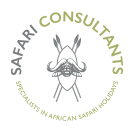
- Namibia Seasons & When to Travel
- Destinations
- Namibia Safaris
The dry season in Namibia is from April to October, with the rains mainly falling from November to March.
In April/early May, the grasses are still long and foliage quite thick after the rains, making game viewing more challenging. More importantly for regions such as Etosha National Park , water is still available in seasonal waterholes throughout the bush, meaning the animals are still quite spread out.
From June onwards these waterholes dry up and game is forced to start relying on fewer permanent water sources. Game viewing is usually best from late June to October, however the landscape can look harsh and very dry at this time, especially in September/ October, because grasses and foliage have withered or being eaten. Animals will begin to disperse again in November/ December as soon as enough rain has fallen for them to survive away from permanent water sources.
The most challenging time of year for game viewing in Namibia is from December to March, unless you are mainly interested in birds. Migrant birds tend to start arriving in late September, staying until March/April.
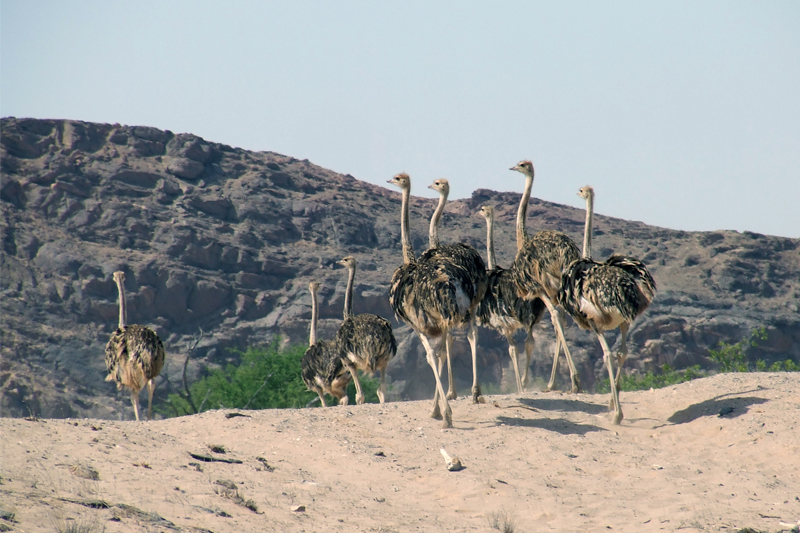
In the desert regions where wildlife viewing is secondary to exploring the landscapes, wildlife can be encountered throughout the year. If your priority in Namibia is purely seeing the landscapes, then you can travel at any time of year, though conditions for travel are not so good between December and March when heavy rains and flooding can damage road surfaces and air transfers can be disrupted by poor weather.
Temperature-wise, Namibia does tend to display typical desert conditions of hot days and cool nights. May to September is the winter period, and whilst day time temperatures can still reach above 30c, it cools down significantly at night. Early mornings can be extremely cold, especially on the coast where cold air is blown in from the Atlantic. From October to April conditions are warmer, and day time temperatures can soar to around 40c, with milder evenings. However, even at the hottest time of year, evenings and early mornings can still be chilly. Humidity is rarely a problem, except along the Caprivi Strip during the rains (November to March).
The weather on the coast is always influenced by the cold Atlantic currents and it is very common for the Skeleton Coast , and coastal towns such as Swakopmund, Walvis Bay and Luderitz, to be shrouded in fog in the mornings.
BEST TIME FOR VIEWING WILDLIFE

Seasons And Their Months in Namibia
What is a Season?
A season is a division of the year based on changes in weather, ecology, and the number of daylight hours in a given region. On Earth, seasons are the result of Earth’s orbit around the Sun and Earth’s axial tilt relative to the ecliptic plane
2022 Intakes in Namibia [Universities, Colleges, VTC Intake]
Overview of seasons in namibia.
Namibia’s climate can generally be divided into three main seasons. The first part of summer is from October to December , with a hot and dry season. Then, from January to April, comes the second part of the summer, a warm and wet season, also known as the ‘rainy season’.
Summer is long, running from October to March (6 months).
This is followed by a short Autumn from April to May (2 months) , although most leaves drop from deciduous trees only from late May.
Winter is relatively short, beginning in earnest in June, and usually ending in August (3 months).
Frequently Asked Questions (FAQ’s)
What is the coldest month in Namibia?
The coldest month is July with an average maximum temperature of 20°C (68°F). February is the most wet month. This month should be avoided if you are not a big fan of rain. August is the driest month.
Is Namibia hot or cold?
The climate is generally arid which means that the potential evaporation is higher than the precipitation, which again results in a very low humidity. In general Namibia’s climate can be described as hot and dry, substantial fluctuations during the seasons or even within one day are typical.
What is high season in Namibia?
The best time to visit Namibia is from July to October, when the temperatures are just above 20°C and the chance of rain is low. This is also the best time for wildlife viewing, making it peak travel season — you will need to plan well in advance.
How is the climate in Namibia?
Namibia is a land of sunshine, with an average of 300 sunny days a year. Winter (our summer) days are generally cloudless, with clear blue skies. In summer, clouds build up in late afternoon. Many travelers assume that because they are traveling to Africa, it must always be warm.
What are the seasons in the Namib Desert?
Dry season –May to October – Winter
- May – It is the end of summer. The rains have stopped, but the scenery is still lovely and green. …
- June – The nights are getting cold and can drop below 10°C/50°F. …
- July & August – The average maximum temperature is 21-25°C/70-77°F. …
- September & October – September is a lovely month.
Does Namibia get snow?
Actually it does snow in Namibia from time to time (the last snowfall was in 2006), but this is a rare event. … Namibia has a subtropical climate with two seasons; a short, hot, wet season, and a longer, cooler, dry season. The wet season is to hot for snow, and the cool season far to dry (and as a rule, still to warm).
What is the best time of year to go to Namibia?
The best time to visit Namibia is from July to October , when the temperatures are just above 70°F and the chance of rain is low. This is also the best time for wildlife viewing, making it peak travel season — you will need to plan well in advance.
Which season is windy in Namibia?
Wind in Namibia is usually calm. The windiest month is November, followed by September and January.
Does it rain in Namibia?
The rainiest area of Namibia is the north-east, where rainfall ranges from 500 to 600 millimeters (20 to 23.5 inches) per year. Winter is dry everywhere, while in non-desert regions (north and east) it rains in summer, from November to March, usually in the form of showers or thunderstorms in the afternoon.
What season is December in Namibia?
Namibia has two seasons, summer (November to April) also known as the rainy season and winter (May to October) also known as the dry season
How hot is Namibia in December?
December Weather in Windhoek Namibia. Daily high temperatures are around 88°F , rarely falling below 81°F or exceeding 94°F. The highest daily average high temperature is 89°F on December 22. Daily low temperatures are around 64°F, rarely falling below 57°F or exceeding 71°F
How hot does it get in Namibia?
Namibia is truly a sunny place, with 300 days of sunshine on average per year. Summer runs from October to April and temperatures can reach 40 degrees Celsius (104º Fahrenheit) which fall at night to cool levels. Average monthly nighttime temperatures range from 20ºC to 34º C (68-93° Fahrenheit) in summer.
Why Namibia is a dry country?
Firstly, the easterly trade winds emerging over the Indian Ocean lose most of their humidity when rising over the eastern escarpment of the Drakensberg Mountains in South Africa. On their way over the continent, they lose further moisture and reach the western escarpment of Namibia warm and dry.
What months have the highest temperature ranges in Namibia?
The warmest months (with the highest average high temperature) are October and November (29.5°C). The month with the lowest average high temperature is July (19.8°C).
Which months are spring in Namibia?
Springtime in Namibia is from September to November and is a wonderful time to travel. The temperatures start to climb but it rarely gets too too hot. The land begins to slowly stir and there is a buzz in the air as everyone and everything waits in restless anticipation of the coming rains.
Related Articles:
- COTA Namibia 2024 Intake (Late Applications)
- 2024 Bridging Programme Intake - Welwitchia University
- NIMT 2024 March Intake & Special Applications – Namibia
- Skip to main content
- Keyboard shortcuts for audio player
'Conan O'Brien Must Go' is side-splitting evidence of life beyond late night TV

Eric Deggans

Conan O'Brien dresses as a Viking in Norway. Conaco/Max hide caption
Conan O'Brien dresses as a Viking in Norway.
To be honest, when I first heard Conan O'Brien was ending his TV talk show in 2021, I assumed news that he might turn to variety shows and online programs to continue his career was some combination of face-saving and wishful thinking.
But after watching the four episodes of his new Max series Conan O'Brien Must Go , it's now obvious — even to a thickheaded critic like me — that leaving late night TV really was liberating for O'Brien. He's leveraged his unique sensibility into several different podcasts, a deal with Sirius XM , specials featuring other stand-up comics and now this travel series for Max — which resembles jokey specials he did for cable channel TBS back in the day.
And as the late night TV genre crumbles under sagging viewership and the decline of traditional media, O'Brien's renaissance also provides an example for the future — where fertile comedy minds and talented performers can spread their work over a much larger canvas.

Pop Culture Happy Hour
Is conan o'brien the best 'hot ones' guest ever discuss., learning a lesson from 'hot ones'.
O'Brien already made a splash recently with his brilliantly maniacal appearance on the interview-while-eating-hot-wings show Hot Ones , slobbering over hot sauces while claiming, as he was checked over by a fake doctor, that "I'm fine! I'm perfectly f*****g fine!"
This is the place where O'Brien shines — he's called it "this strange phantom intersection between smart and stupid" — and it's on full, freakish, super silly display in every episode of Conan O'Brien Must Go .
The conceit of the show is pretty simple. O'Brien heads overseas to visit average folks in Norway, Argentina, Thailand and Ireland who had once Zoomed in to speak with him on the podcast Conan O'Brien Needs a Fan . Sometimes the visits seem like a surprise — he catches one aspiring Norwegian rapper in shorts and Crocs after popping up on his doorstep — and others seem a bit more planned, including his visit to a radio show with about four listeners in Buenos Aires.
Each episode begins with a solemn monologue which sounds like it is delivered by the film world's most eccentric voice, German filmmaker and actor Werner Herzog (he's not credited in the show and when asked, a publicist at Max shared a quote from O'Brien: "I can neither confirm nor deny the voice in question.")
The torturous accent by "Herzog" makes every line sound absurdly hilarious, describing O'Brien as "the defiler ... with dull, tiny eyes ... the eyes of a crudely painted doll ... he scavenges in distant lands, uninvited, fueled by a bottomless hunger for recognition and the occasional selfie."
Now that's smart. And oh so stupid.
A funhouse mirror version of a travel show

O'Brien performs onstage with a fan in Norway Conaco/Max hide caption
O'Brien performs onstage with a fan in Norway
Fans of O'Brien's Conan Without Borders specials on TBS already know what his style is when he tackles a travel show — throwing himself into outrageous reactions and situations while working his quirky brand of improvised conversations with hapless bystanders.
In the Max series Conan O'Brien Must Go , that includes O'Brien offering screechy vocals onstage during a performance of a Norwegian emo/rap band. Or asking provocative questions of a couple therapist/sex expert. Or getting beat up in a "fight" with a 10-year-old boy in a bar.
It's all an excuse for O'Brien to unleash his energetic wit, taste for silly absurdity and skill at drawing laughs from sympathetic — if often befuddled — strangers. Whether you enjoy this special will depend on how you feel about O'Brien's style, which can feel a bit like the world's best class clown doing everything possible to make you crack a smile.
(Rent a family in Norway so they can say goodbye when he gets on a SeaCraft? Check. Get local artists to paint a mural of O'Brien, a soccer star and The Pope on the side of a building in Argentina? Double check.)

'Conan O'Brien Needs A Friend' Is A Joke Name For A Podcast — Sort Of
But what amazes in a larger sense is how O'Brien has turned his sensibility into a comedy brand to fuel work on many different platforms. And, at age 60, with more than 30 years as a comedy star, he's been released from the shackles of any genre to shine wherever he chooses — whether it's an episode of Hot Ones or a streaming service which sometimes looks like a collision between True Detective and 90 Day Fiancé .
Leaving late night TV as late night left him
I'm old enough that I started covering TV not long after O'Brien made his first move from the shadows of life as a comedy writer – he worked on Saturday Night Live and The Simpsons — to succeed David Letterman in 1993 as host of NBC's show Late Night (now hosted by Seth Meyers). Back then, NBC gave O'Brien years to figure out the show, honing his smartly serious comedy in a way that would inspire then-teenage fans like Seth Rogen and Bill Hader .
O'Brien left NBC after a disastrous deal where the network tried to make him host of its venerated late night program The Tonight Show and also keep its former host Jay Leno at the network. He moved to a late night show on TBS in 2010, but even then, there was a sense that his creativity was a bit hemmed in by the format.

After 28 Quirky Years, Conan O'Brien Is Leaving Late Night
By the time he left his TBS show Conan for good, it seemed O'Brien was already caught in a trend which would hobble other late night shows — as young viewers consumed his content online and ratings on cable dropped.
Now, with a podcast and digital media company worth many millions and growing status as a TV comedy legend still willing to do almost anything for a laugh, O'Brien is proving there is a successful life beyond late night.
Particularly, if you have the talent to play the fool while leaving little doubt you're also the smartest person in the room.
Screen Rant
Young sheldon season 7's emotional series finale teased by stars.
Young Sheldon stars hint that the season 7 series finale of the hit CBS sitcom will pack a weighty emotional punch, and viewers might need tissues.
- Young Sheldon stars Iain Armitage and Annie Potts tease the series' emotional finale emotional.
- Audiences can expect a satisfying conclusion to the series, with hints at big emotional events in store.
- While Young Sheldon is ending, a spinoff show is in the works that will follow Georgie and Mandy.
Two of the stars of Young Sheldon have revealed how the upcoming season 7 series finale will pack a heavy emotional punch. Serving as a prequel to Chuck Lorre's hit sitcom The Big Bang Theory , Young Sheldon , which stars Iain Armitage in the titular role, debuted on CBS in September 2017, and followed the early life of child-prodigy Sheldon Cooper , growing up with his family in East Texas. With Young Sheldon season 7 , which premiered in February 2024, set to be the final season, speculation has been rife about what the final episode will have in store.
In an exclusive interview with Variety , Armitage, and Annie Potts who plays "Meemaw" on the show, discussed what fans can expect from the final episode, and how the conclusion to the series is set to be a bit of a tearjerker. The duo reminisced about their time on the show, shared their disappointment at the series being canceled, and, when asked how many tissues fans might need for the finale, they revealed that they believe it will be an emotional affair for audiences . Read Potts and Armitage's comments below:
Potts: A box of tissues…with a roll of paper towels from the kitchen. Armitage: Backup, if it plays out right? I’m hoping so.
Will The Young Sheldon Finale Be Satisfying & What Does The Future Hold?
With another spinoff seemingly in the works, fans can enjoy more from the world of the big bang theory.
Young Sheldon has had a strong run on CBS, and some might have been surprised to hear that the show will not be returning beyond season 7. One of the defining elements of making a great show is knowing when the time is right to end things and do justice to the stories told over that time. What's more, CBS was likely forced into the cancelation due to the age of the character , and the need to maintain canon.
One of the defining elements of making a great show is knowing when the time is right to end things in a way that is satisfying, and does justice to the stories that have been crafted over that time.
While it's unclear what twists and turns the finale might bring, Young Sheldon season 7 has set the stage for George's death , and this could be one of the big weighty emotional events Potts and Armitage are referring to. There needs to be a satisfying conclusion that remains true to what The Big Bang Theory has already set in place for the character , and ending Young Sheldon in the right way will be vital.
Young Sheldon season 7 airs every Thursday, 8pm ET on CBS.
Even though the show is finishing, audiences can take comfort from the fact that a Young Sheldon spinoff show is in the works , and this will seek to continue the story in some capacity. What is next for Potts and Armitage remains unclear, but they are two stars at opposite ends of the career spectrum, and it seems certain both will continue to work on successful projects even after Young Sheldon .
Source: Variety
Young Sheldon
A spinoff of the sitcom The Big Bang Theory, Young Sheldon follows the youth and coming-of-age of Sheldon Cooper during his childhood in Texas as he pursues science and academia. The show also follows his parents, siblings, and Mee-Maw, painting a picture of the world where Sheldon grew up.
Nicola Coughlan and Luke Newton Hold Hands at Bridgerton Season 3 Premiere in Australia
Penelope and Colin's love story will be the main plot of the upcoming season.

Every item on this page was chosen by a Town & Country editor. We may earn commission on some of the items you choose to buy.
The Netflix romance series, based on Julia Quinn's bestselling novels of the same name, is set to return next month with new leads: Nicola Coughlan, who plays Penelope, and Luke Newton, who plays Colin. (The third season will take its inspiration from Romancing Mister Bridgerton , the fourth book in Quinn's series.)
The global press tour for Bridgerton season three kicked off this past weekend in Australia, with Coughlan and Newton walking the red carpet together. They sweetly posed holding hands.

"We've known each other now five years and people were like, 'What did you do to build the chemistry?' And I'm like, 'Well, we just stopped repressing it, and then it was fine, we didn't have to do anything,'" Coughlan said at the premiere, per a clip shared by Elle Australia .
In seasons one and two of Bridgerton , Penelope was pining for Colin, and in the final episode of last season , she overhears him telling his friends he would never court her. "I don't think he means it in a horrible way," Newton told Town & Country around the season two premiere, "but also I think he does see her as a friend. He sees her as this best friend that he's had growing up. So he's clouded by that, and it comes out in the wrong way. He wants to say 'she's my best friend,' but he doesn't wanna play that in front of the boys." The past two seasons set up the friends-to-lovers trope that will be at the heart of season three.

For the Australian premiere, Coughlan wore a custom Richard Quinn gown, and Newton wore AMI Paris . Coughlan wrote on Instagram "A special thank you to THE Richard Quinn- I contacted him because I have been obsessed with this dress since I first saw it on the runway and dreamed of wearing it. I asked him if he and his brilliant team made it for me and they they did and it's better than I ever could’ve imagined."
Though the Australian premiere took place this past weekend, there's still a few weeks until audiences around the world will be able to tune in: Bridgerton season three, part one premieres on May 16, and part two drops on June 13.
Emily Burack (she/her) is the Senior News Editor for Town & Country, where she covers entertainment, culture, the royals, and a range of other subjects. Before joining T&C, she was the deputy managing editor at Hey Alma , a Jewish culture site. Follow her @emburack on Twitter and Instagram .
@media(min-width: 40.625rem){.css-1jdielu:before{margin:0.625rem 0.625rem 0;width:3.5rem;-webkit-filter:invert(17%) sepia(72%) saturate(710%) hue-rotate(181deg) brightness(97%) contrast(97%);filter:invert(17%) sepia(72%) saturate(710%) hue-rotate(181deg) brightness(97%) contrast(97%);height:1.5rem;content:'';display:inline-block;-webkit-transform:scale(-1, 1);-moz-transform:scale(-1, 1);-ms-transform:scale(-1, 1);transform:scale(-1, 1);background-repeat:no-repeat;}.loaded .css-1jdielu:before{background-image:url(/_assets/design-tokens/townandcountrymag/static/images/diamond-header-design-element.80fb60e.svg);}}@media(min-width: 64rem){.css-1jdielu:before{margin:0 0.625rem 0.25rem;}} Bridgerton @media(min-width: 40.625rem){.css-128xfoy:before{margin:0.625rem 0.625rem 0;width:3.5rem;-webkit-filter:invert(17%) sepia(72%) saturate(710%) hue-rotate(181deg) brightness(97%) contrast(97%);filter:invert(17%) sepia(72%) saturate(710%) hue-rotate(181deg) brightness(97%) contrast(97%);height:1.5rem;content:'';display:inline-block;background-repeat:no-repeat;}.loaded .css-128xfoy:before{background-image:url(/_assets/design-tokens/townandcountrymag/static/images/diamond-header-design-element.80fb60e.svg);}}@media(min-width: 64rem){.css-128xfoy:before{margin:0 0.625rem 0.25rem;}}

Kate & Anthony to Return for More Bridgerton
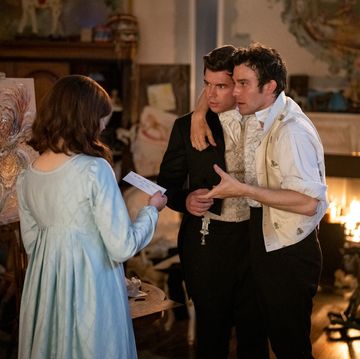
Why Isn't Benedict the Lead of Bridgerton S3?

Why Won't Daphne Be in Bridgerton Season 3?

Who Plays Francesca Bridgerton?
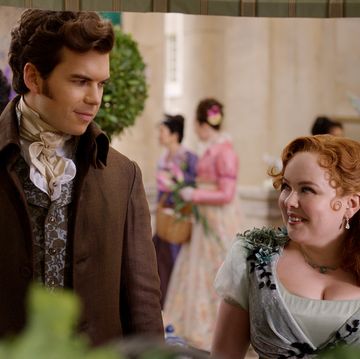
Everything We Know About Bridgerton's Third Season
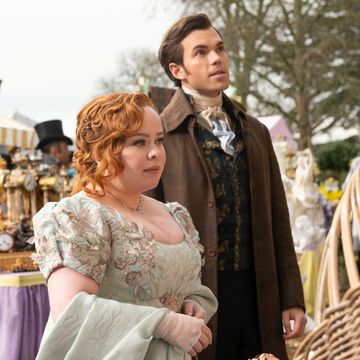
The 'Bridgerton' Season 3 Trailer Is Here
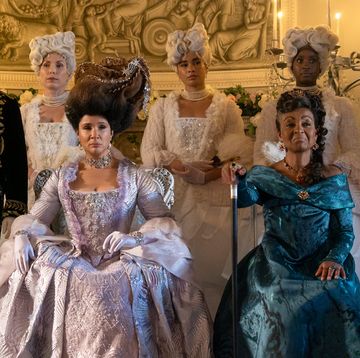
How Queen Charlotte’s Story Changed Bridgerton
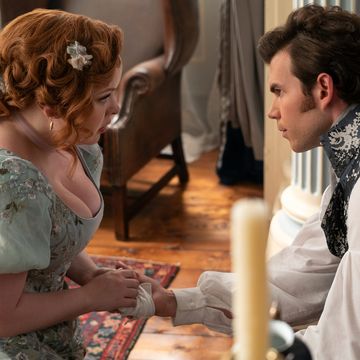
Season 3 of Bridgerton Is One For The Wallflowers

Jonathan Bailey at the Golden Globes

Bridgerton's Ruby Barker on "Psychotic Breaks"

See the Bridgerton Stars at Wimbledon

IMAGES
COMMENTS
April, May and November are best for shoulder-season discounts and exploring away from the crowds. April and May are lovely times to be in Namibia. Much of the country is covered in shades of vivid green, the rains have washed away the late dry-season dust and the air is exceptionally clear. Daytime temperatures range from 24ºC to 28ºC (75ºF ...
Namibia Travel Guide Best Time To Visit. 4.6/5 - 222 Reviews. 161 Namibia Safaris. Namibia. ... especially Etosha, is in the Dry season from May to October. Namibia is a scenic country and can be visited throughout the year. The colors will be most vibrant during and after the Wet season. October to February can be unpleasantly hot.
The peak tourist season in Namibia runs from July to October, coinciding with the dry winter months. During this period, the weather is mostly pleasant, with warm days and cool nights, making it ideal for wildlife watching and outdoor activities. ... The Rough Guides to Namibia and related travel guides. In-depth, easy-to-use travel guides ...
The average temperature hovers between a low of 19°C and a high of 30°C. The start of January is a popular time of year to visit Namibia, with the Christmas holidays continuing with the New Year. But the rest of the month is considered low season. In fact, visitors at this time of year should expect heavy rains, which fall across an average ...
Best time to visit. The best time to visit Namibia is from July to October, when the temperatures are just above 70°F and the chance of rain is low. This is also the best time for wildlife viewing, making it peak travel season — you will need to plan well in advance. The Northern Hemisphere summer is warm and sunny, albeit with cold nights ...
Overall Namibia Travel Experience by Season Fall (March through May) Humidity and temperatures combine to make this season feel warm. Highs range from 86.5°F (30.3°C) and 76.9°F (24.9°C) with colder temperatures in the later months. Rain is extremely rare with 0 to 1 days of significant precipitation per month. Fall is the busiest for ...
The best time to visit Namibia is the dry winter season (June to October), when wildlife clusters around waterholes, leading to thrilling encounters with predators. Yet as our guide to the best time to travel to Namibia explains, in a country that enjoys 300 sunny days annually, the December to March rainy season brings relief, baby animals and ...
Visiting Namibia during May and June. May is the start of winter and is highly regarded as the best time to go to Namibia, as it marks the start of peak safari season. The conditions are perfect for game drives, with little to no rainfall and a low humidity. This is when wildlife start gathering around watering holes as the rivers and other ...
No matter high or low season - this remote corner of Namibia never feels crowded. Damaraland. Namibia's Damaraland is an excellent travel destination all year-round. During the country's low season between November and March, you may benefit from better rates at lodges and camps; and there will usually be fewer tourists at popular sites.
Namibia is a year-round destination, but above all else, its distinct rainy and dry seasons determine the best (and worst) time to visit. Whether you want to see the Sossusvlei dunes of the Namib Desert, spot game in the wildlife-rich Caprivi Strip and Etosha Pan, or explore the flower-strewn Kalahari Desert and shipwreck-strewn Skeleton Coast, there's a best season for you. Read on to learn ...
During May and June, Namibia is probably at its best. The desert still looks green and colourful, the rains have reduced the dust, the temperature is pleasant, it's dry and sunny and the wildlife is slowly gathering again around the waterholes looking for hydration. The tourist season has not started yet, so no crowds, it's easier to find ...
The most popular travel time in Namibia is the dry season between June and October. These months are also the best time to visit Etosha National Park. If wildlife viewing is not at the top of your list, travelling in the low season can have advantages. We share advice on the best time to travel depending on different regions and seasons.
The months of September and October before the rainy season begins are particularly ideal. Determining the best time to travel in Namibia is a luxury problem, however, as every month has its own special charm. Best Time to Visit the Regions Find the best time to visit the regions (Namibia) in the following overview.
Green Or Low Season. From around November to April, the desert landscape of Namibia comes to life with green pastures and millions of vibrantly coloured flowers throughout the summer months of very hot days, warm nights, and infrequent rain. Only around 65 days of the year do you typically get rain. One of the quietest periods to visit Namibia is during low season, when you can find better ...
January: a rainy month with high humidity levels. February: one of Namibia's wettest months of the year; great for bird-watching. March: the third and last month of the rainy season is wet and humid. April: a very fresh, green month; some rain but also lots of clear weather. May: a favourite month: the landscape is usually beautiful and green ...
Overall, the peak season in Namibia offers excellent wildlife viewing opportunities, pleasant temperatures, and the chance to see iconic landscapes like the towering sand dunes of the Namib Desert. ... Choosing the best time to travel to Namibia is essential for a fulfilling and memorable experience. Each season offers its own unique advantages ...
NAMIBIA TRAVEL TIPS | DRIVING IN NAMIBIA--#15 NAMIBIA IS THE PERFECT ROAD TRIP DESTINATION. Namibia is vast, which we're sure you're now aware of. Because of this, it's the perfect destination for an epic road trip. The beauty of road tripping through Namibia is having the freedom to travel at your own pace, and go wherever you want to go.
You can hit up the Namibian desert for sand dune climbing at sunrise. There are beaches and coastlines full of shipwrecks to explore. The darkest skies in the world are in Namibia, so the Milky Way is always shining brightly above your head at night. Oh, and there's a ghost town in the middle of the desert. Badass.
The dry season in Namibia is from April to October, with the rains mainly falling from November to March. In April/early May, the grasses are still long and foliage quite thick after the rains, making game viewing more challenging. More importantly for regions such as Etosha National Park, water is still available in seasonal waterholes ...
Dry season -May to October - Winter. May - It is the end of summer. The rains have stopped, but the scenery is still lovely and green. …. June - The nights are getting cold and can drop below 10°C/50°F. …. July & August - The average maximum temperature is 21-25°C/70-77°F. …. September & October - September is a lovely month.
October is the shoulder season for travel to Namibia. Travelers who don't mind the heat are still drawn to the national parks and other natural areas for wildlife viewing and bird-watching before the rains start in earnest later in the month. As a large and somewhat underrated country, few places in Namibia get crowded even during peak season.
November is the start of Namibia's long, hot, wet summer. It's low season for travel, but that's great news if you don't mind hot weather: bird-watch in the Caprivi Strip, seek out migrating whales off Walvis Bay, and spot seals (and a lot of shipwrecks) along the Skeleton Coast. Read on to learn
Seasons Travel and Tours Namibia was established in 2017 with the primary purpose of providing travel managements services. We are a 100% Namibian owned company. Arno Henker Haus, Erf 1654, 65-73 Independence Avenue, Windhoek . Arno Henker Haus, Erf 1654, 65-73 Independence Avenue, Windhoek +264 61 215 456 ...
Yet, he does travel to seven different destinations, including Sweden, Italy, Slyt (an island in Germany), Saint-Tropez, and Milos, in Greece. Season two will premiere on March 8, 2024.
A funhouse mirror version of a travel show. Enlarge this image. O'Brien performs onstage with a fan in Norway Conaco/Max hide caption. toggle caption. Conaco/Max O'Brien performs onstage with a ...
Two of the stars of Young Sheldon have revealed how the upcoming season 7 series finale will pack a heavy emotional punch. Serving as a prequel to Chuck Lorre's hit sitcom The Big Bang Theory, Young Sheldon, which stars Iain Armitage in the titular role, debuted on CBS in September 2017, and followed the early life of child-prodigy Sheldon Cooper, growing up with his family in East Texas.
At long last, Bridgerton season three is just around the corner. The Netflix romance series, based on Julia Quinn's bestselling novels of the same name, is set to return next month with new leads ...
In order to keep providing you with our global services, Maersk is revising the Peak Season Surcharge (PSS) for all 20, all 40 and 45 dry containers China and Hong Kong China to Angola, Cameroon, Congo, Congo, Dem.Rep.of, Equatorial Guinea, Gabon, Namibia, Central African Republic, Chad from 29-Apr-2024.